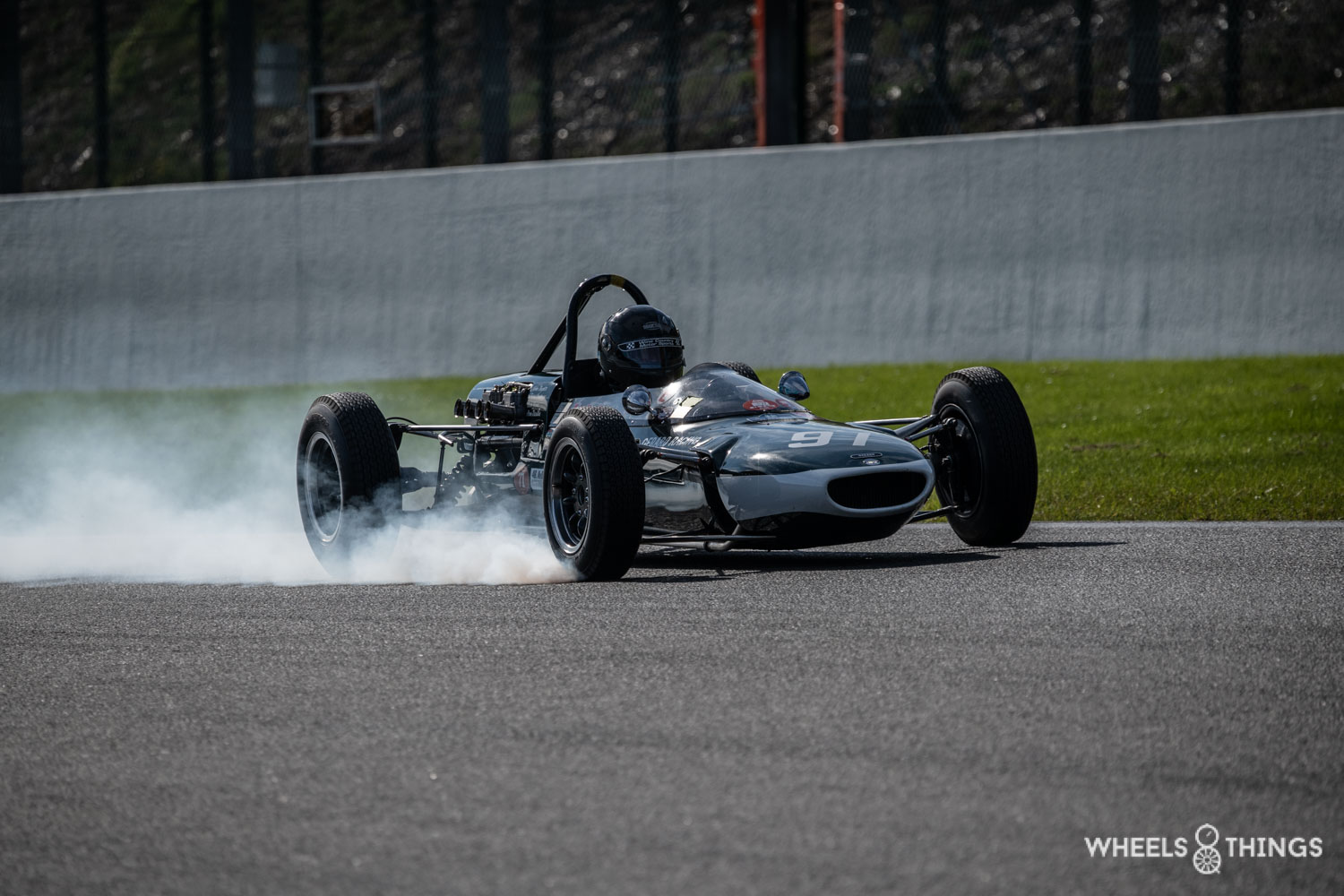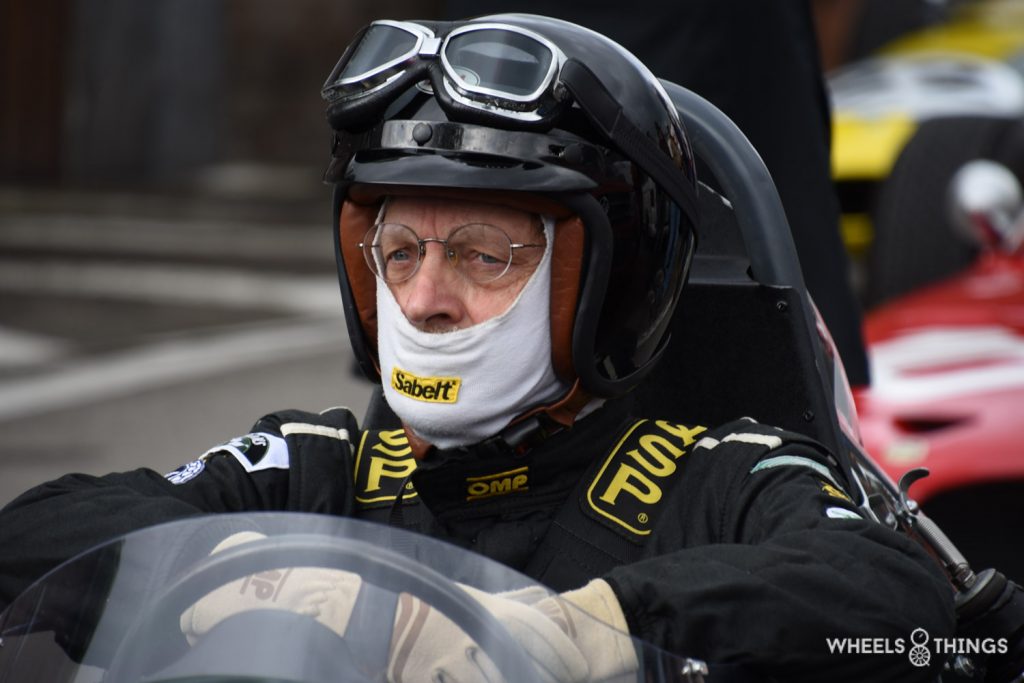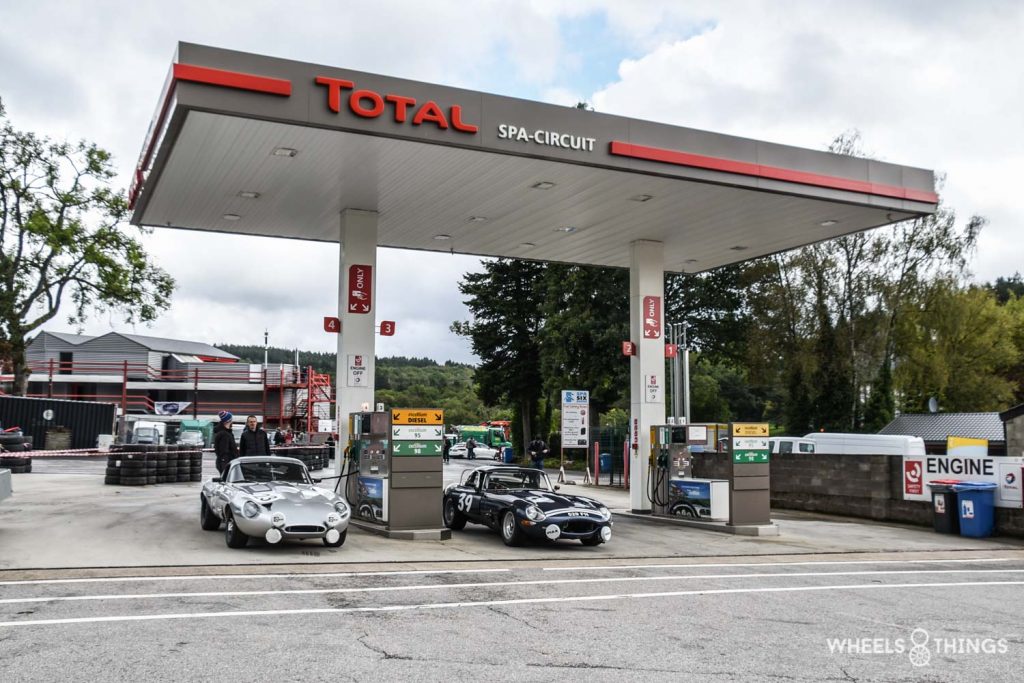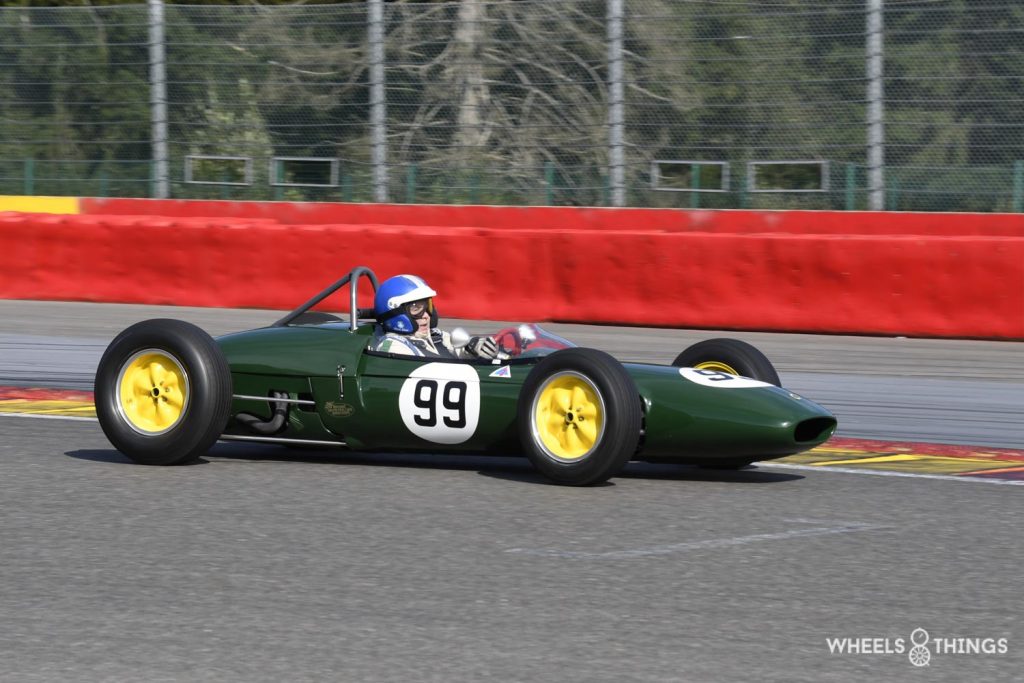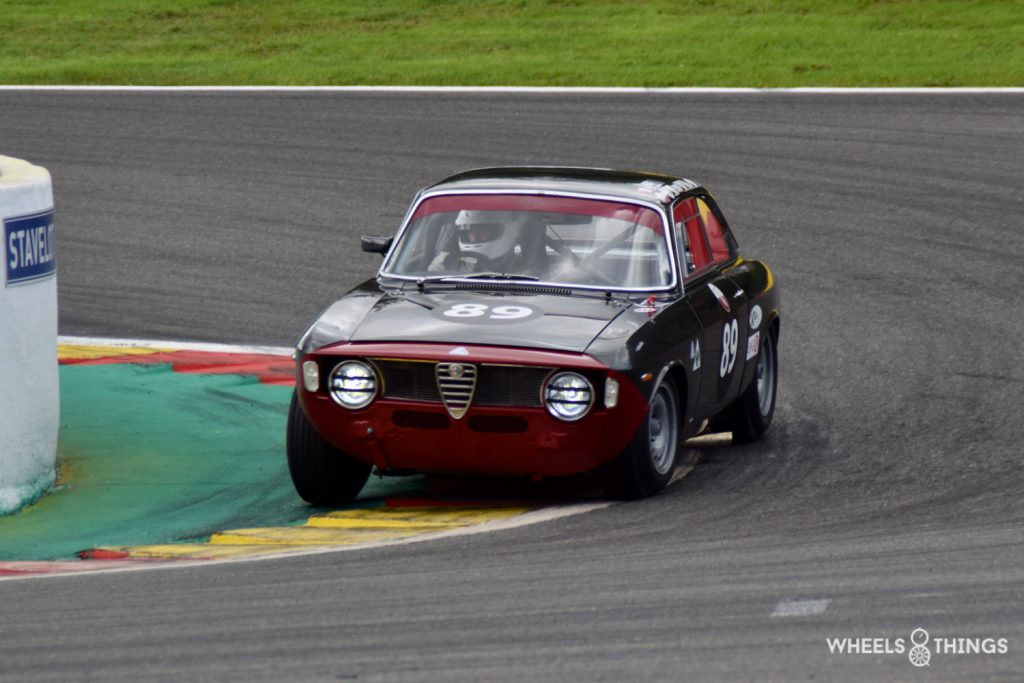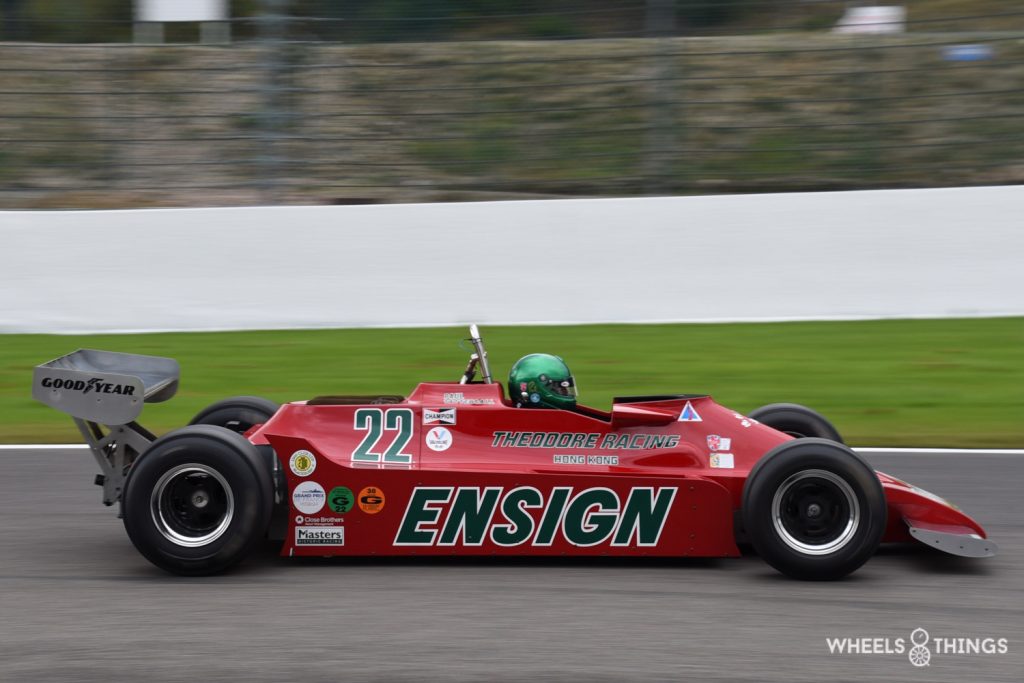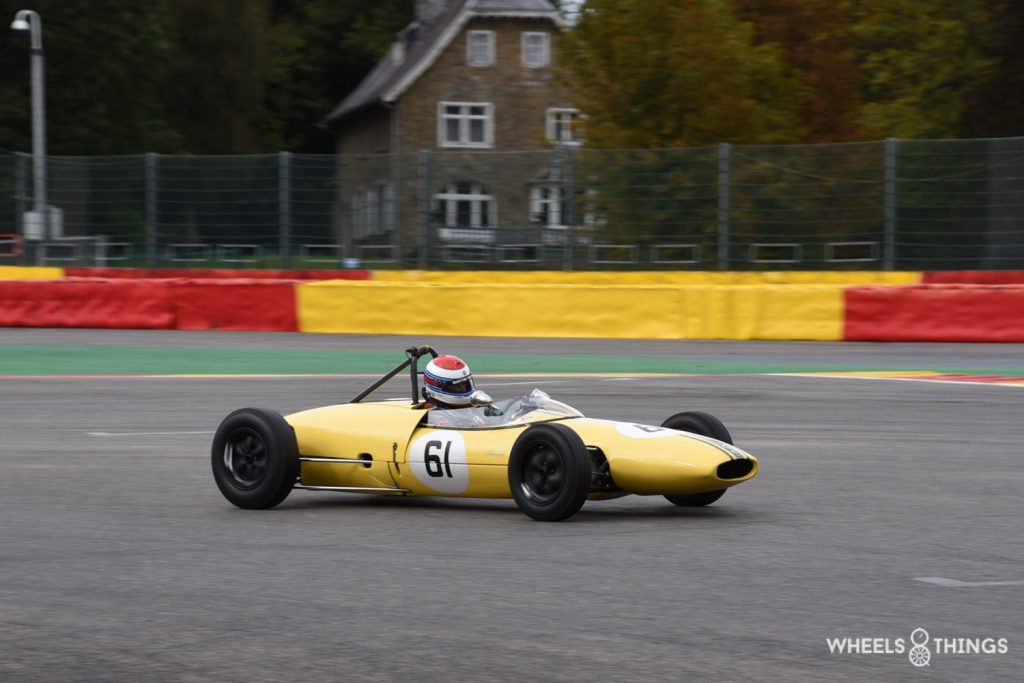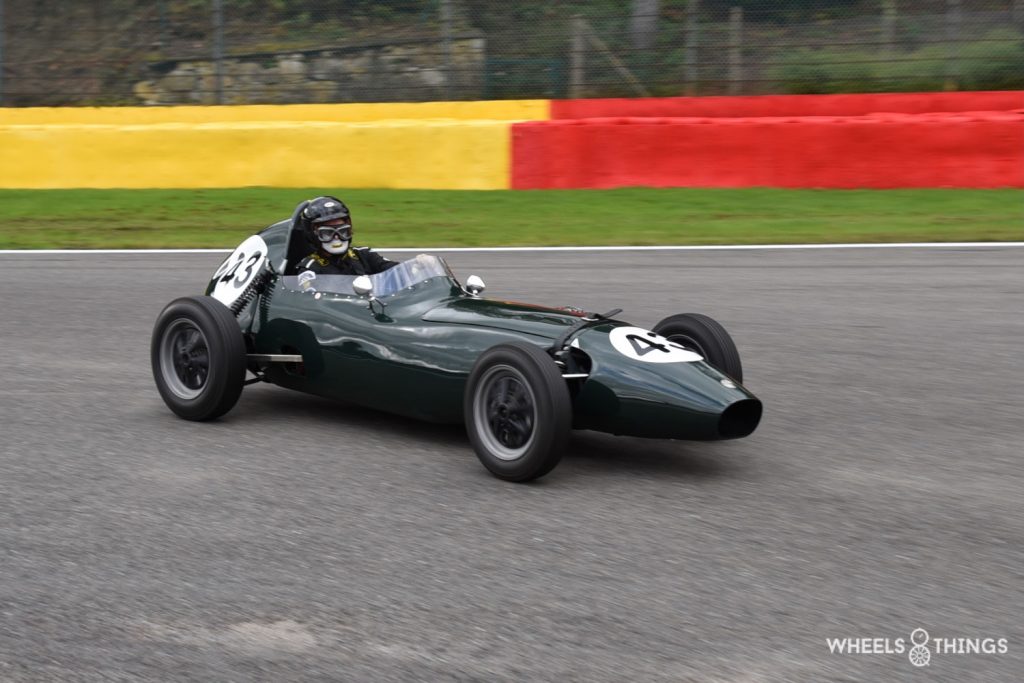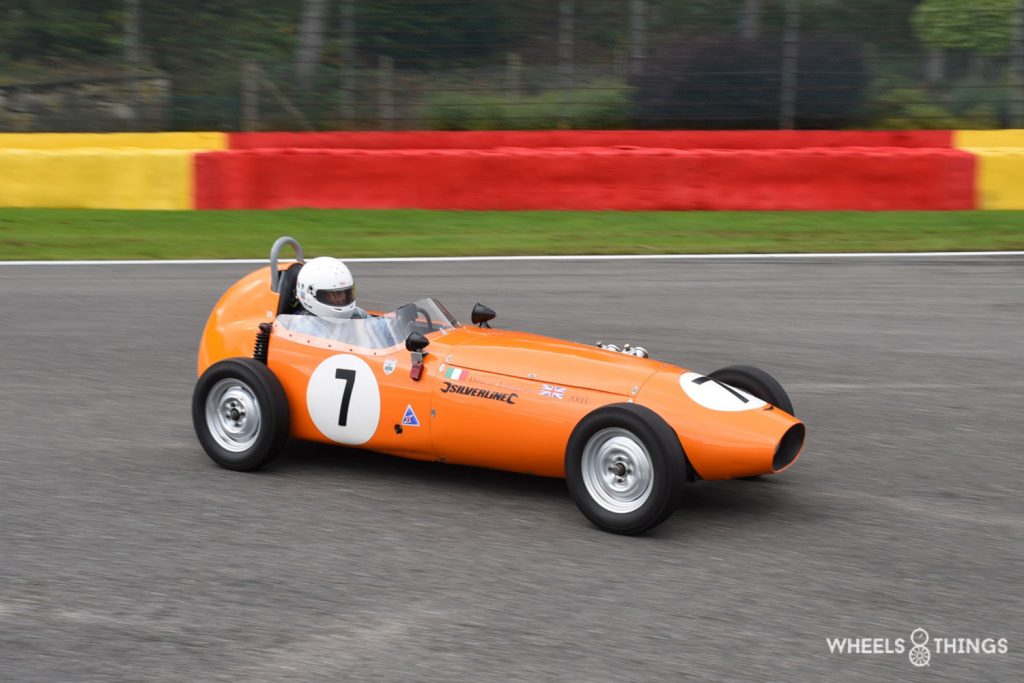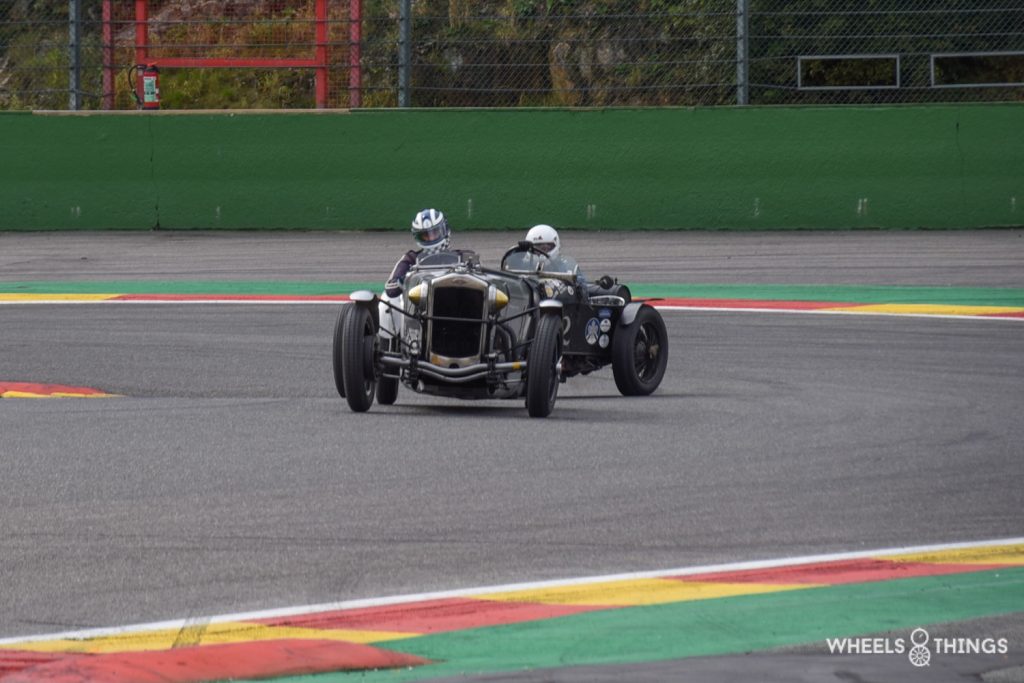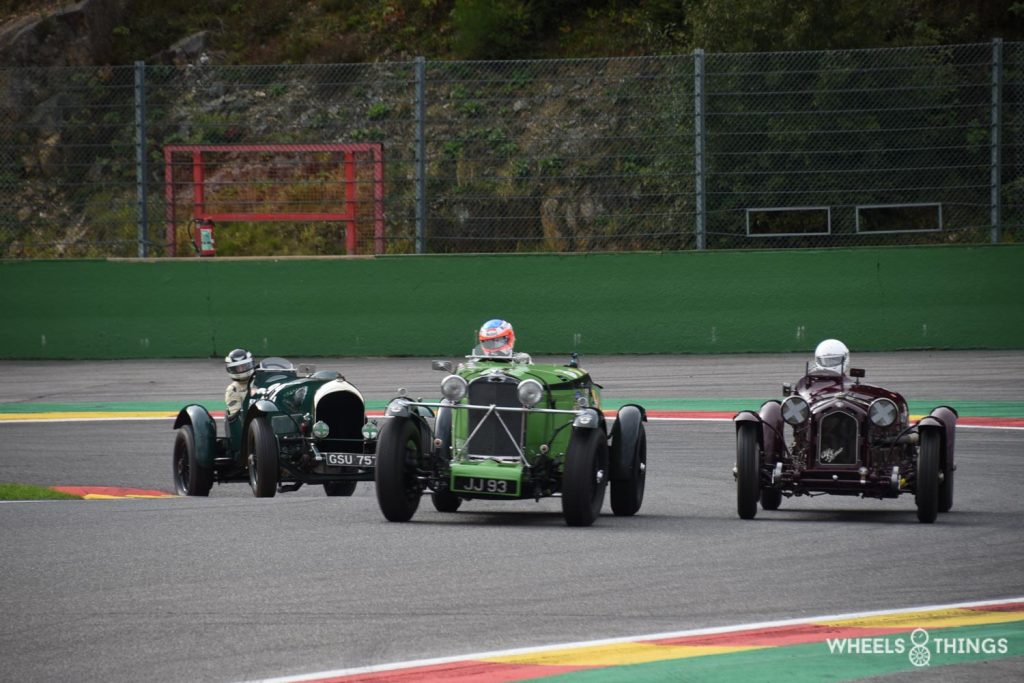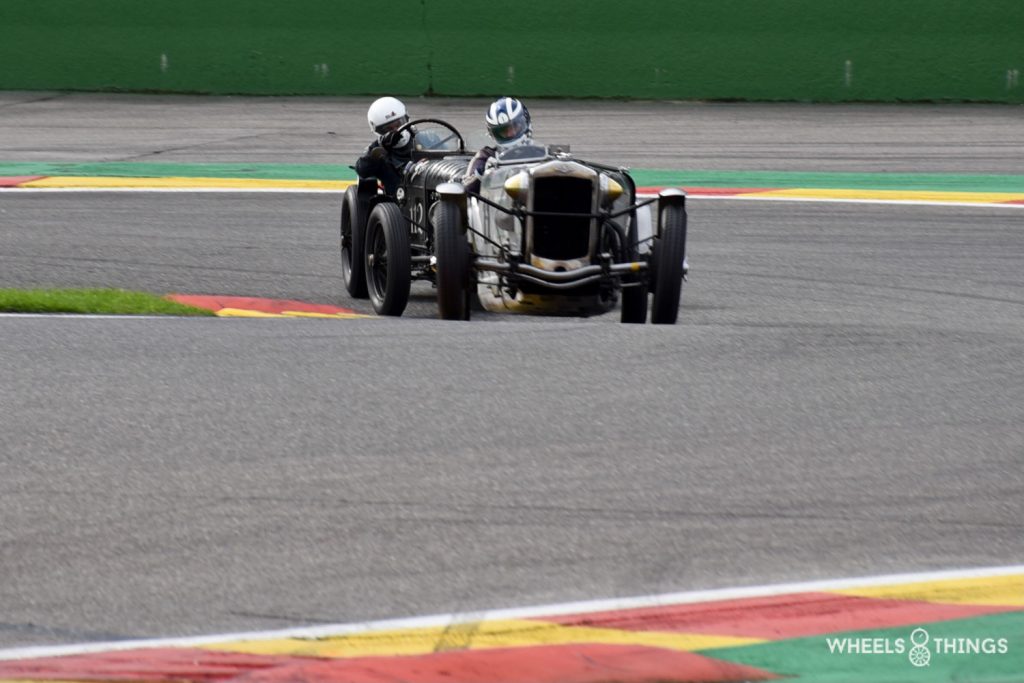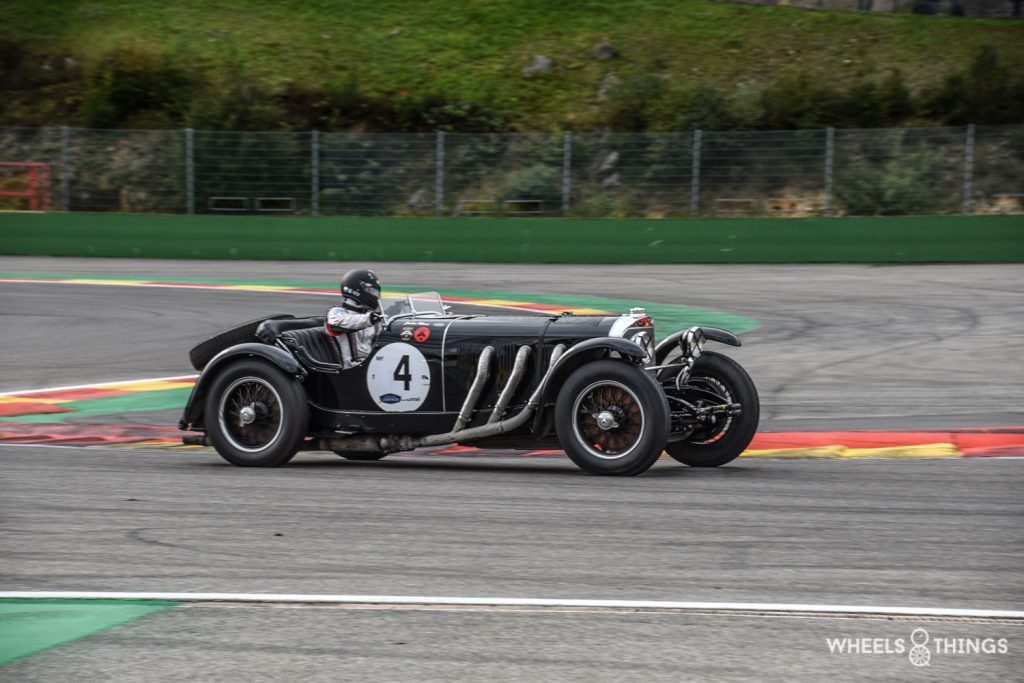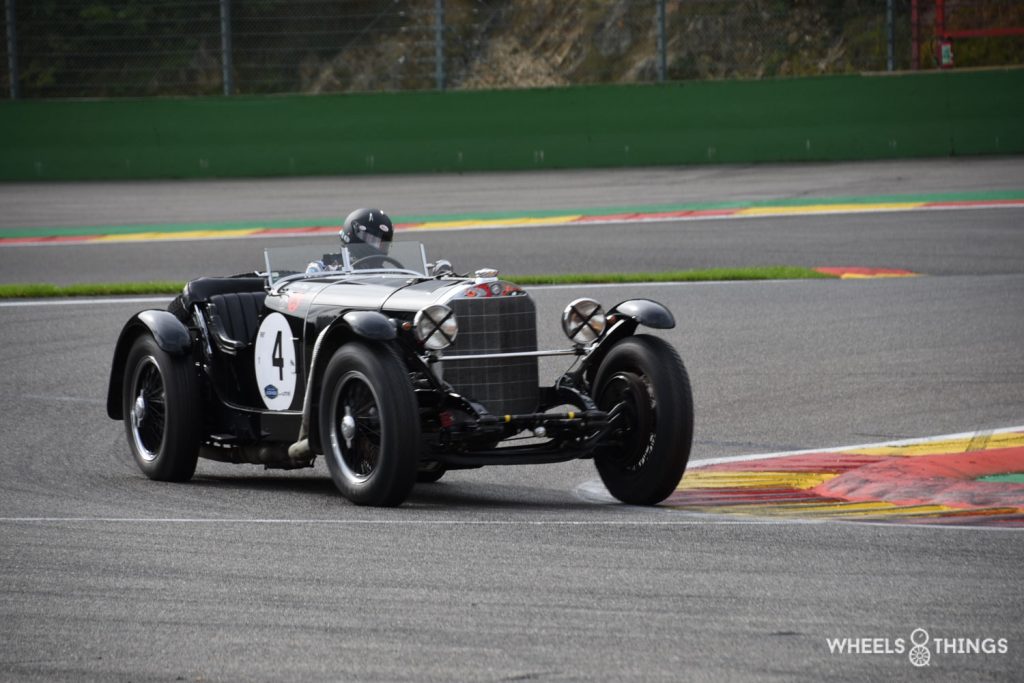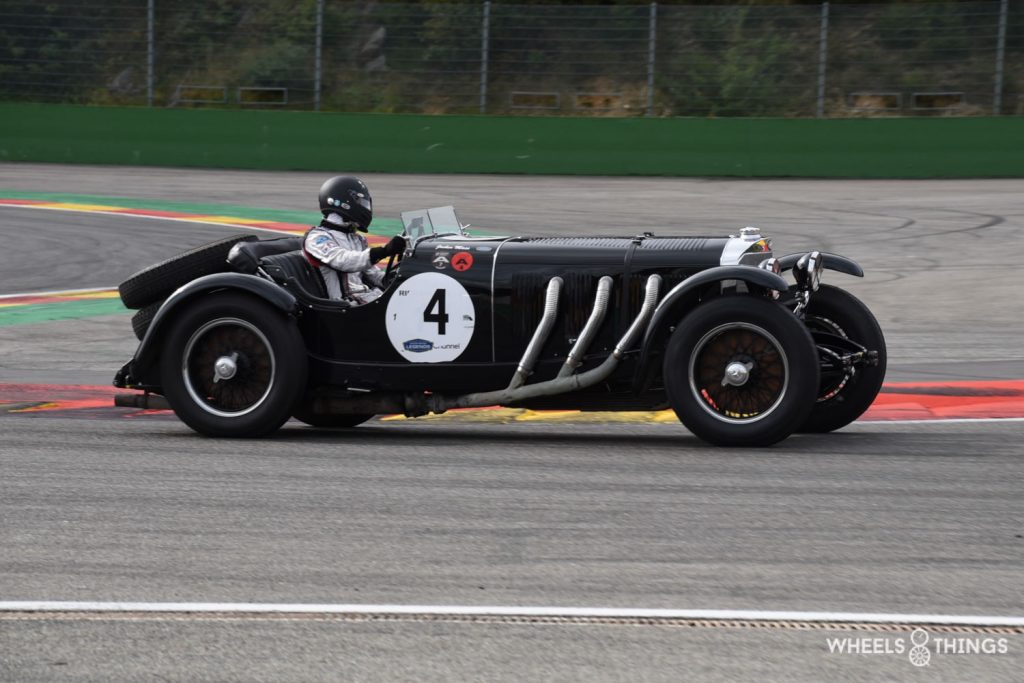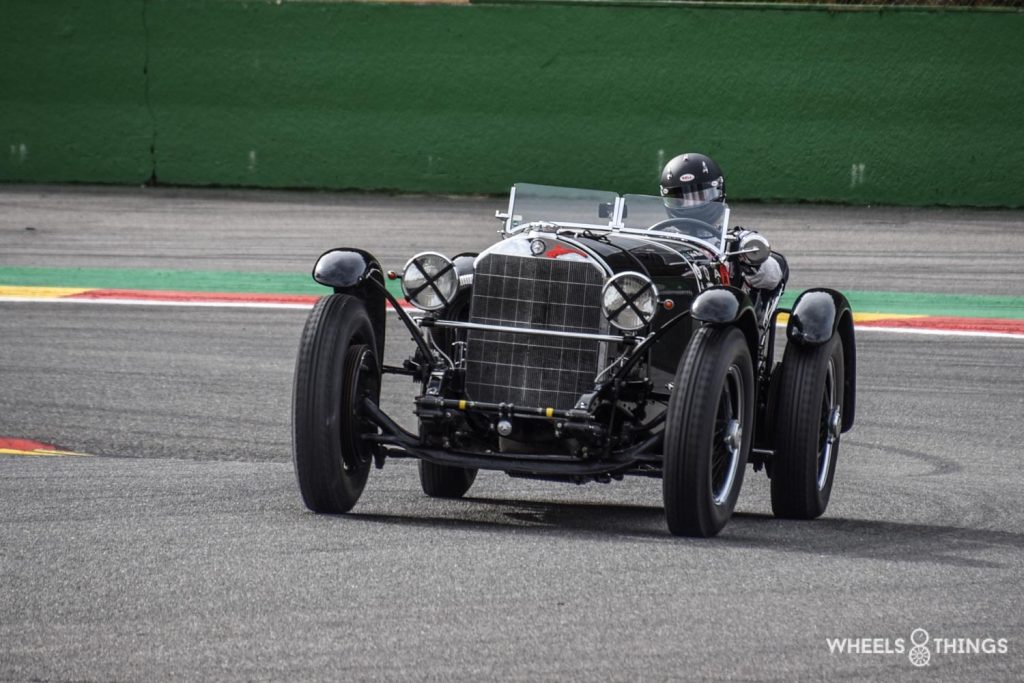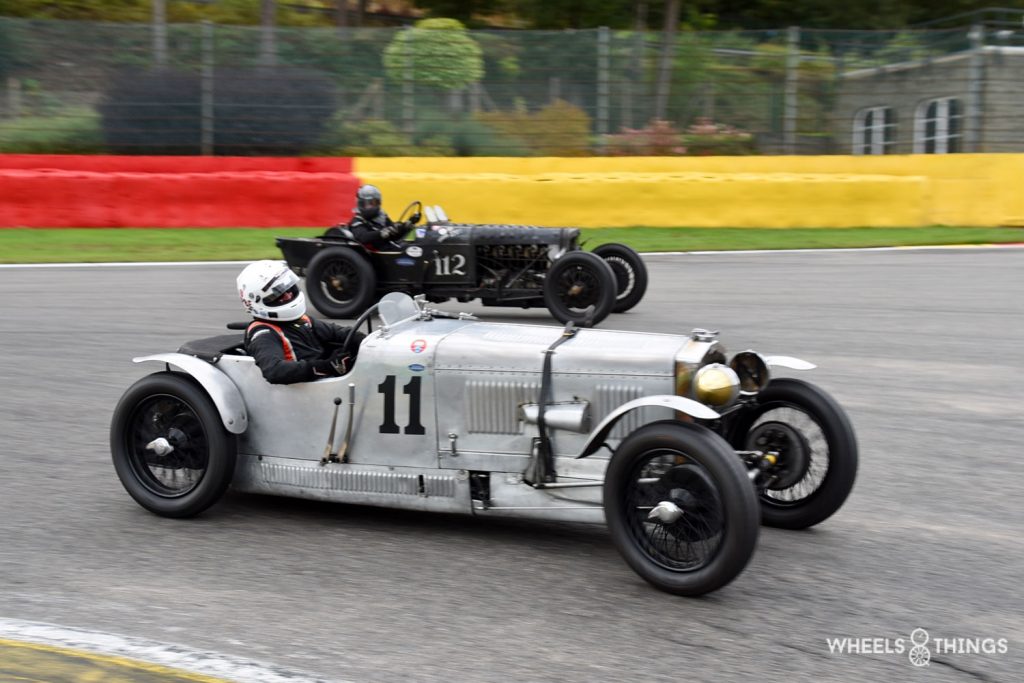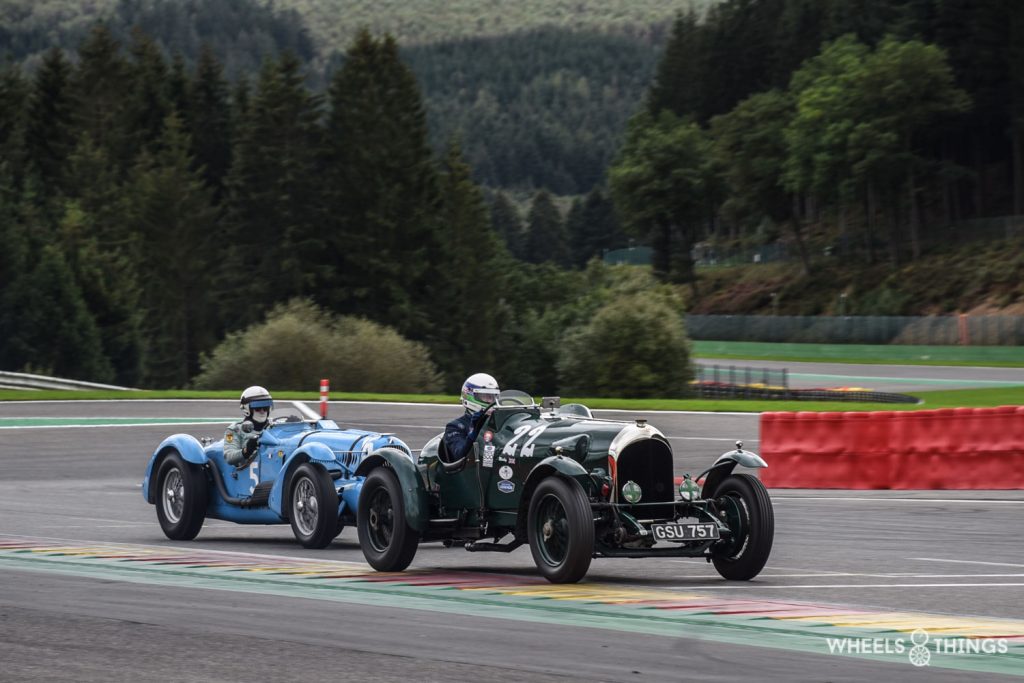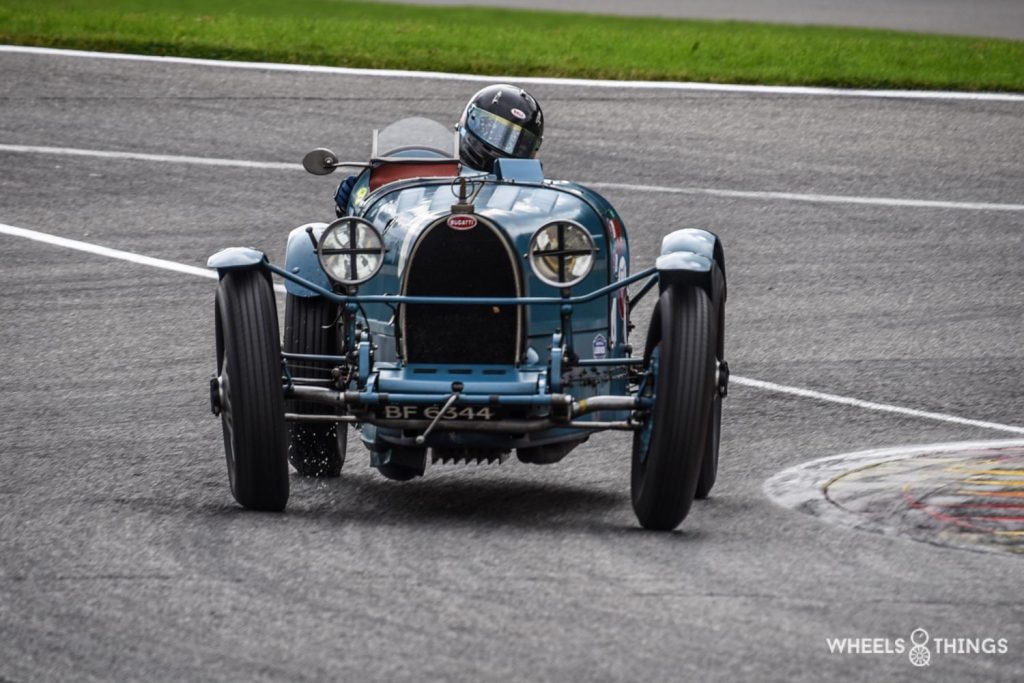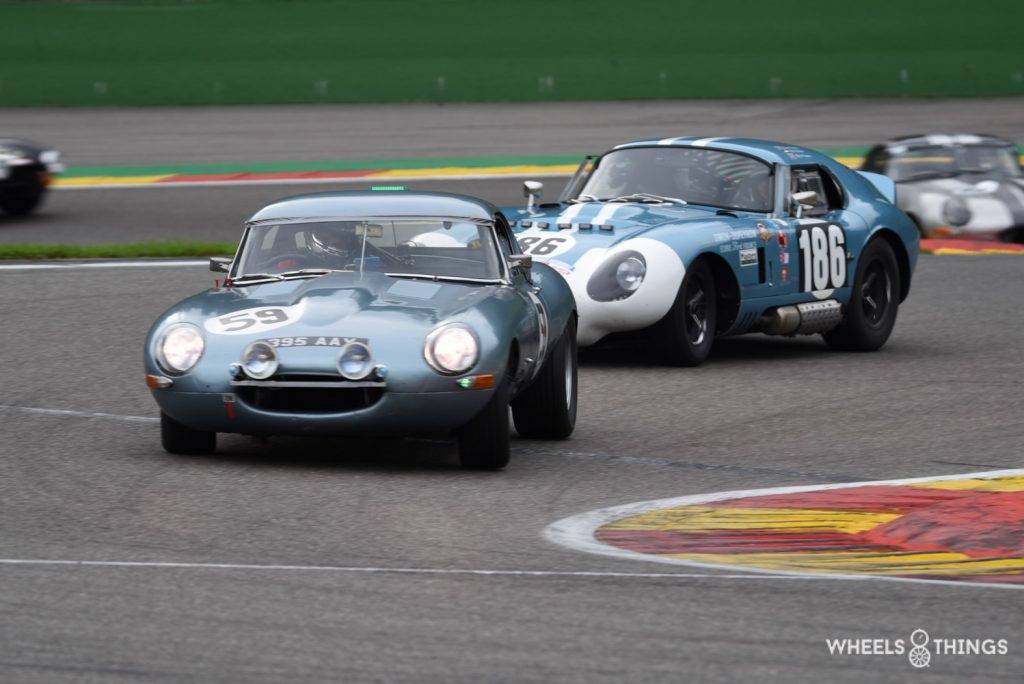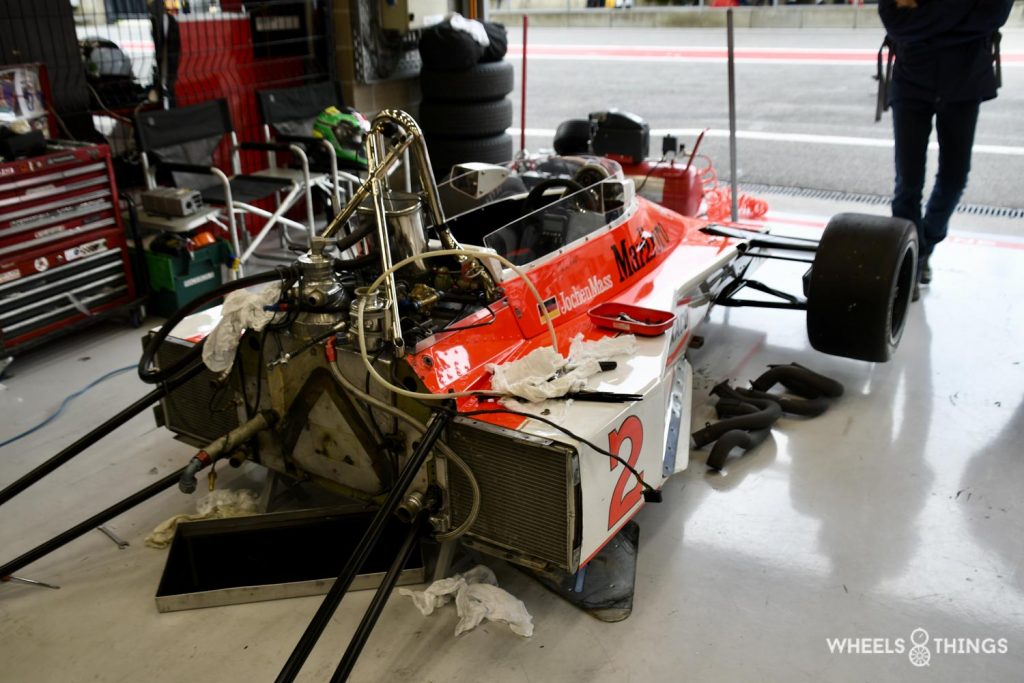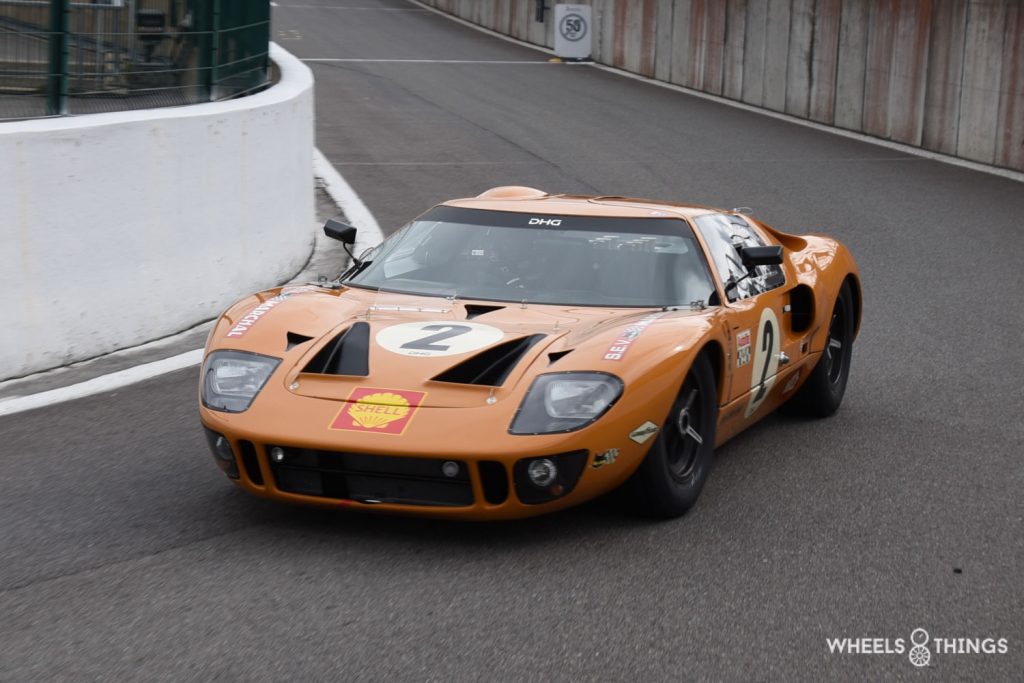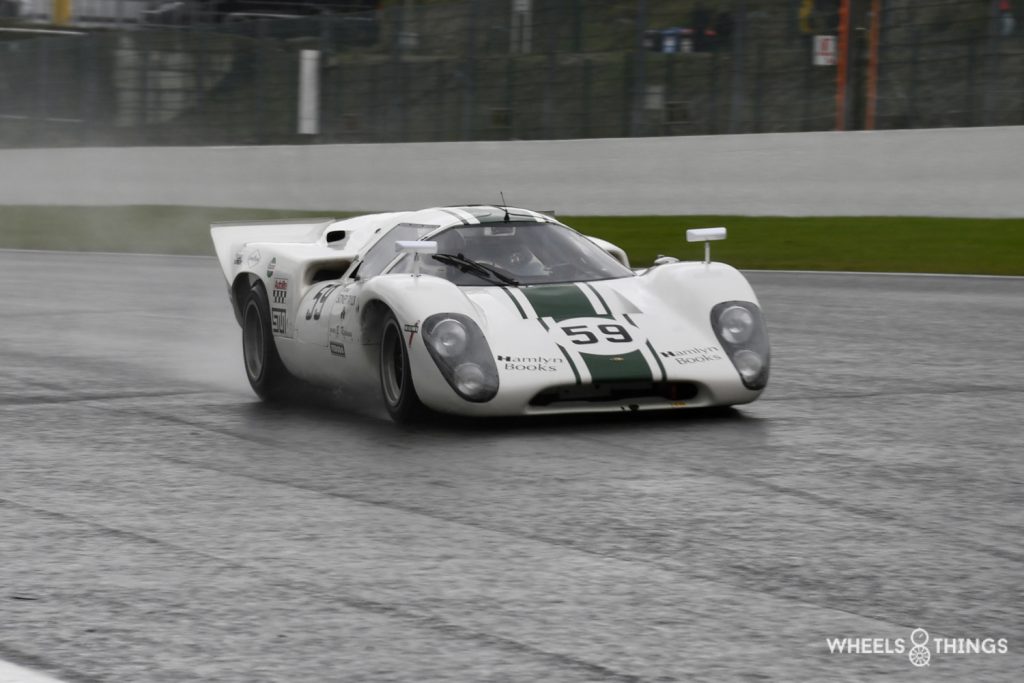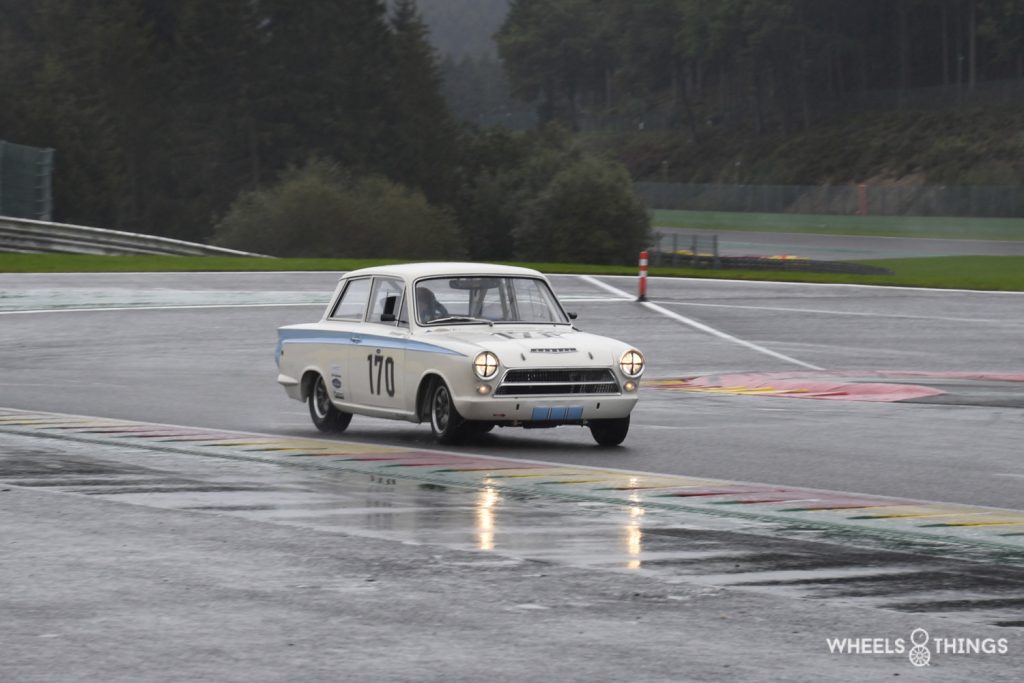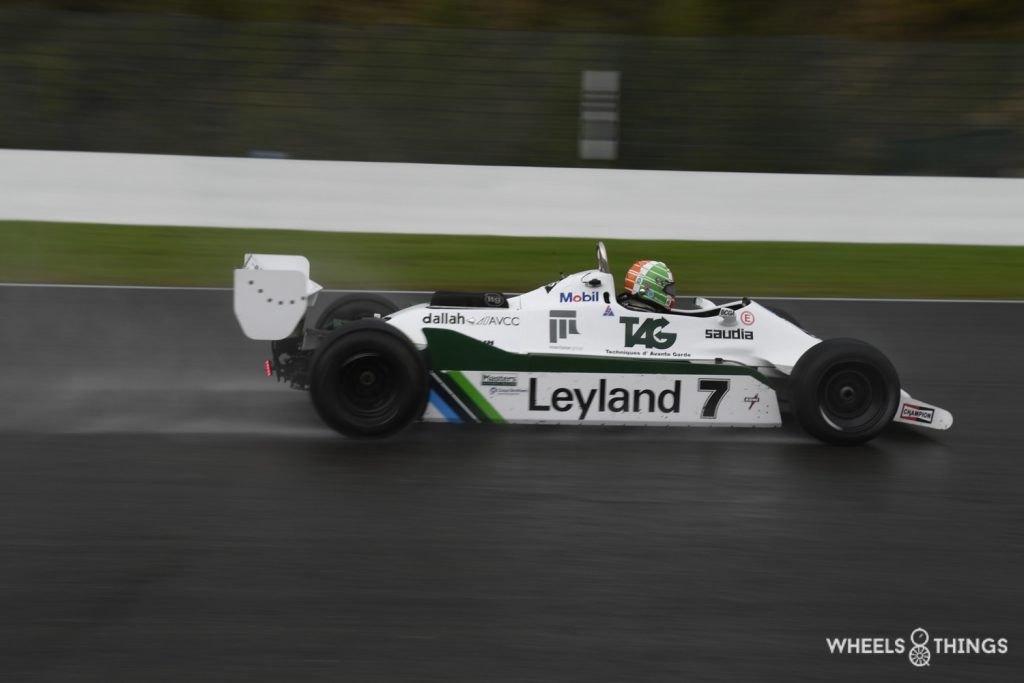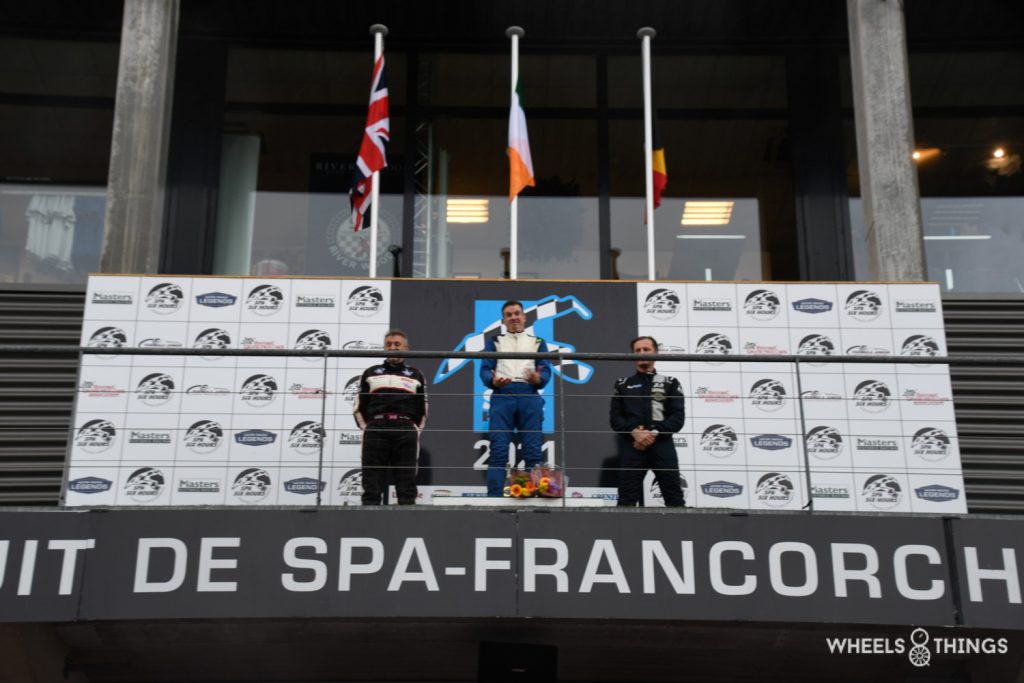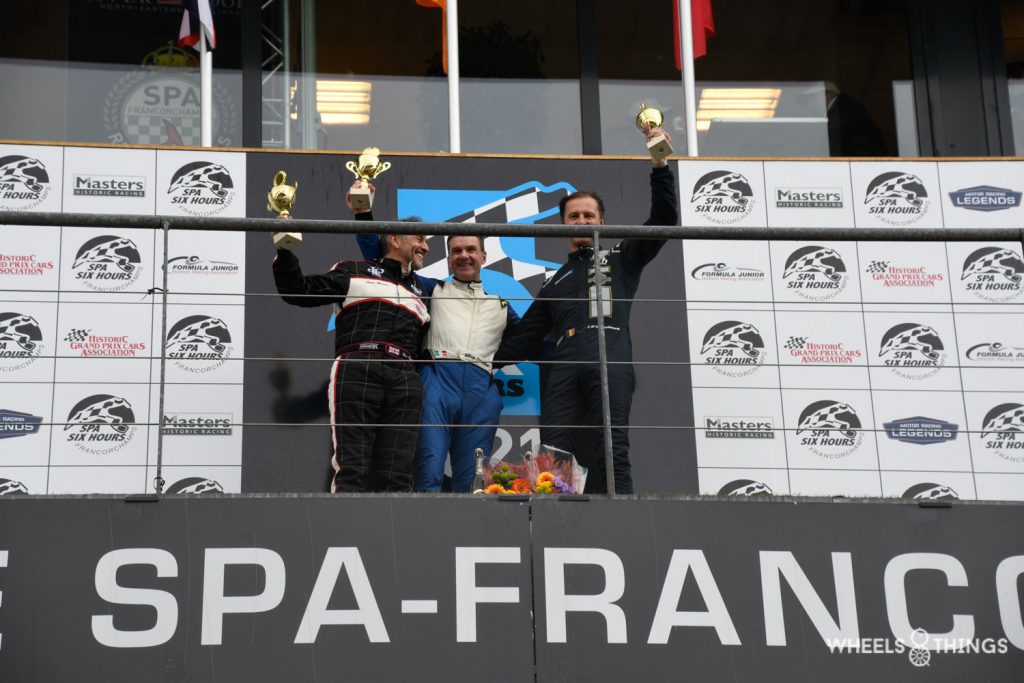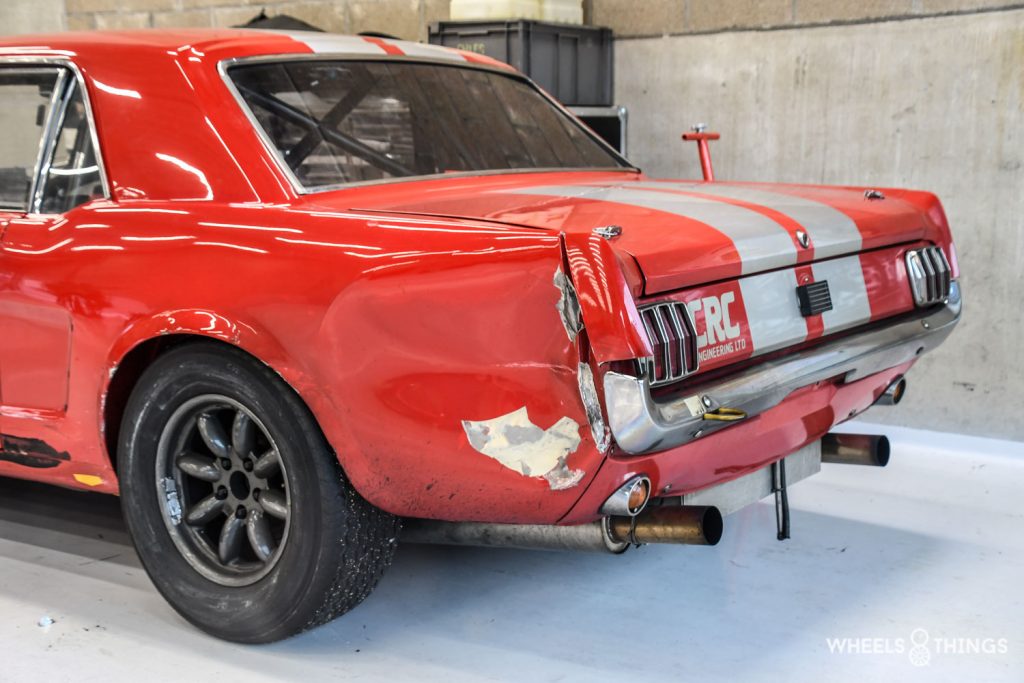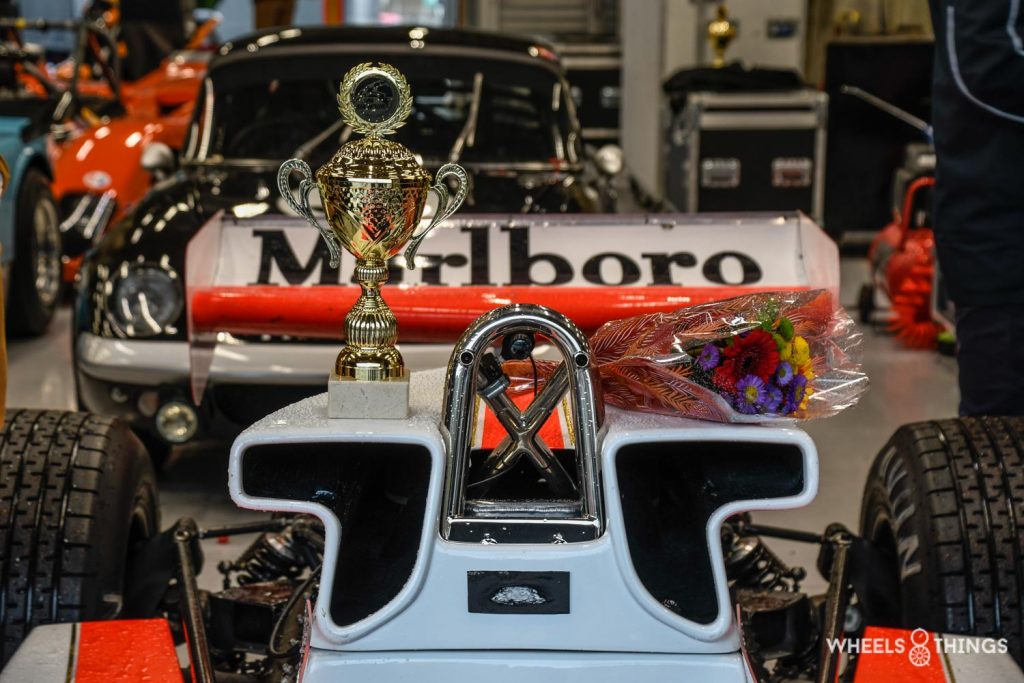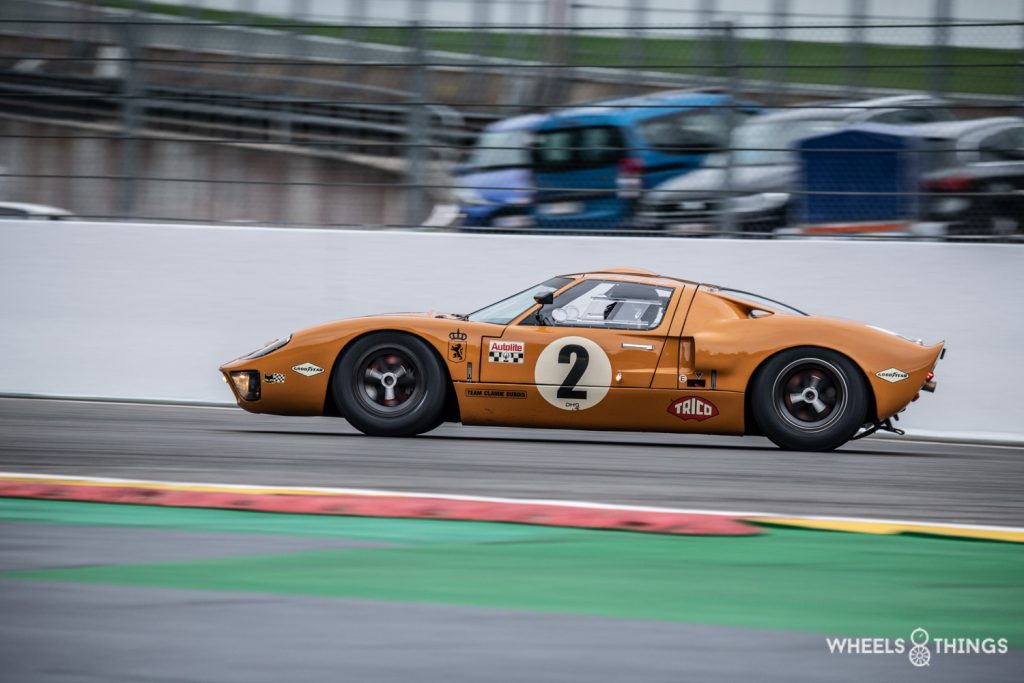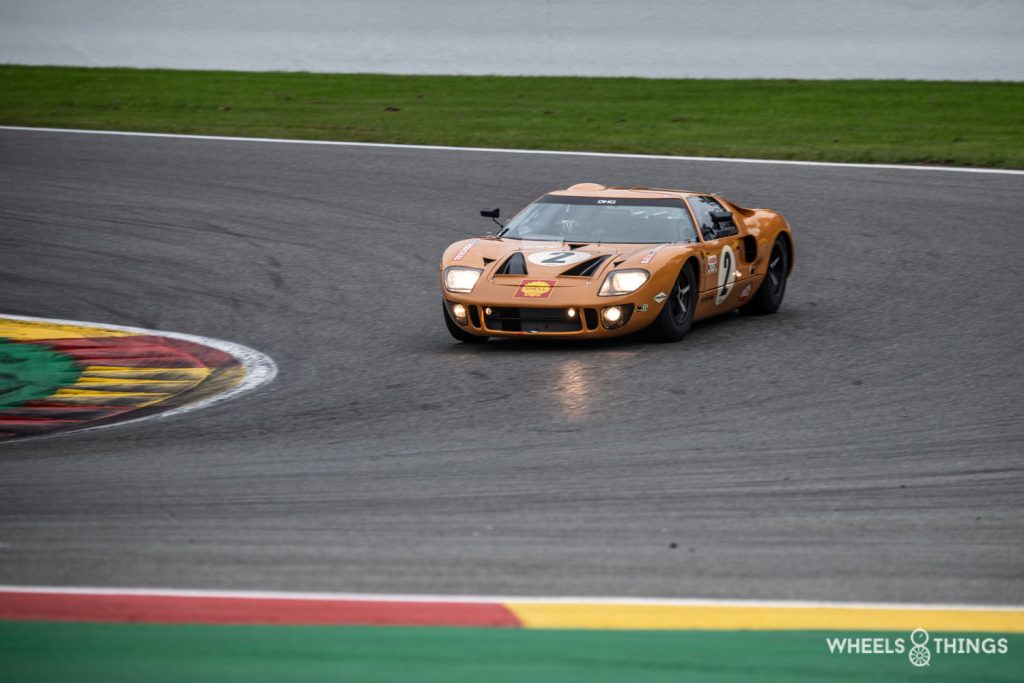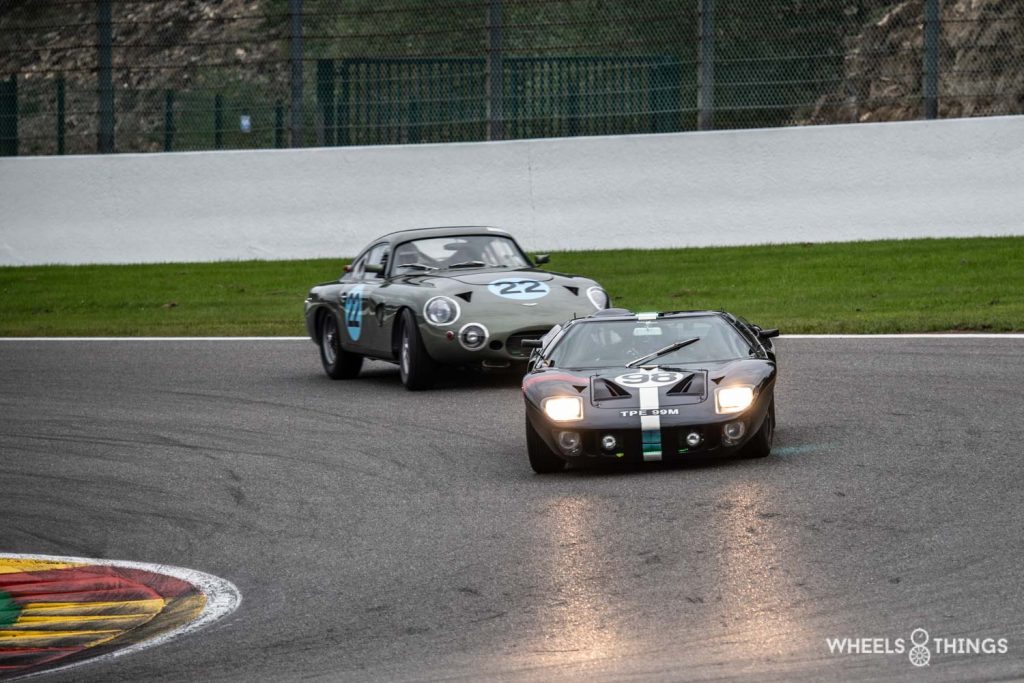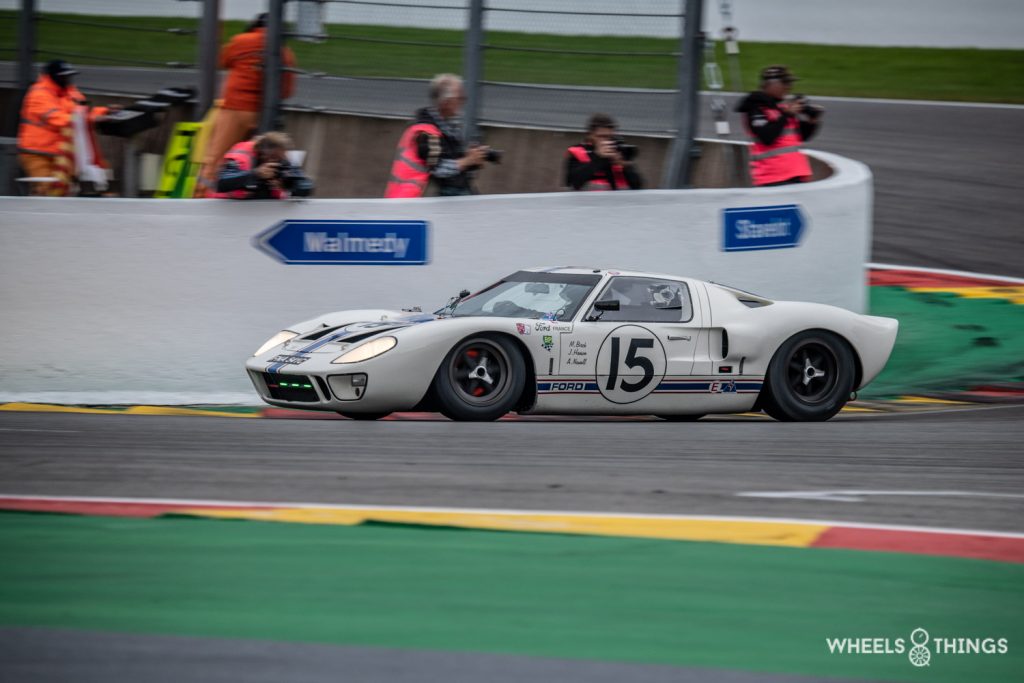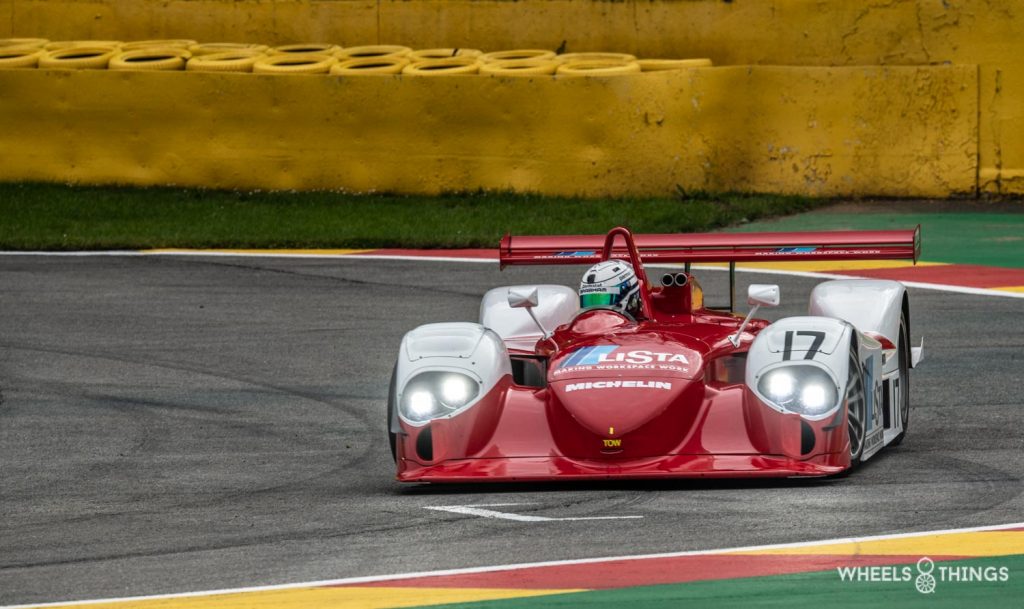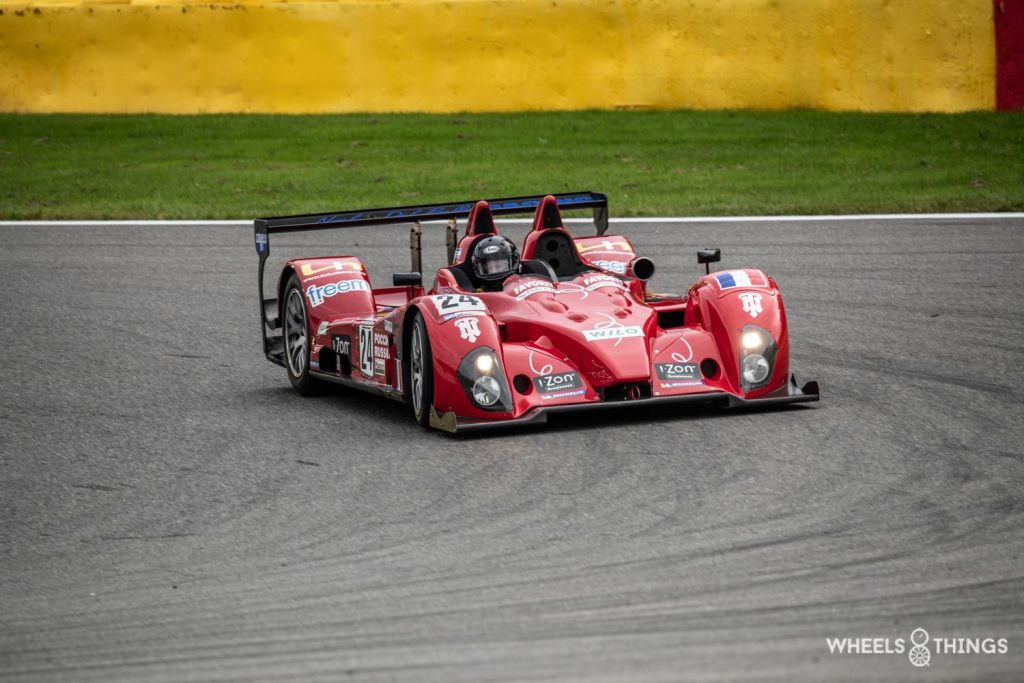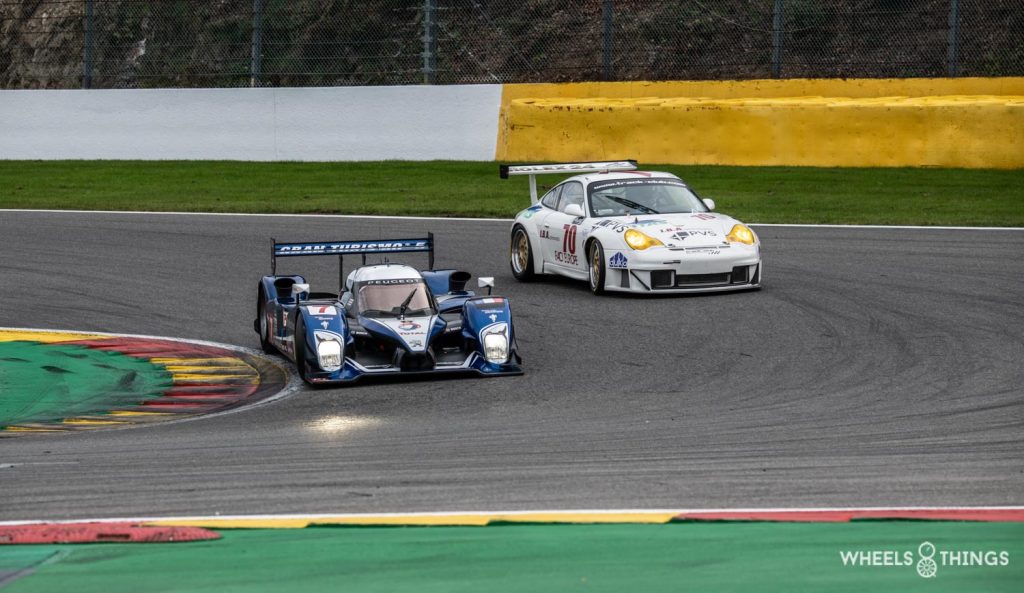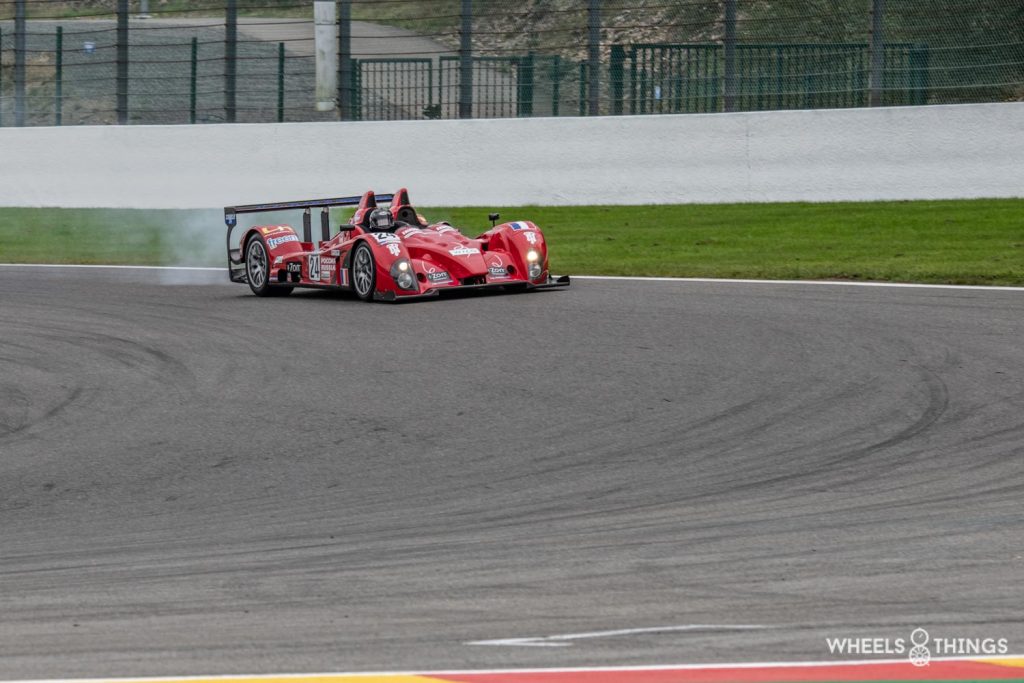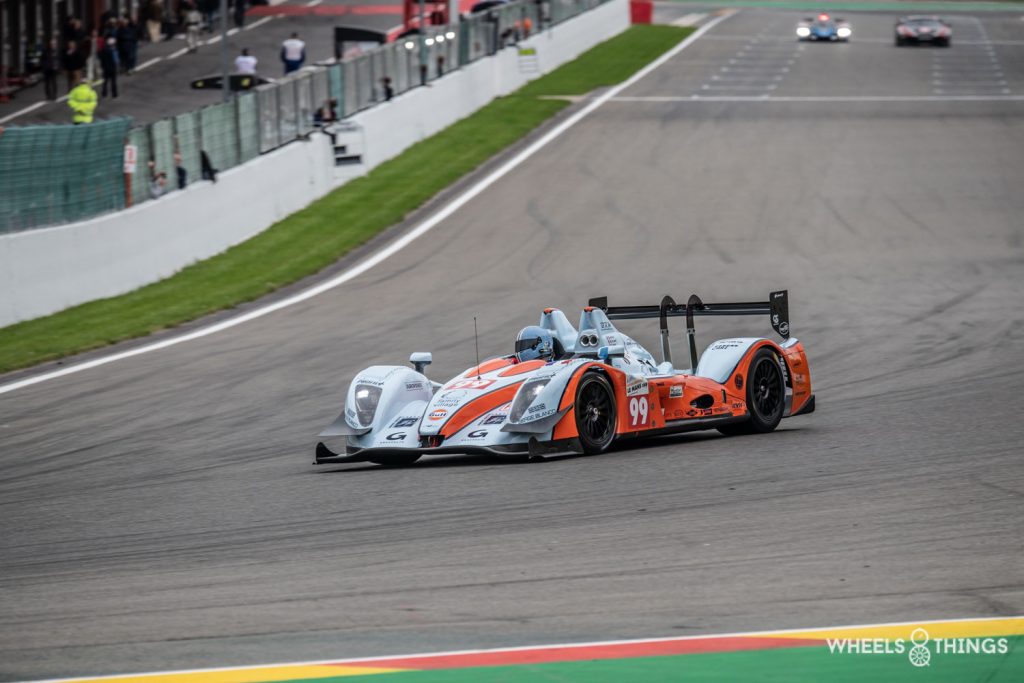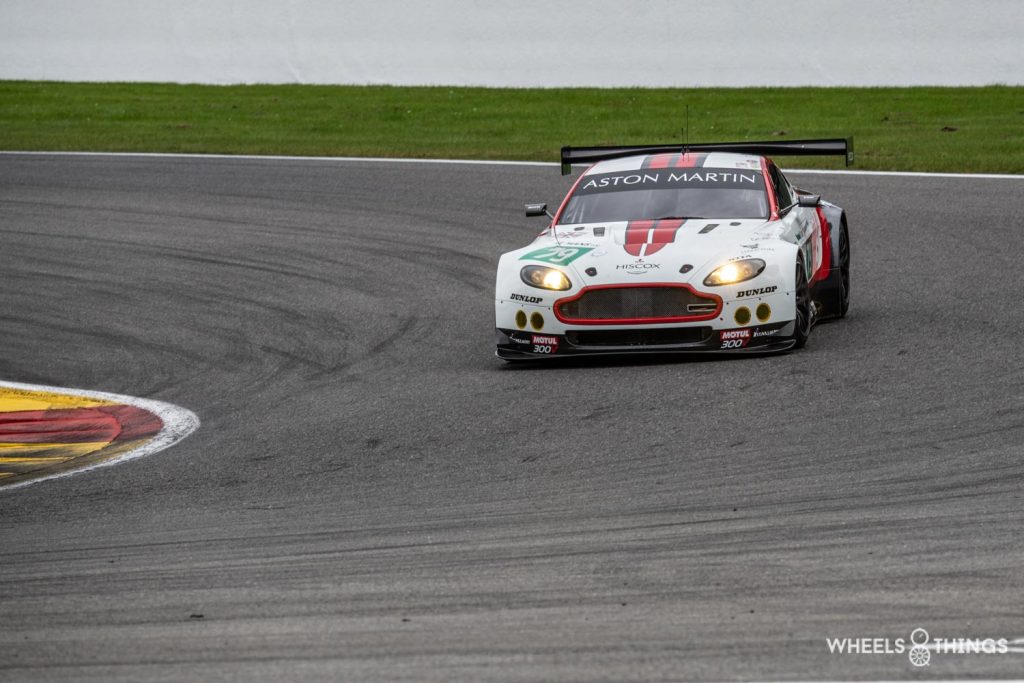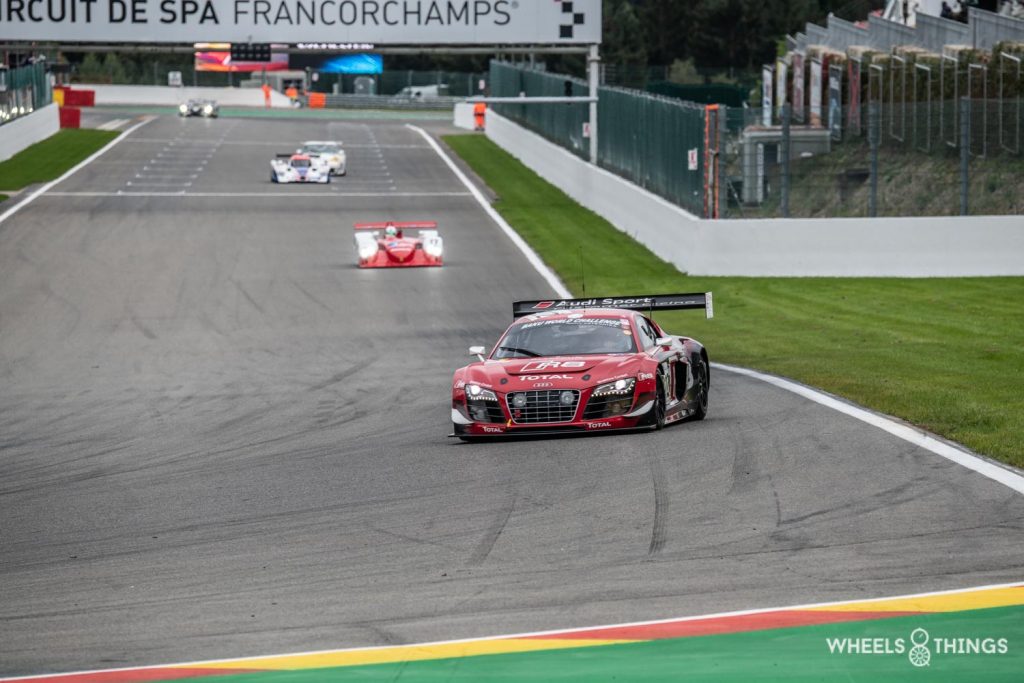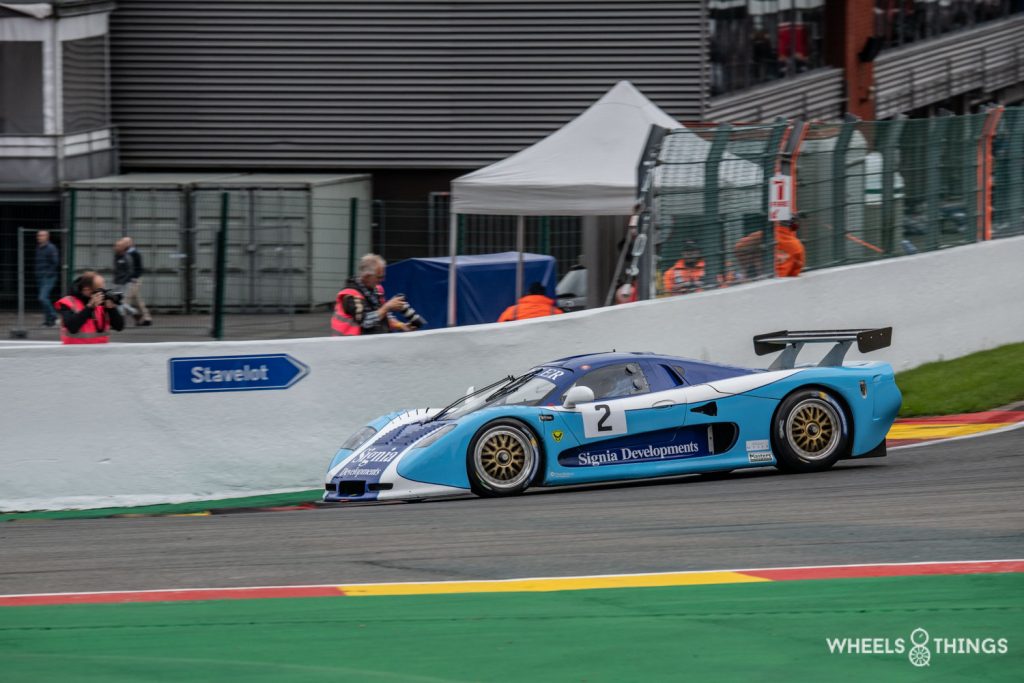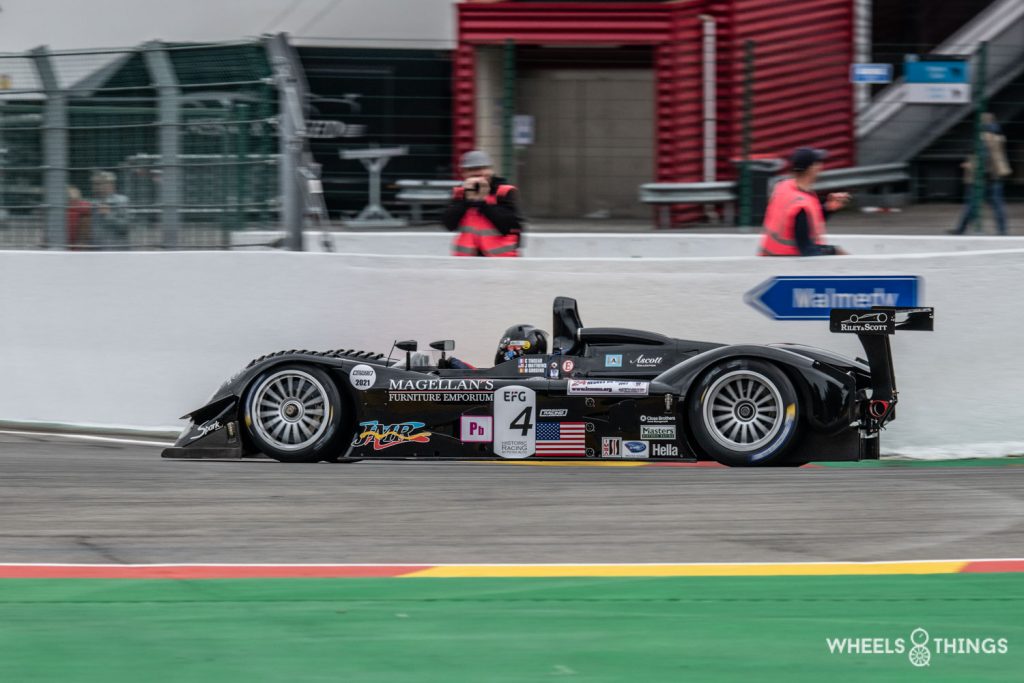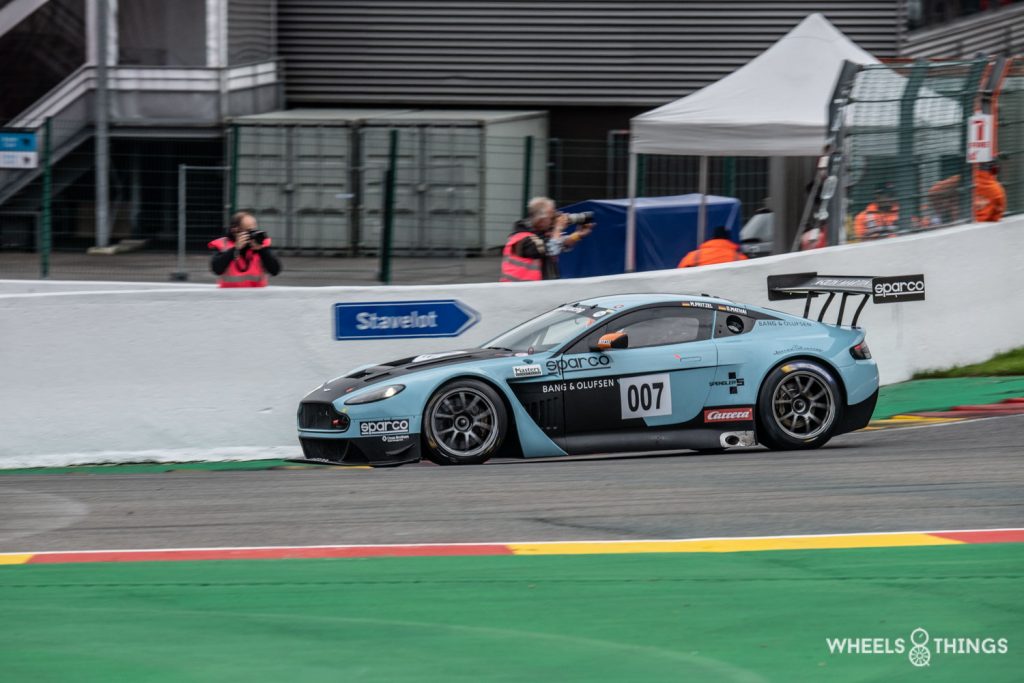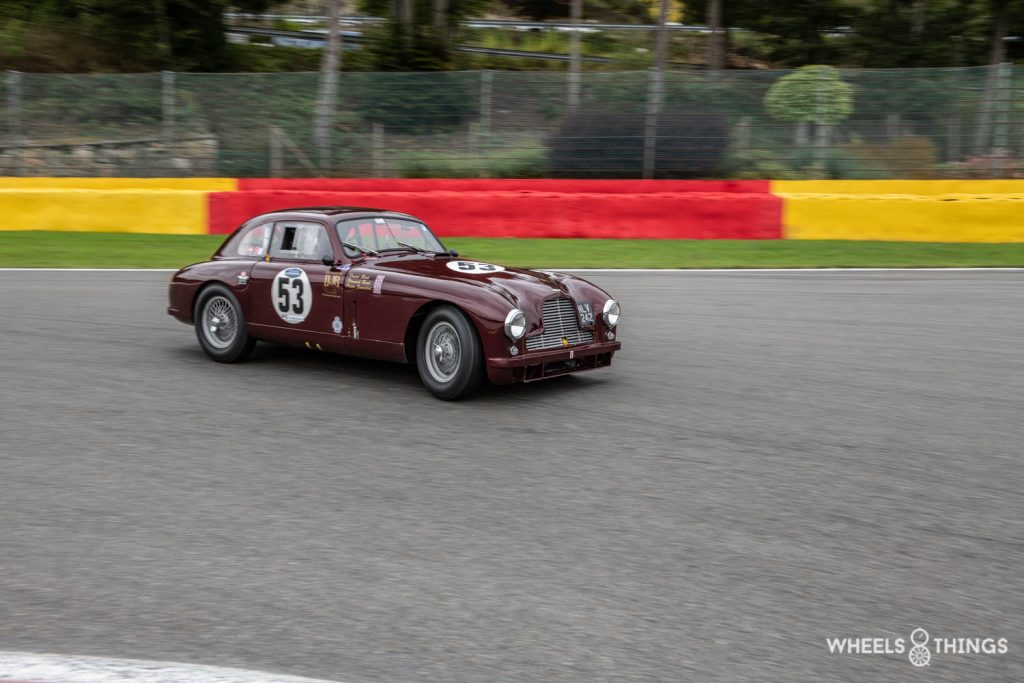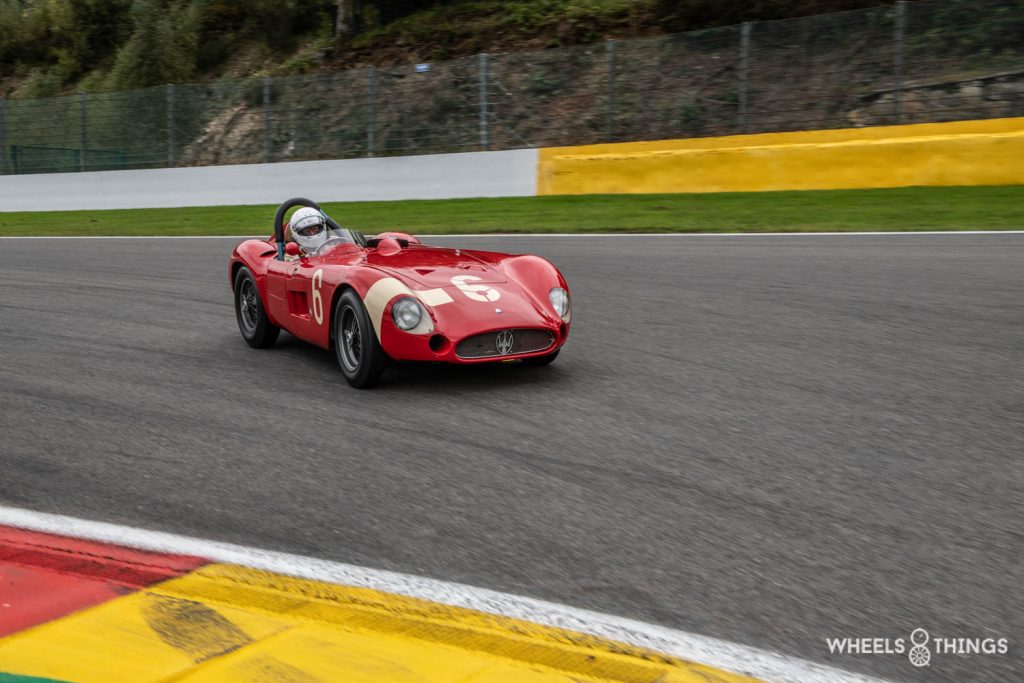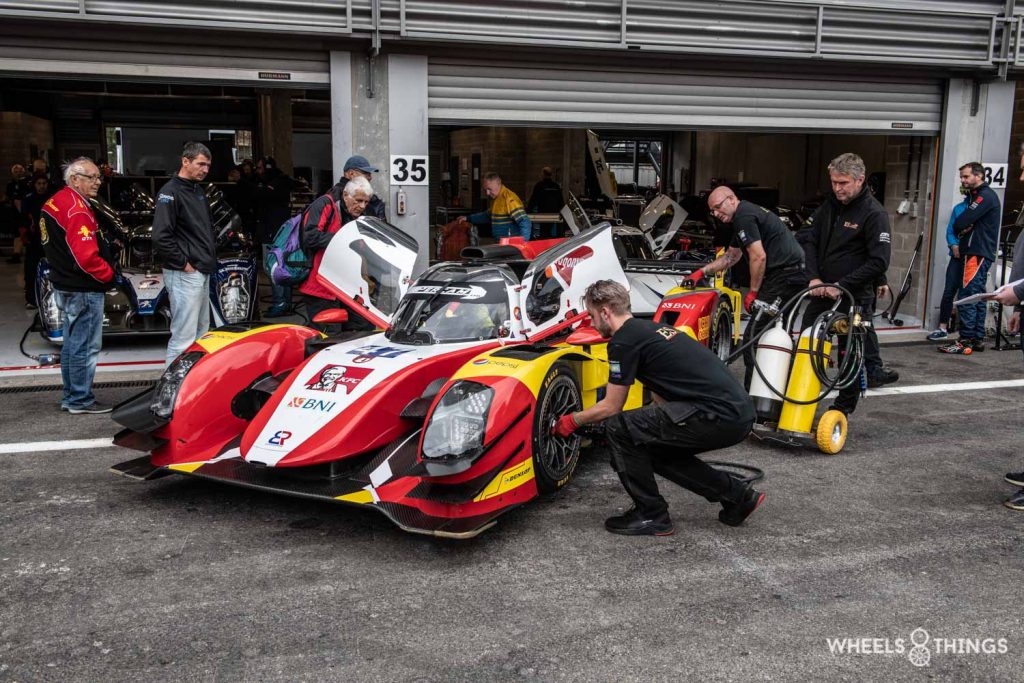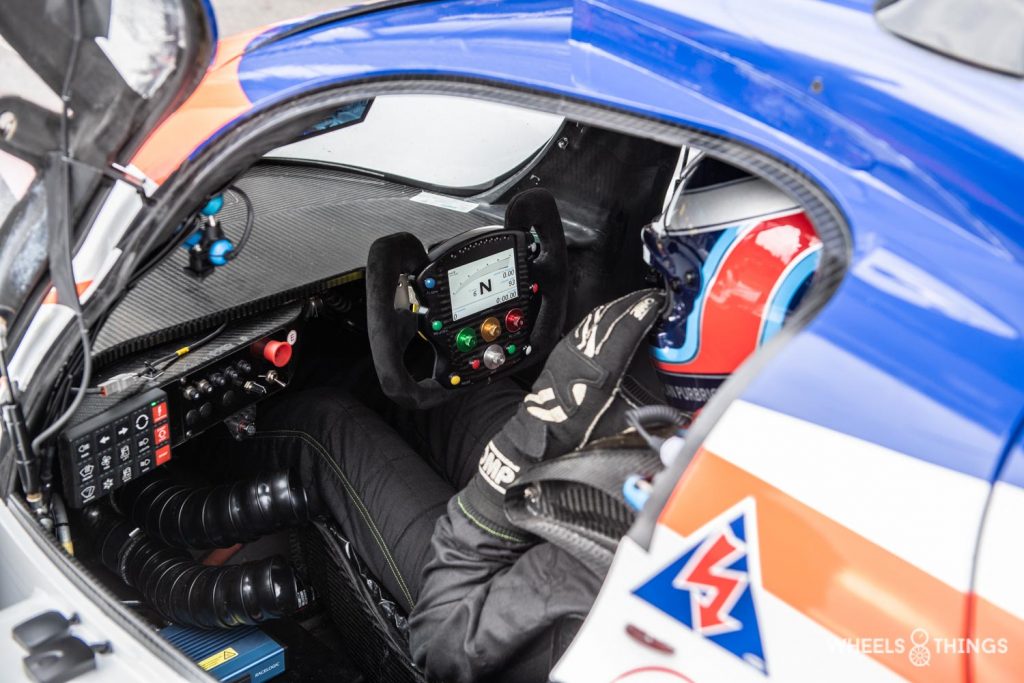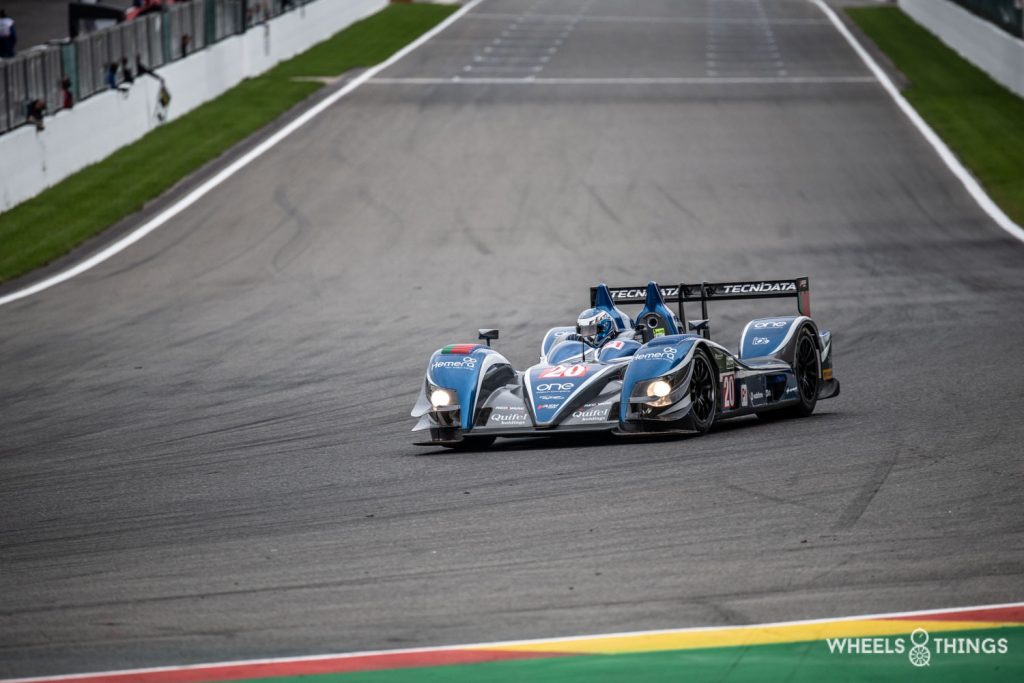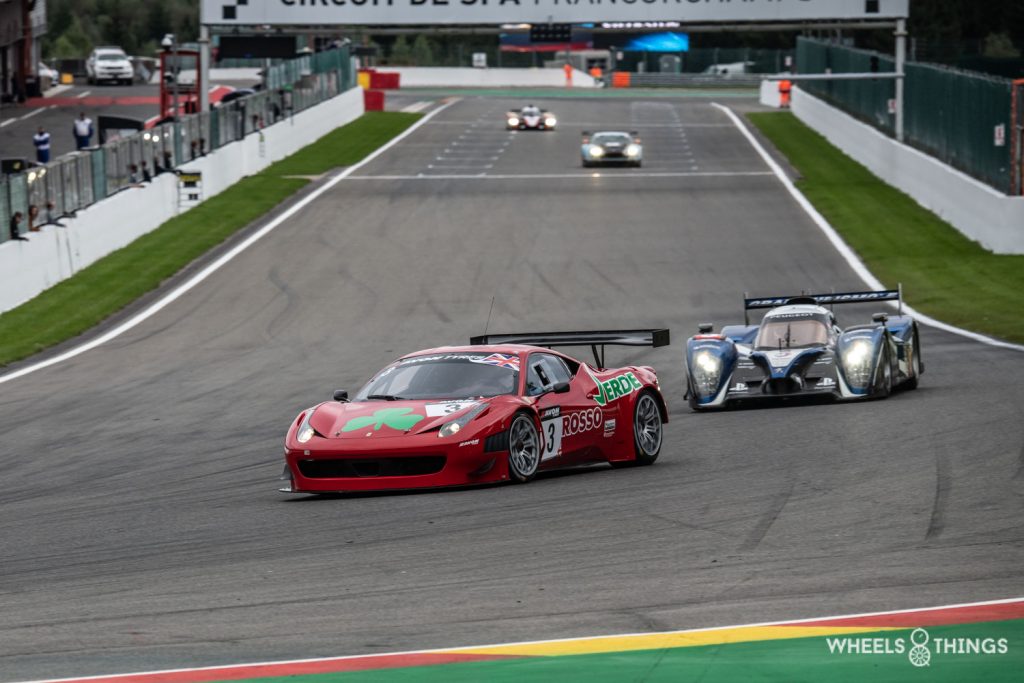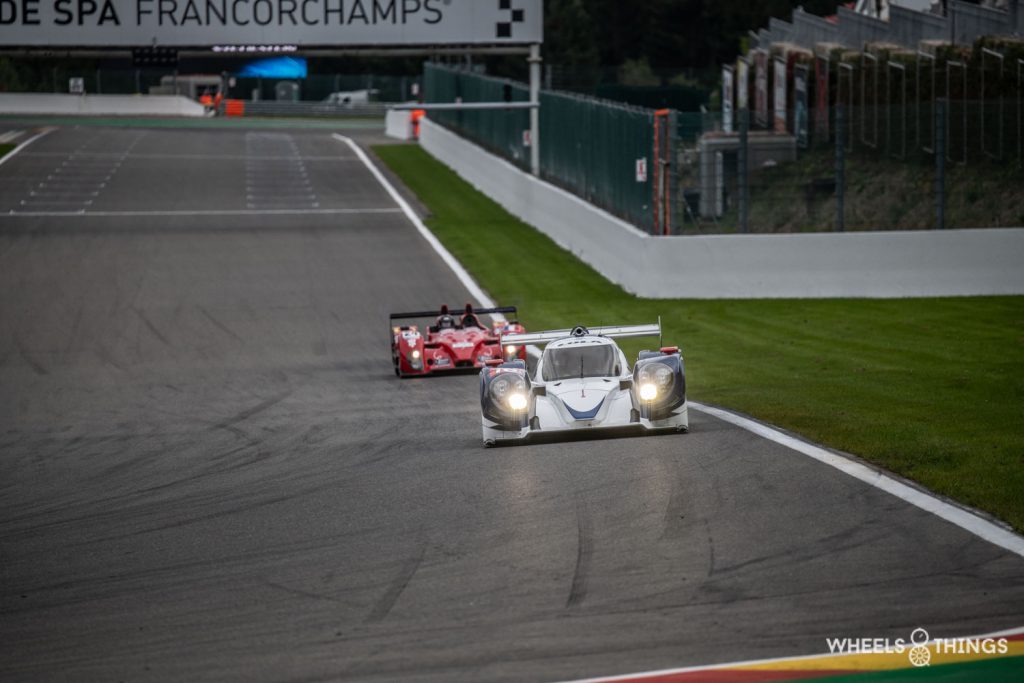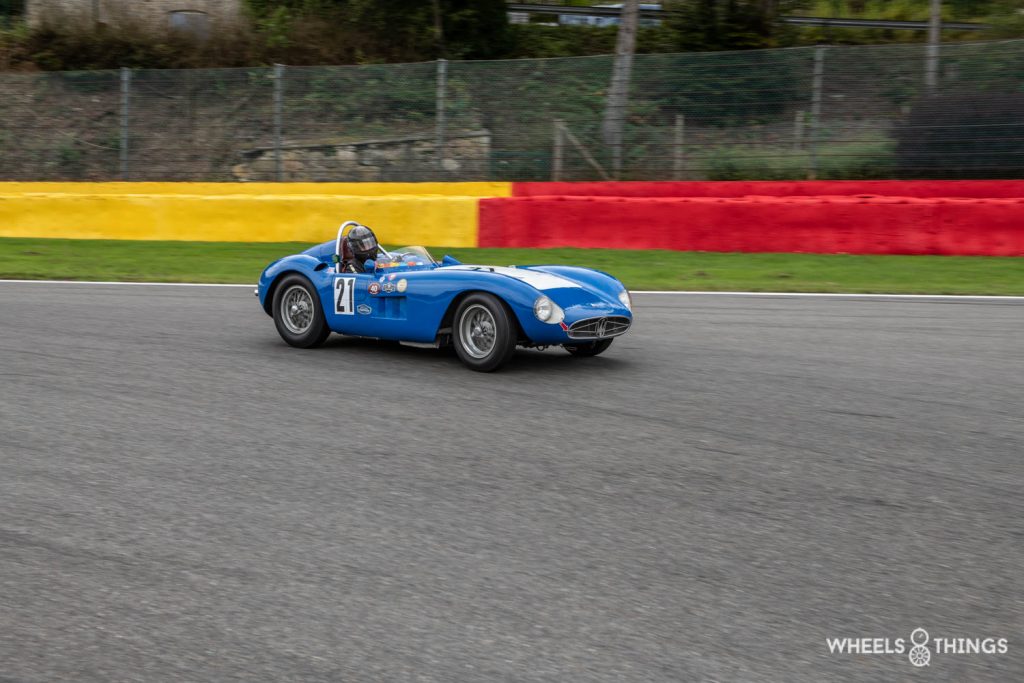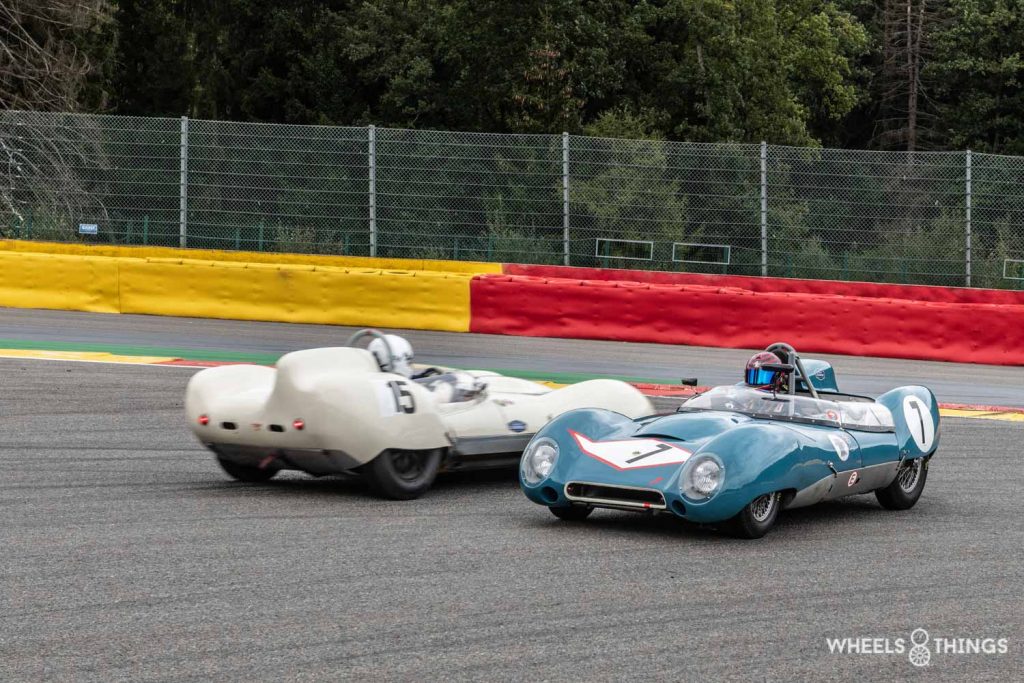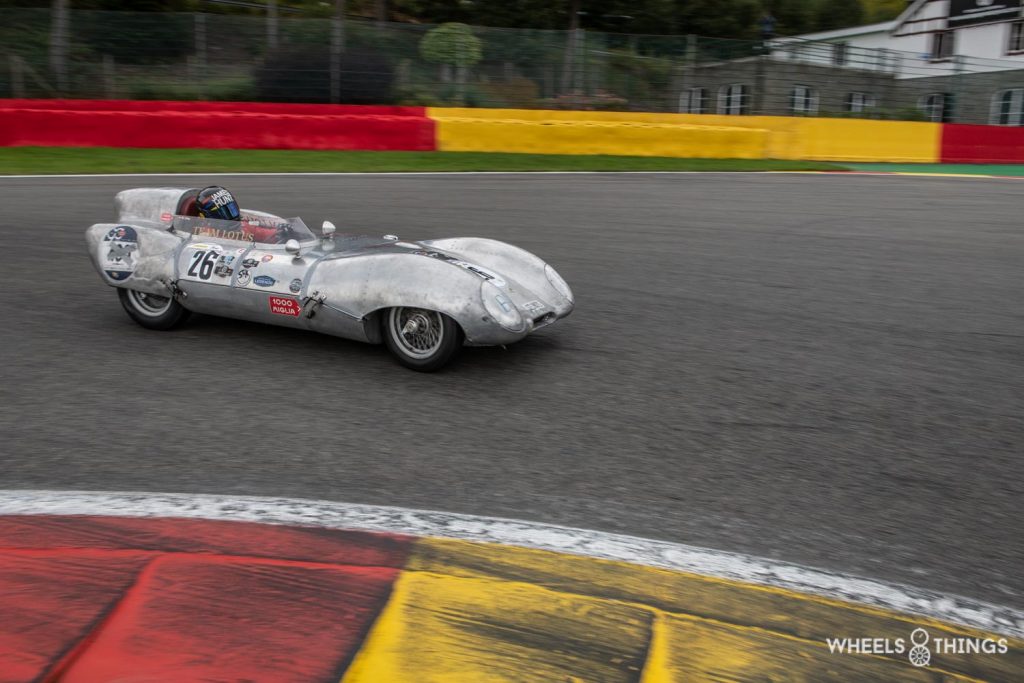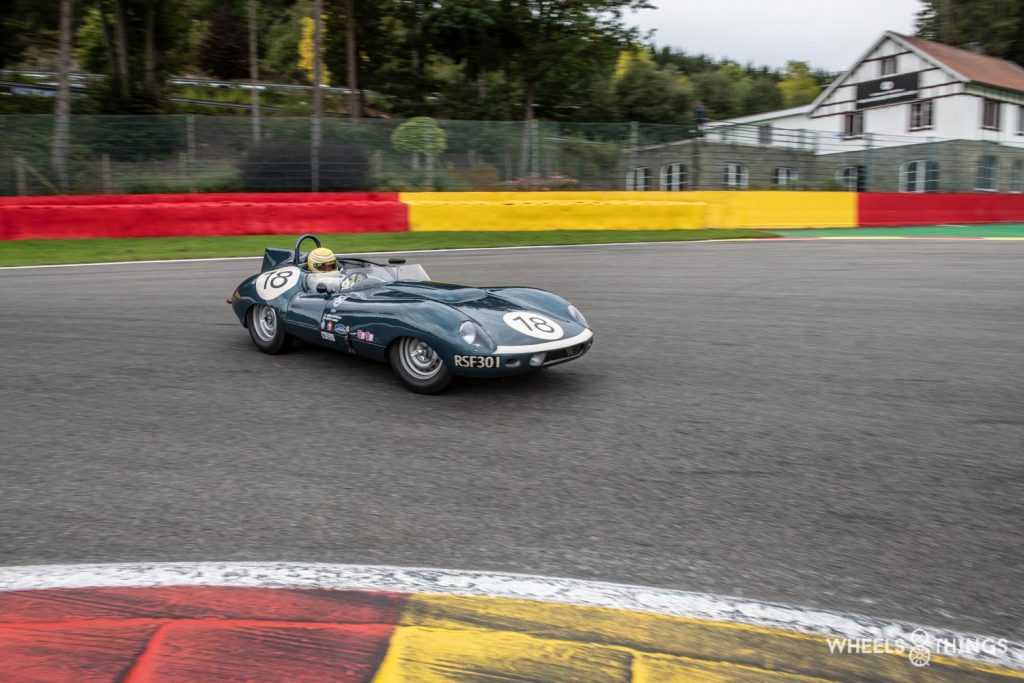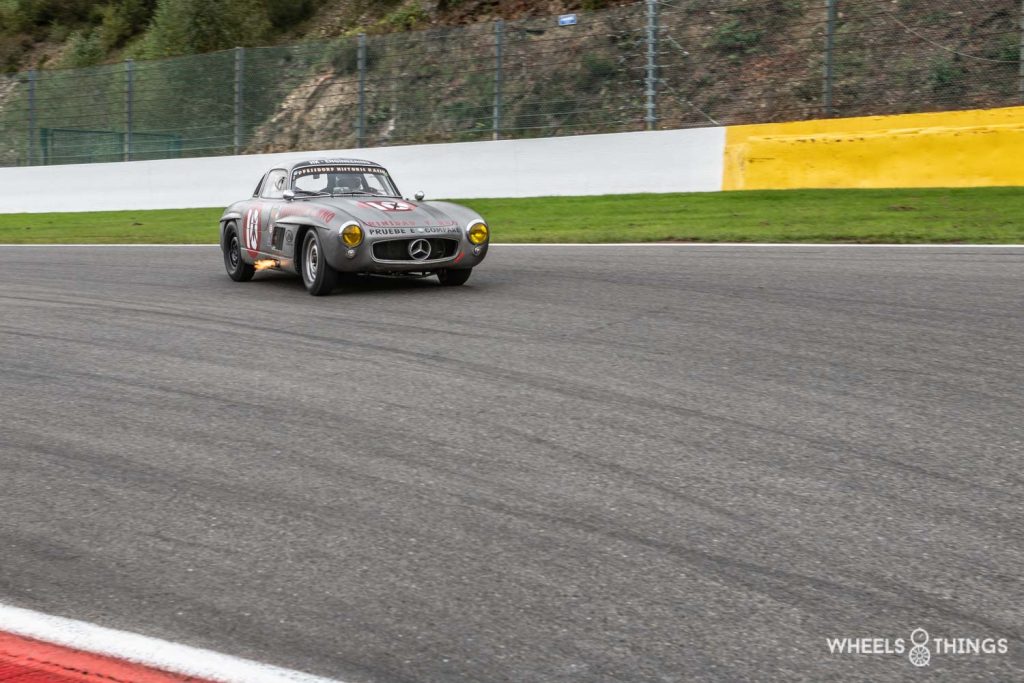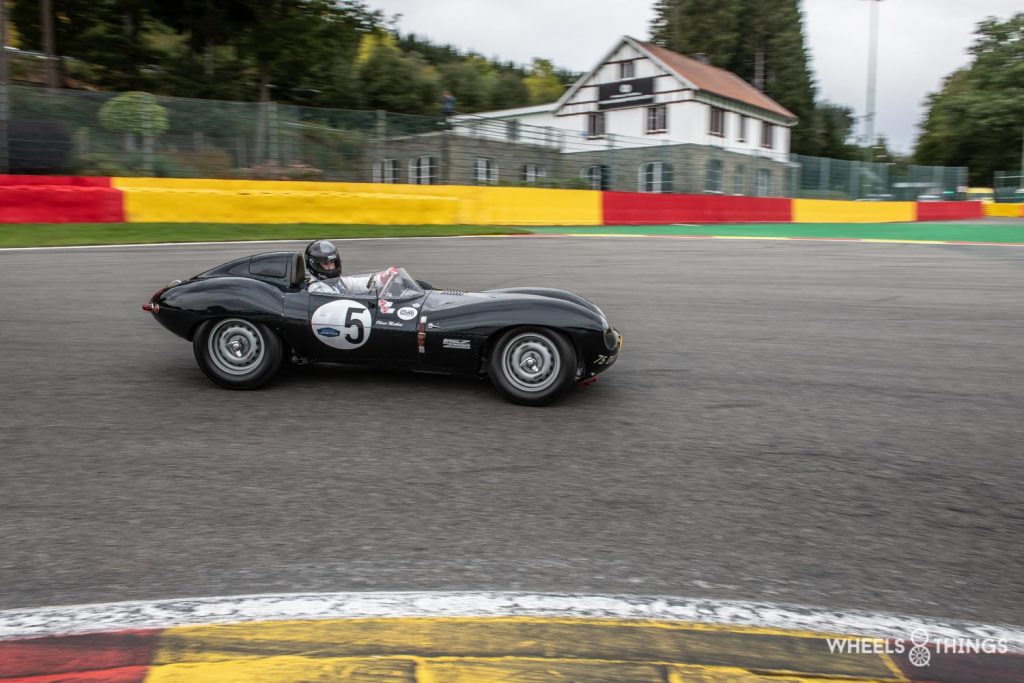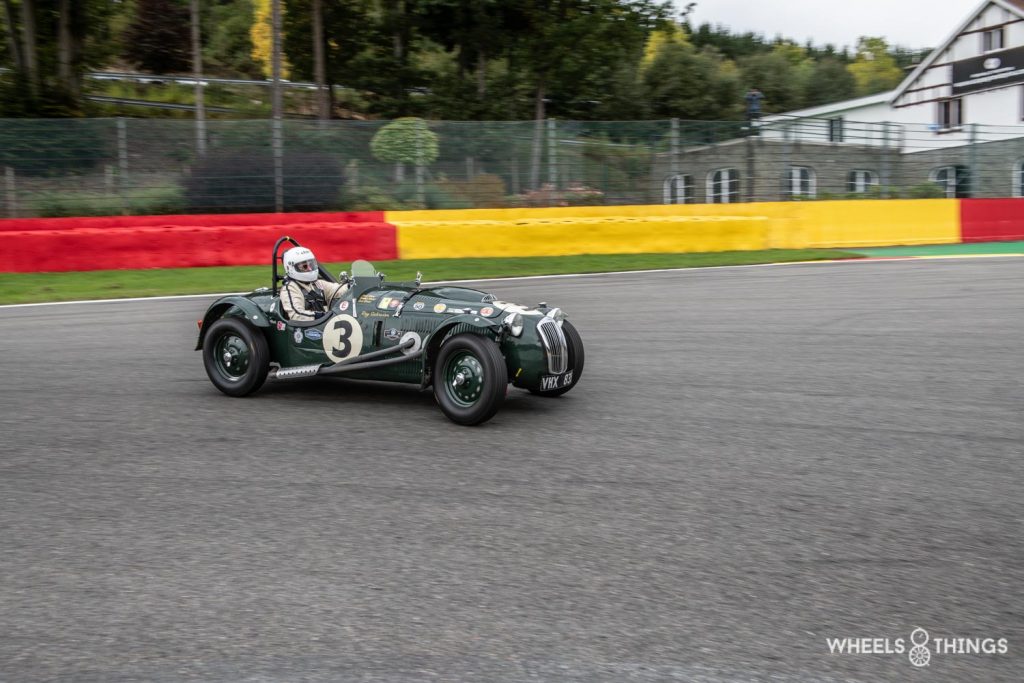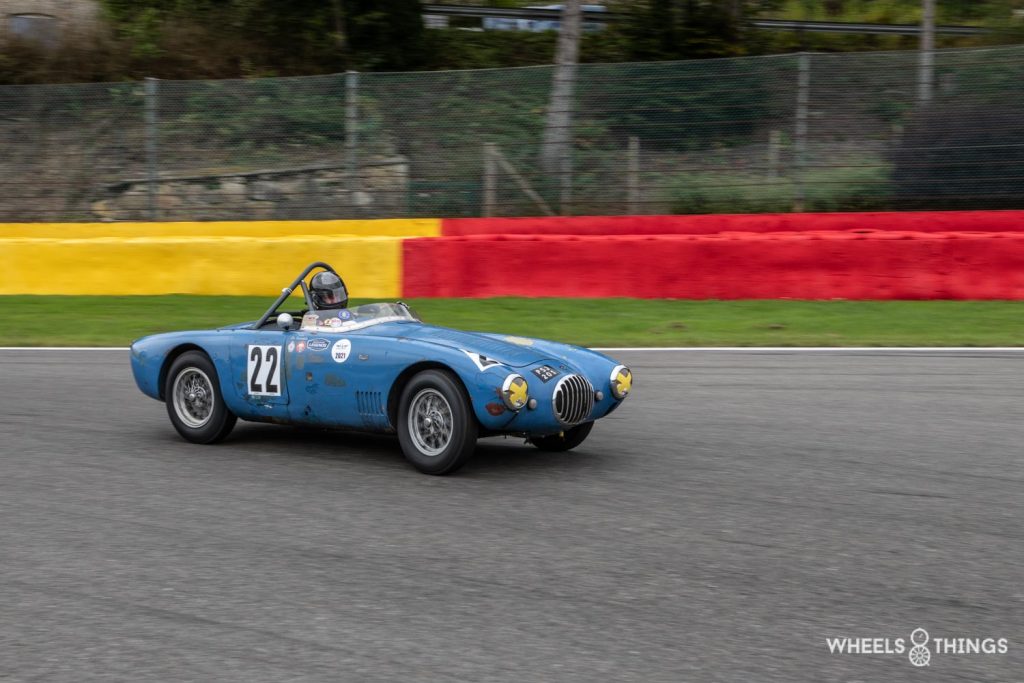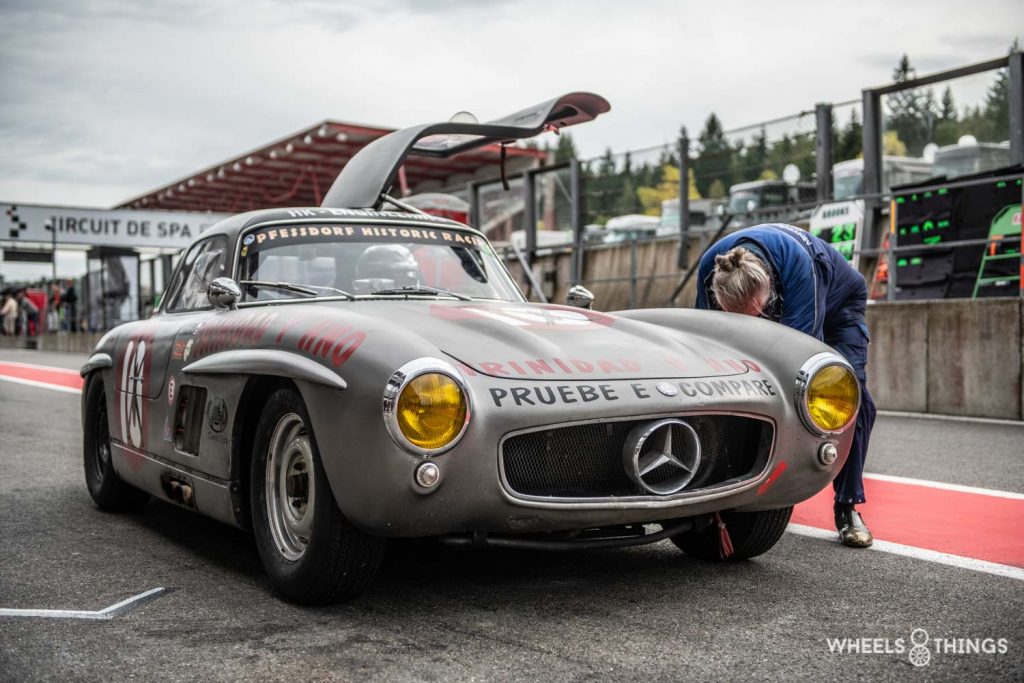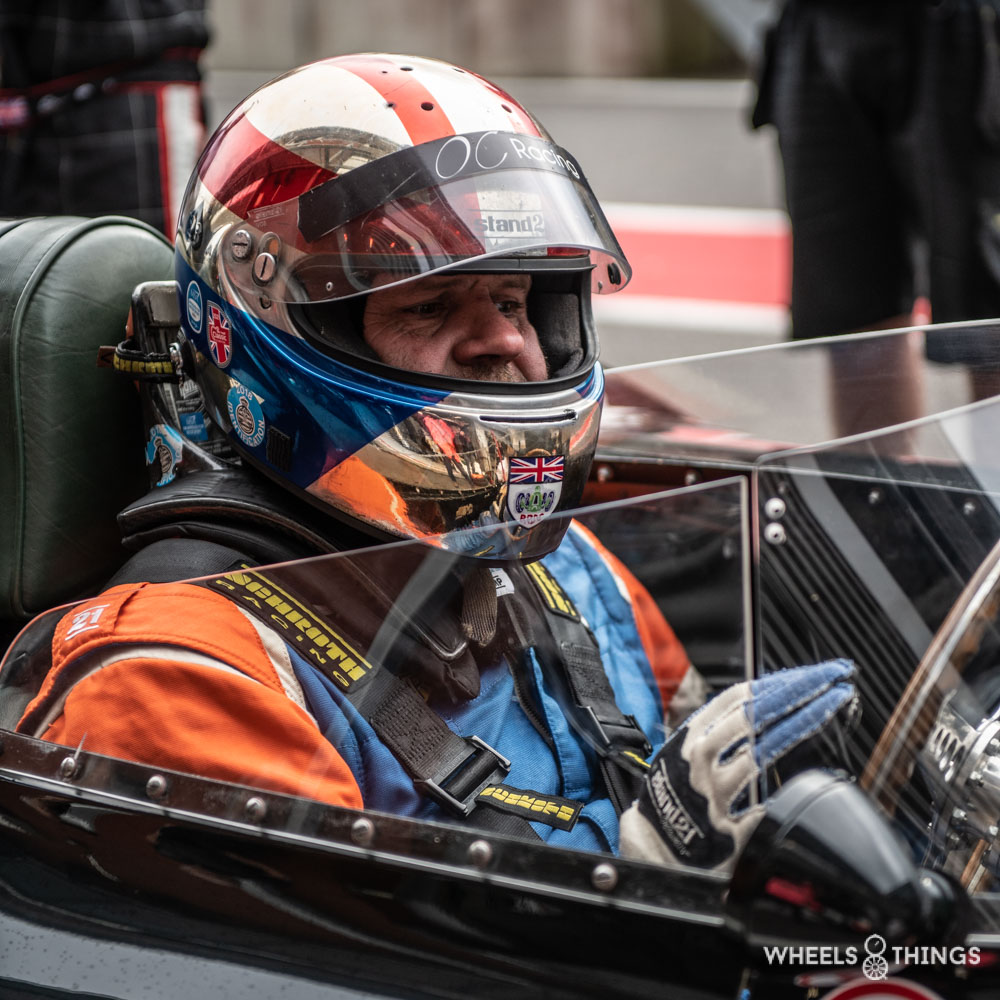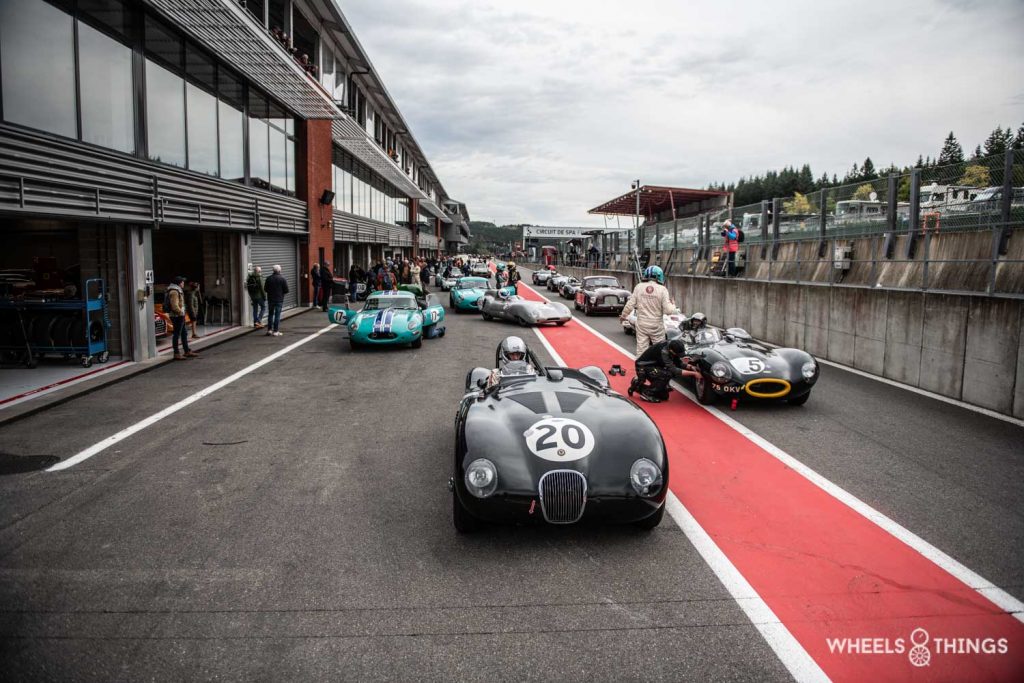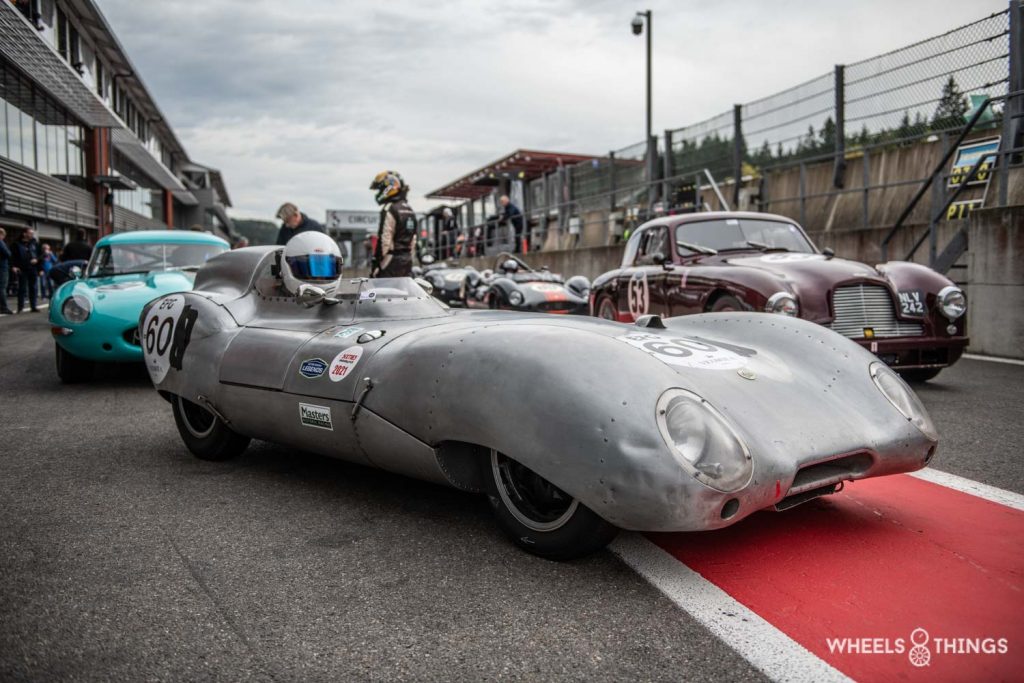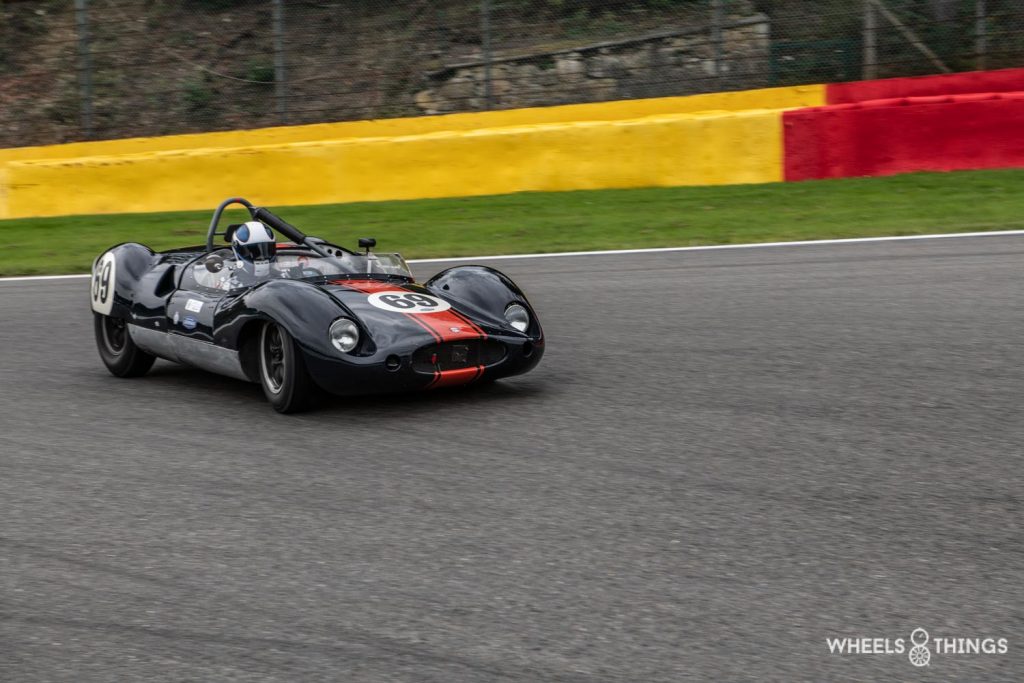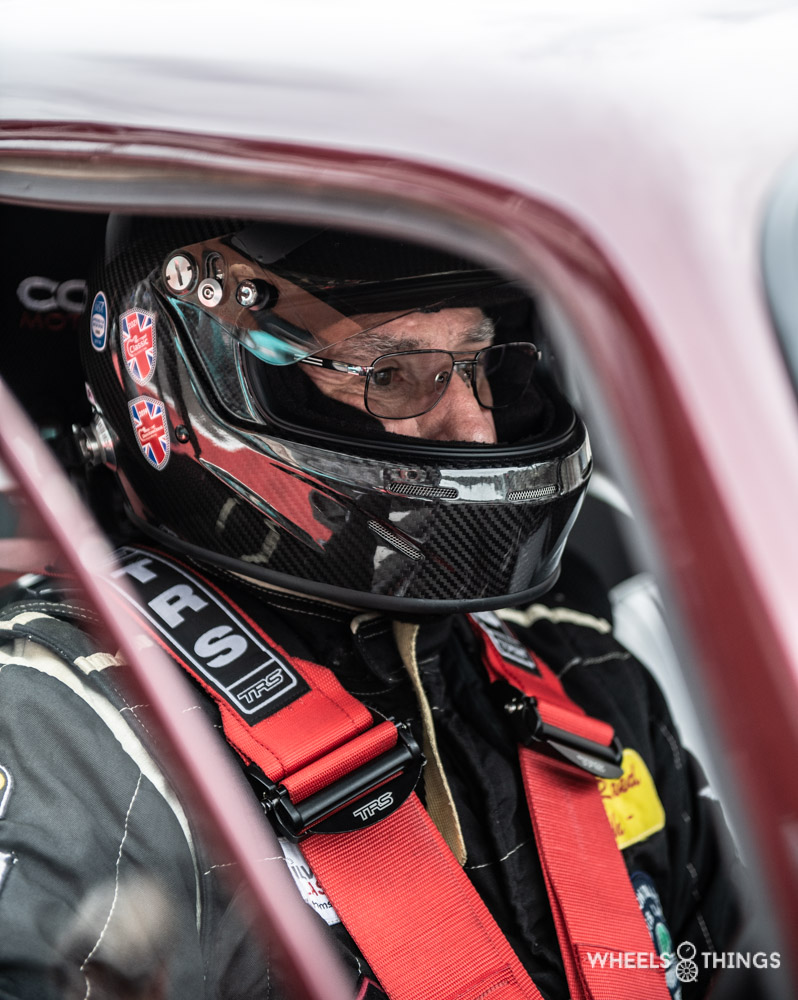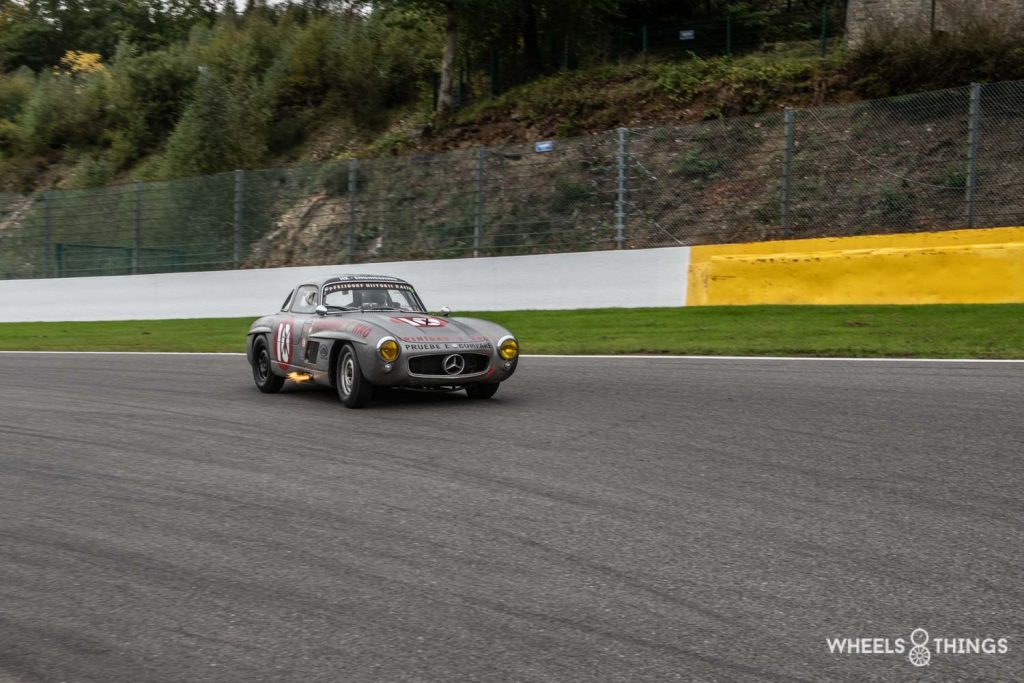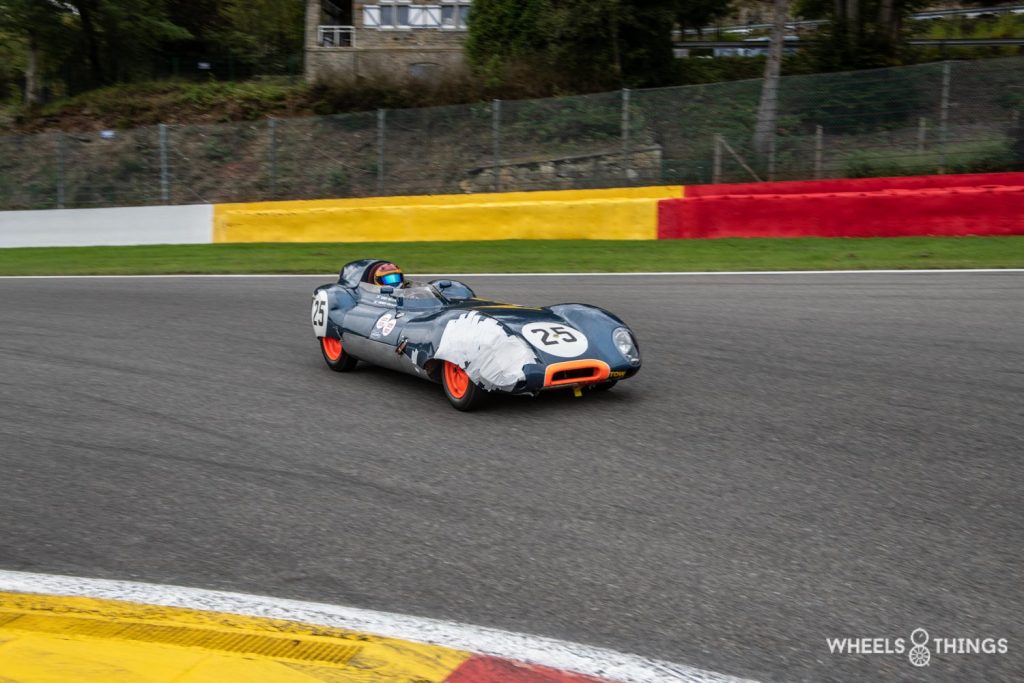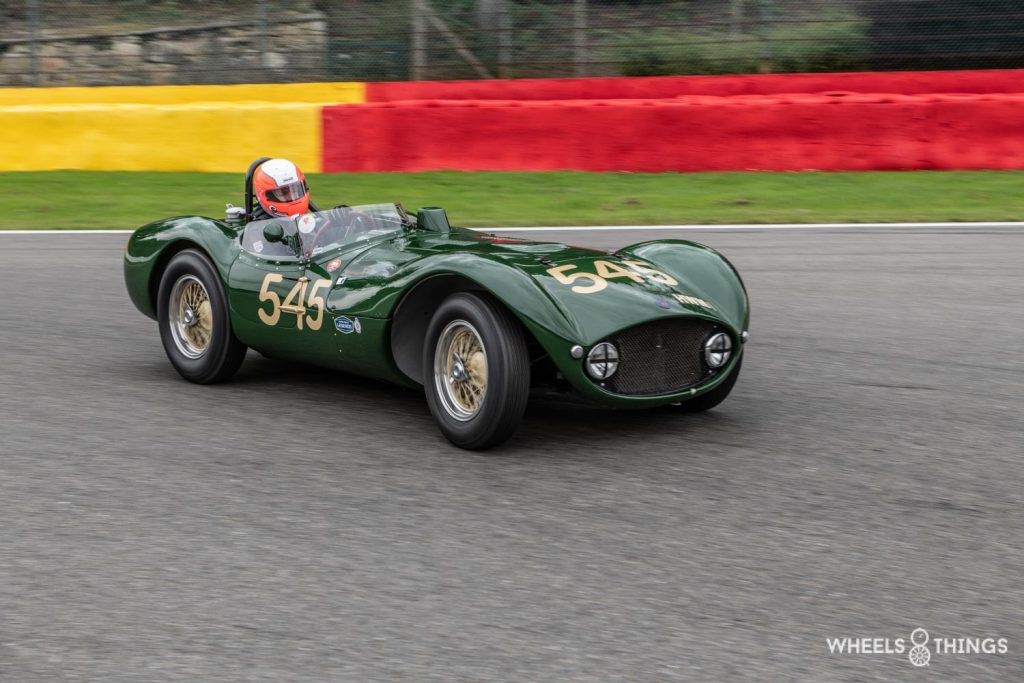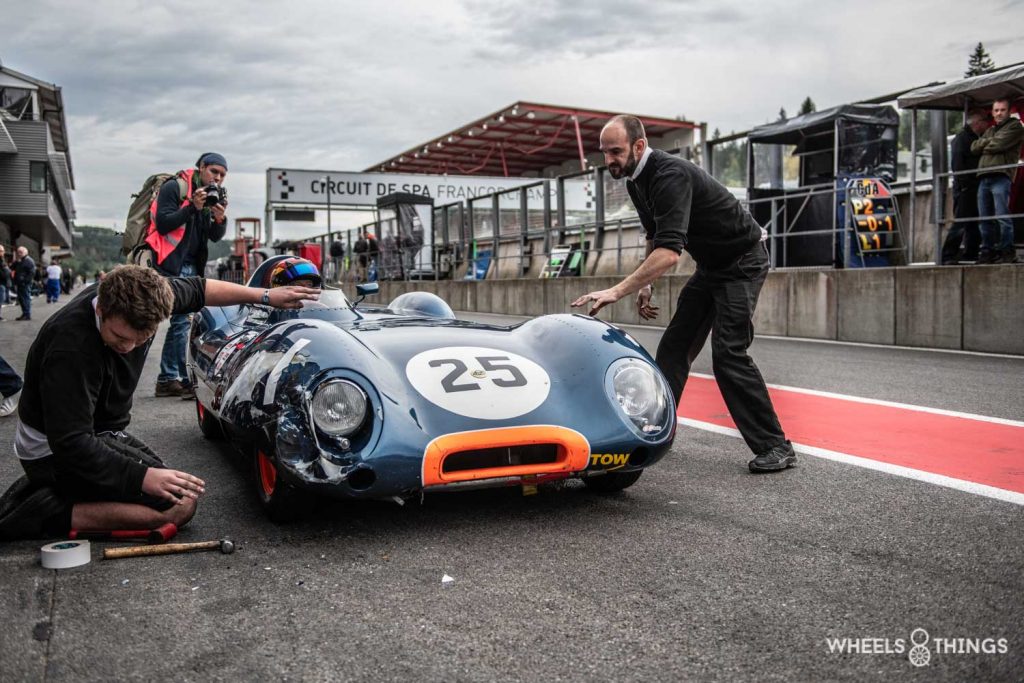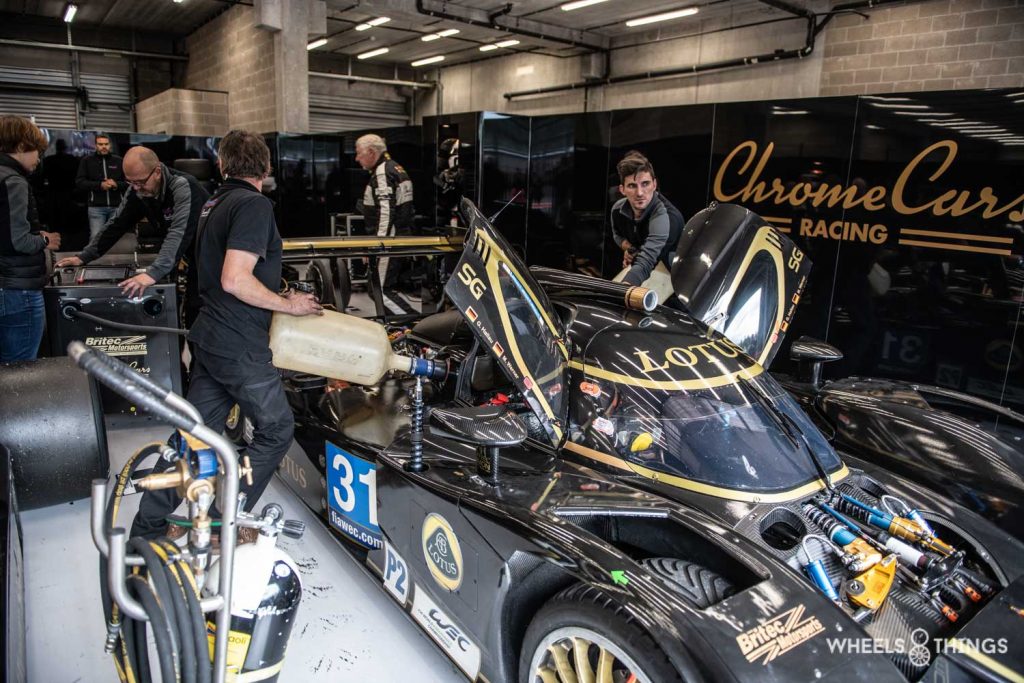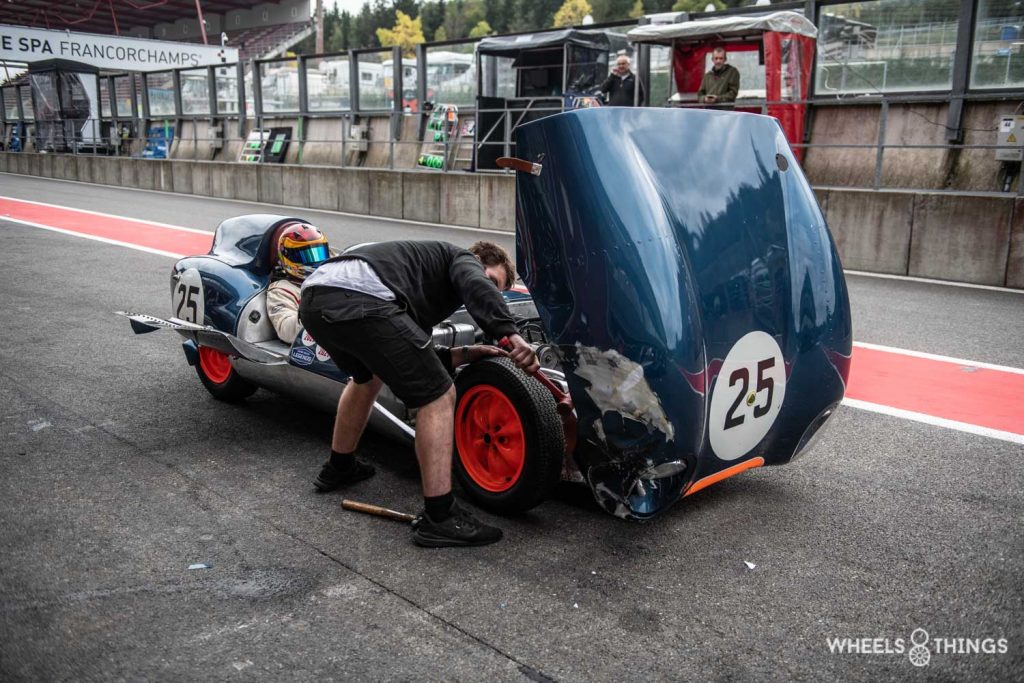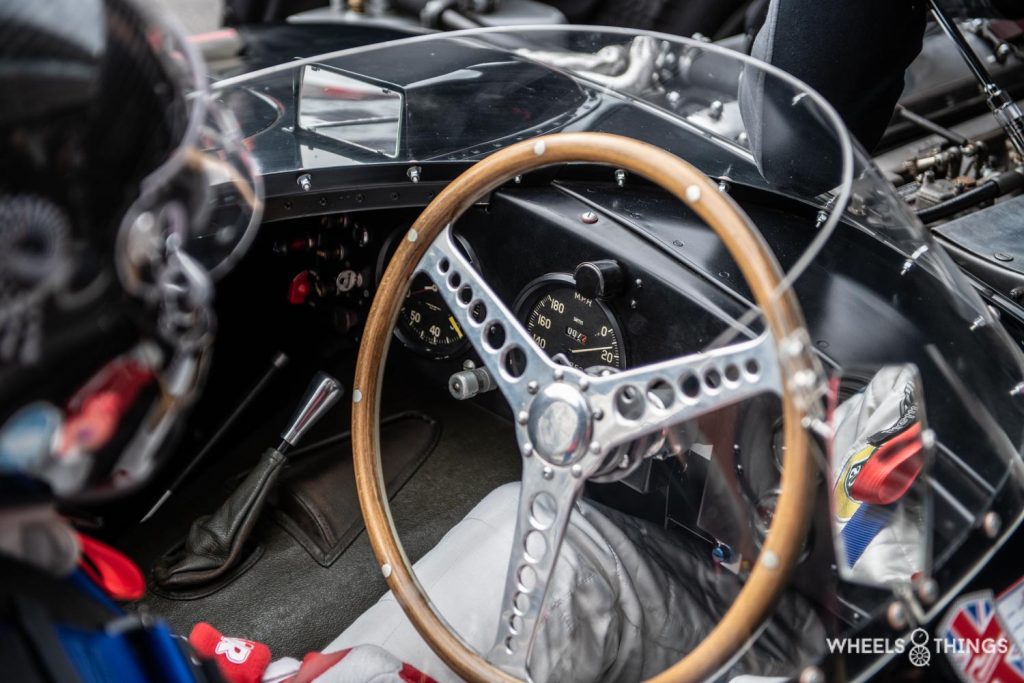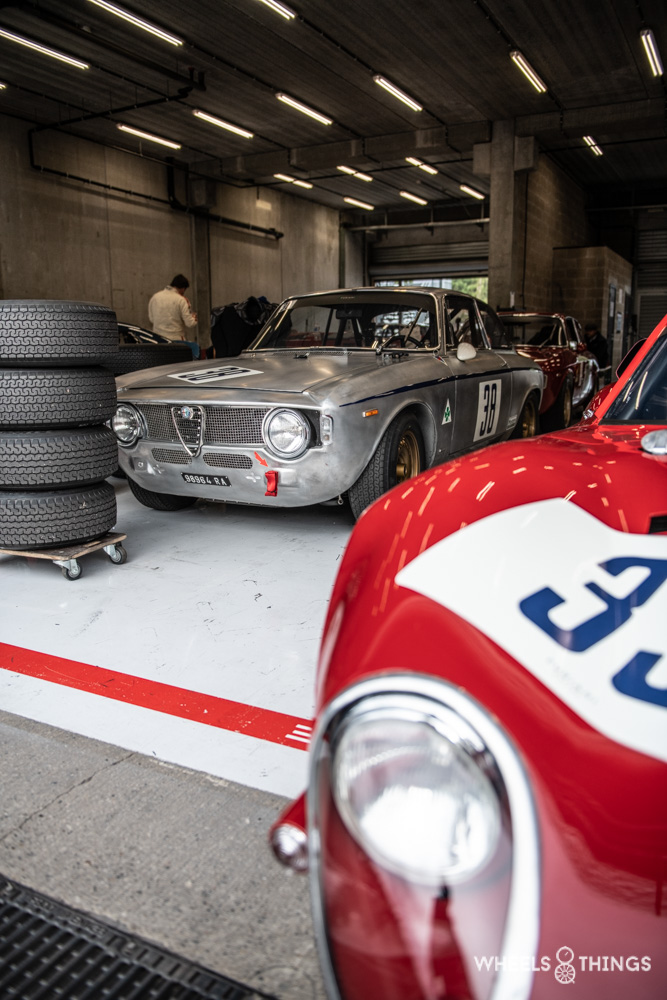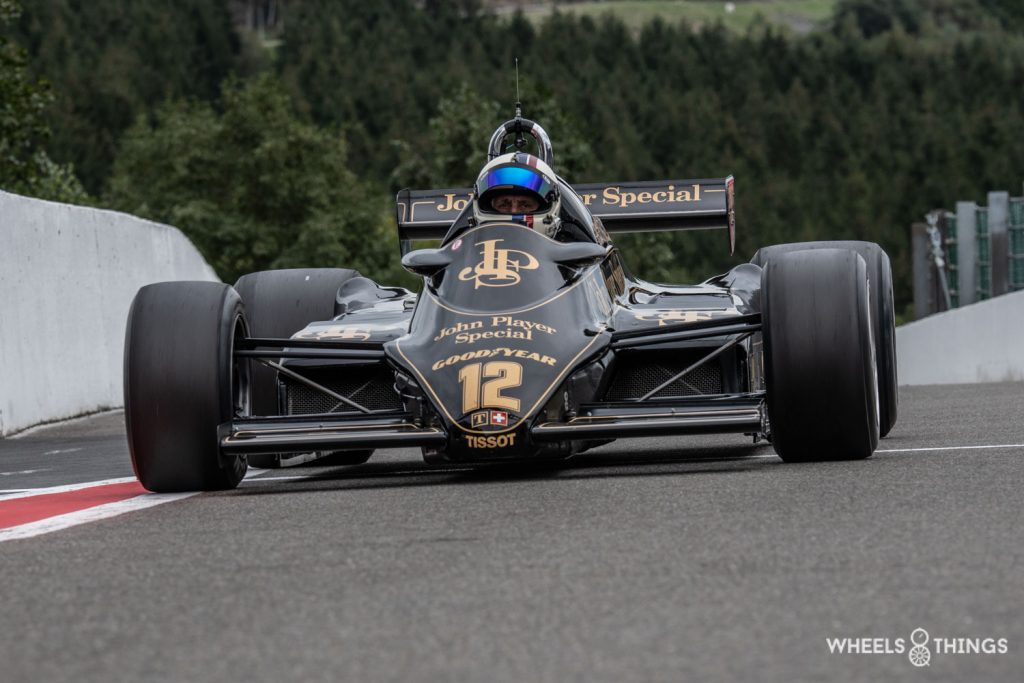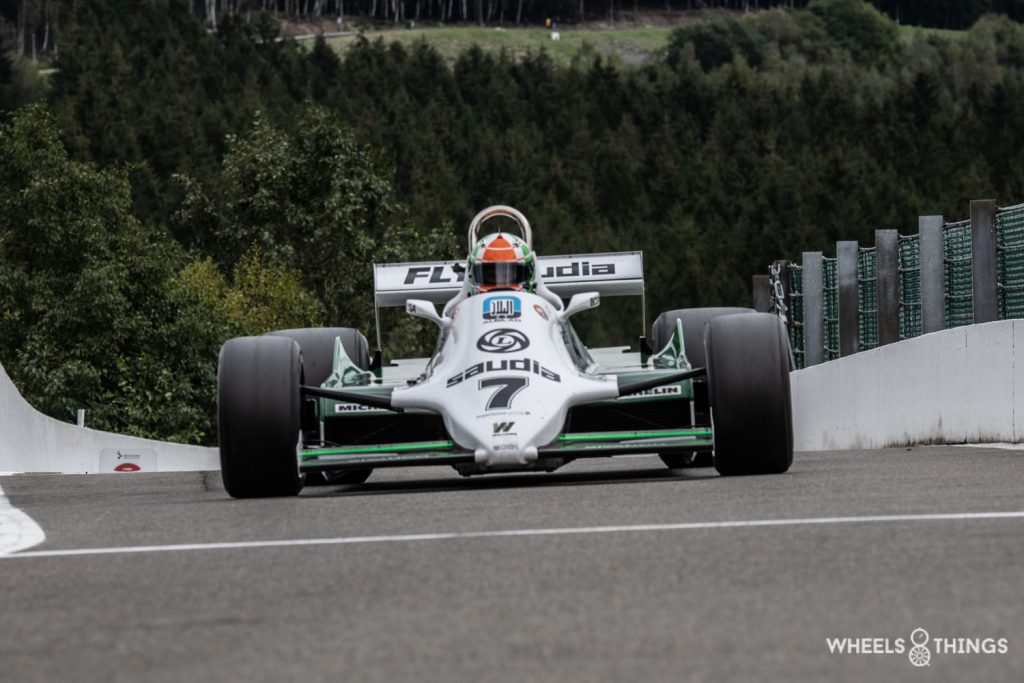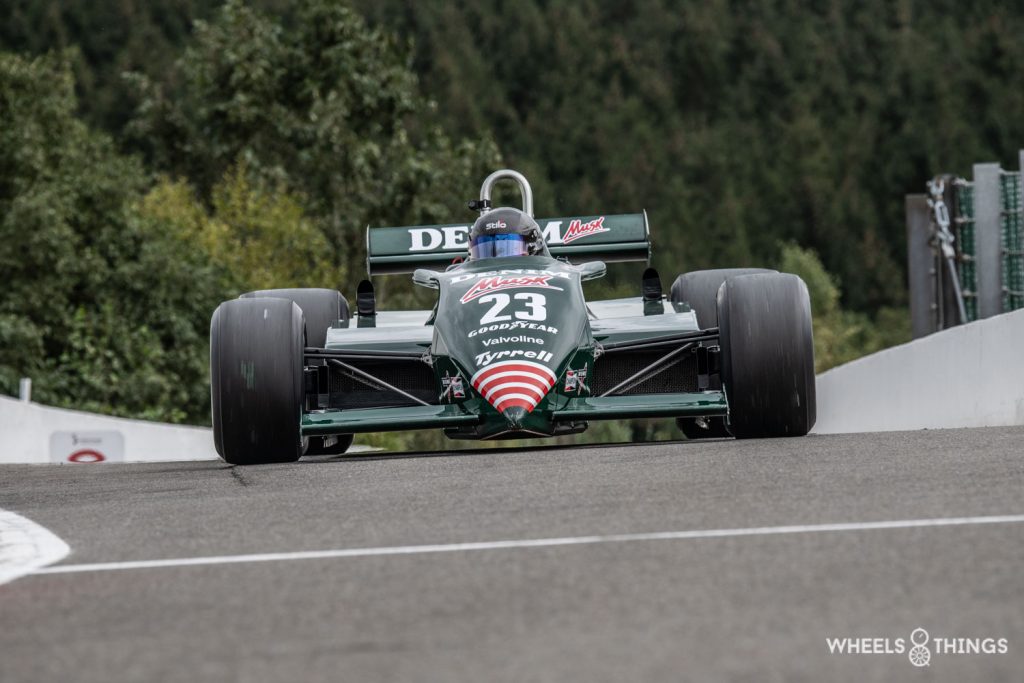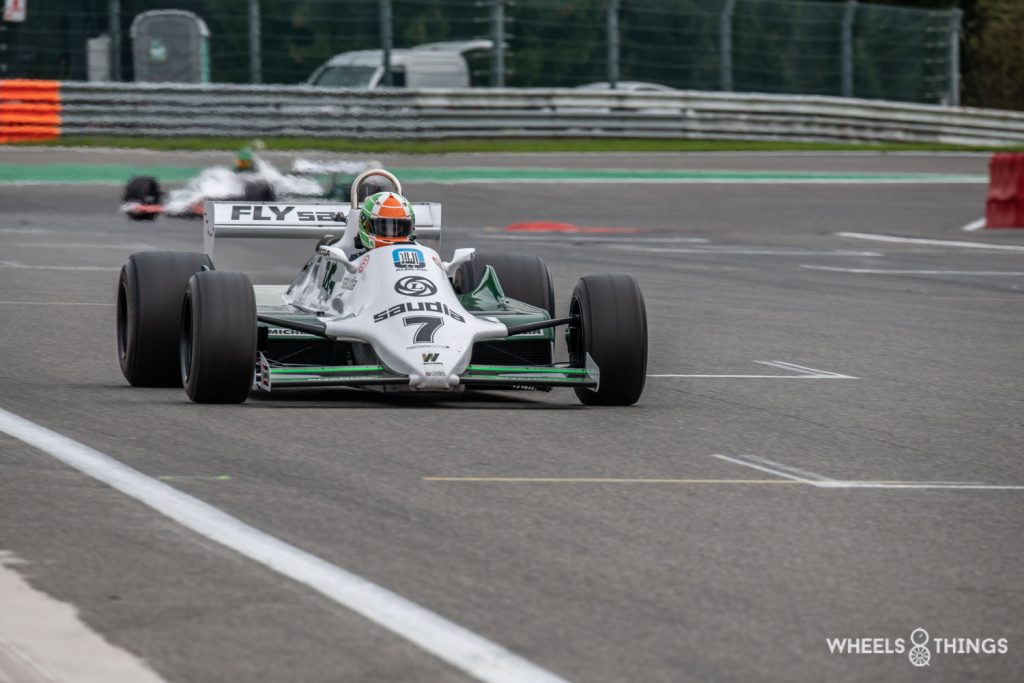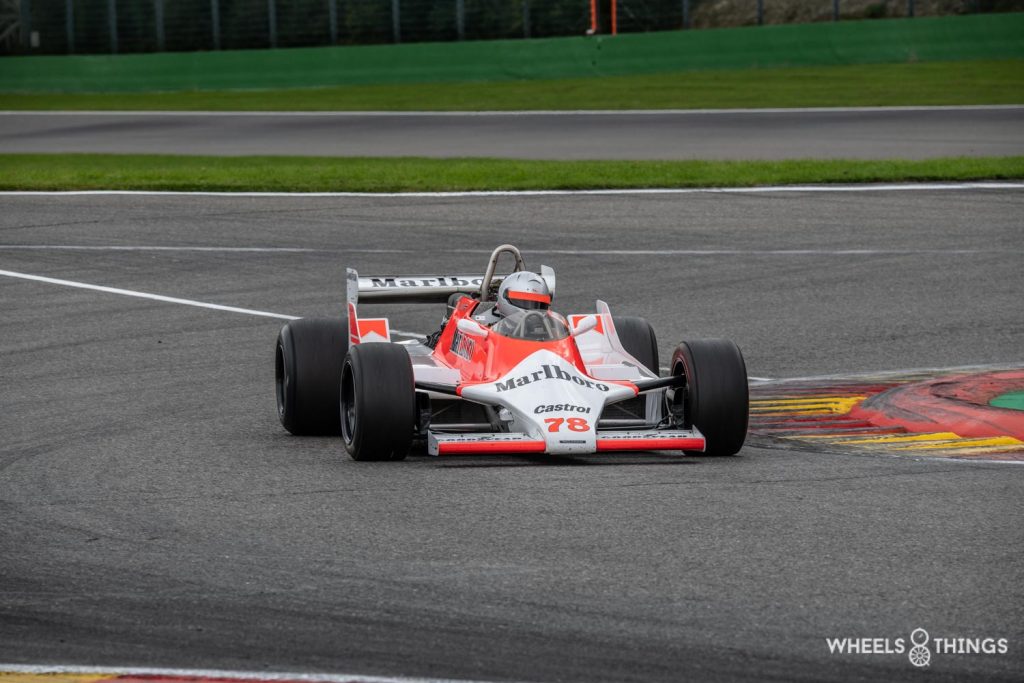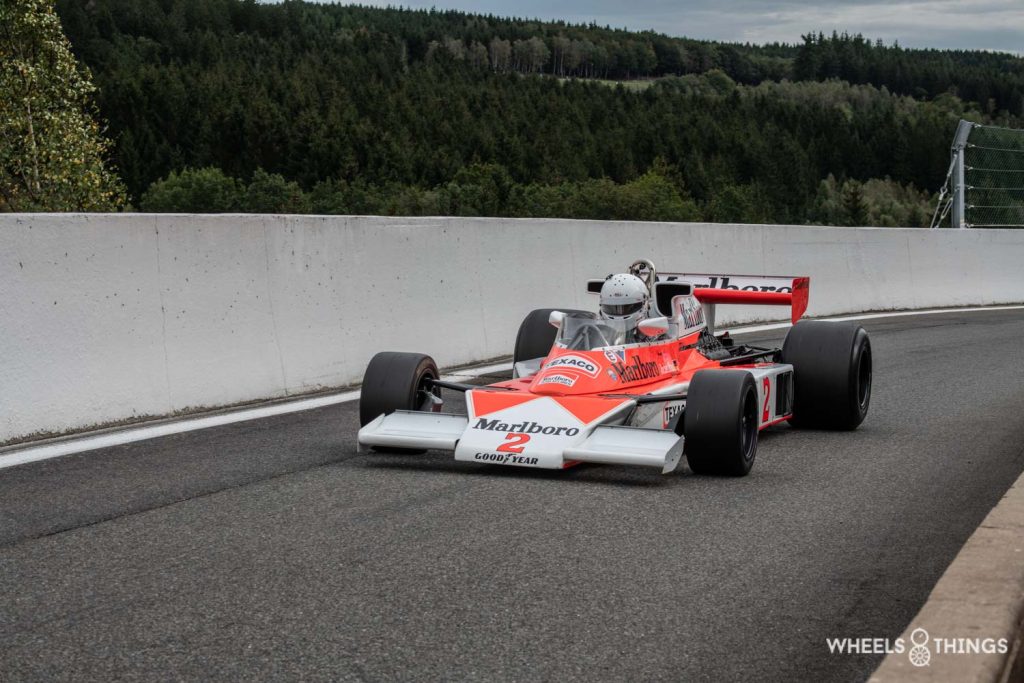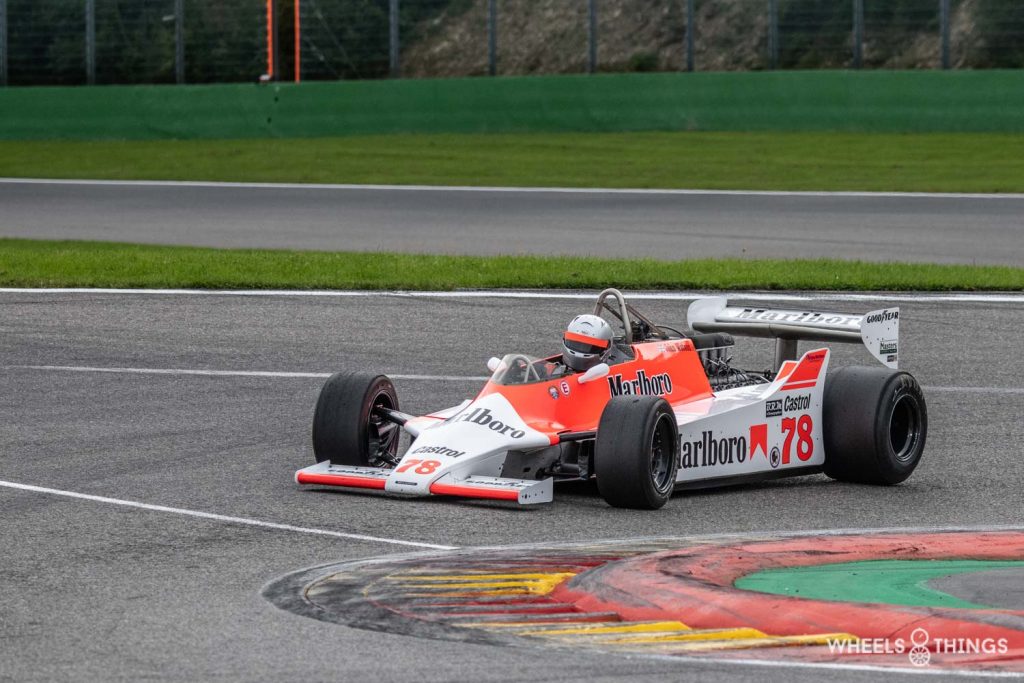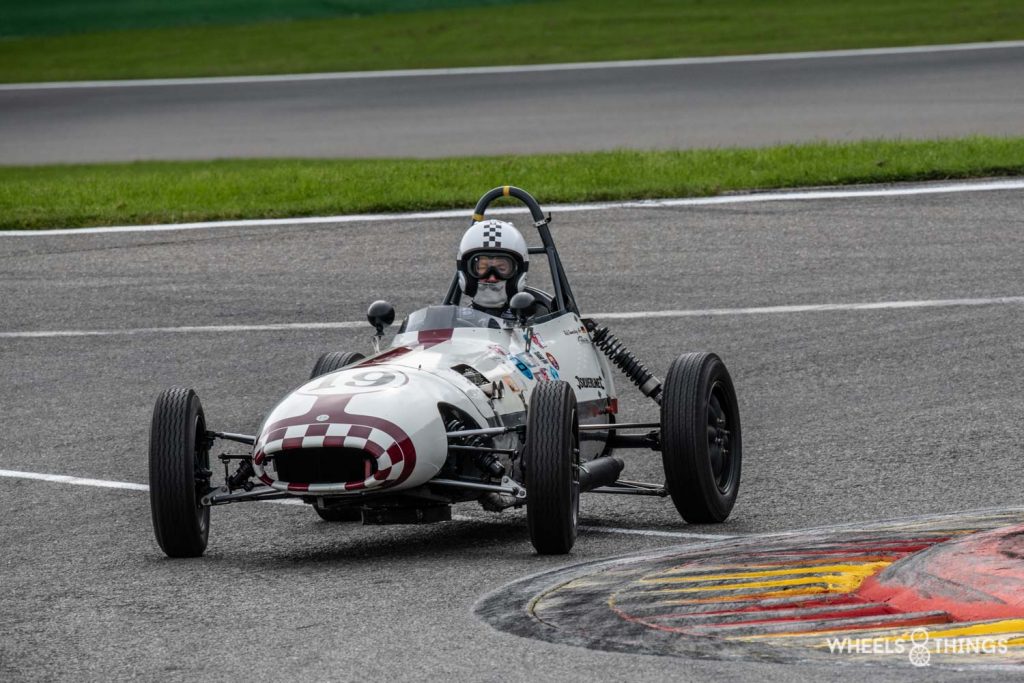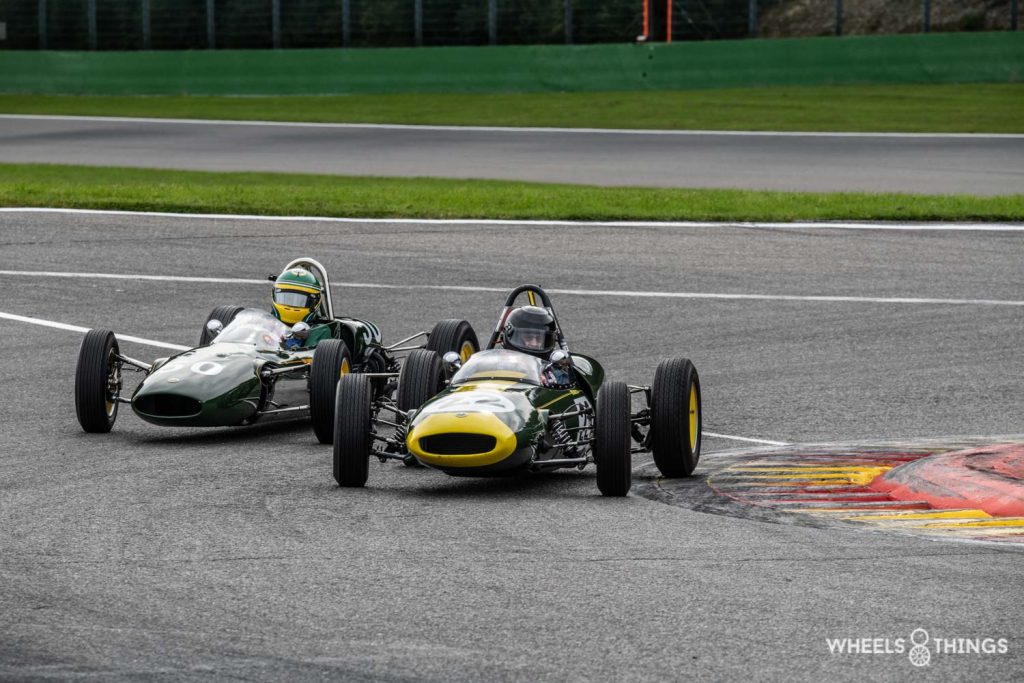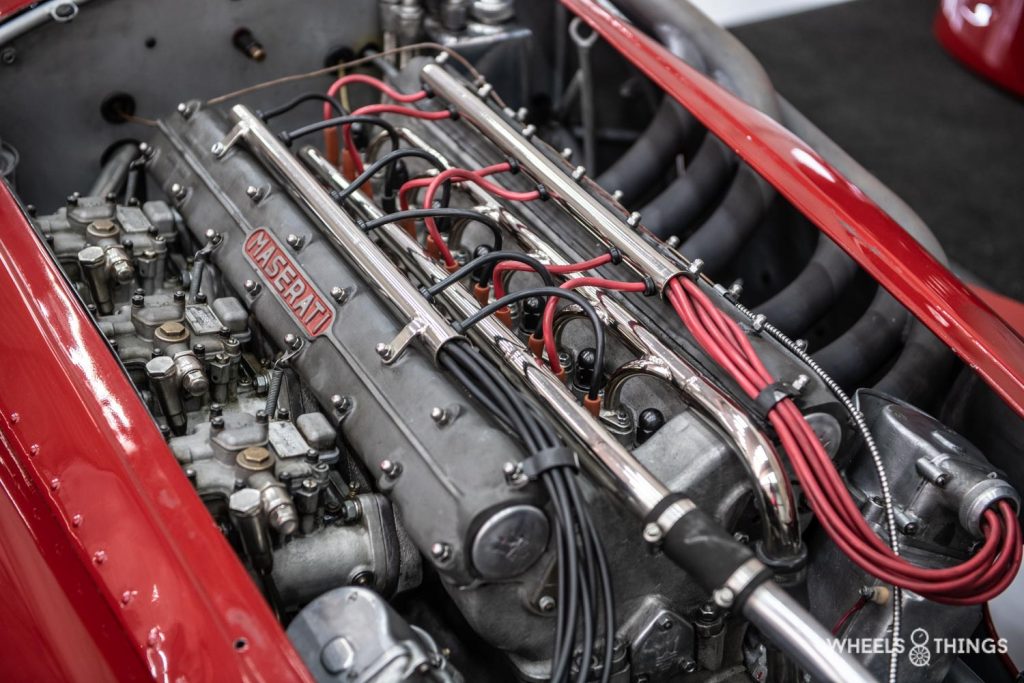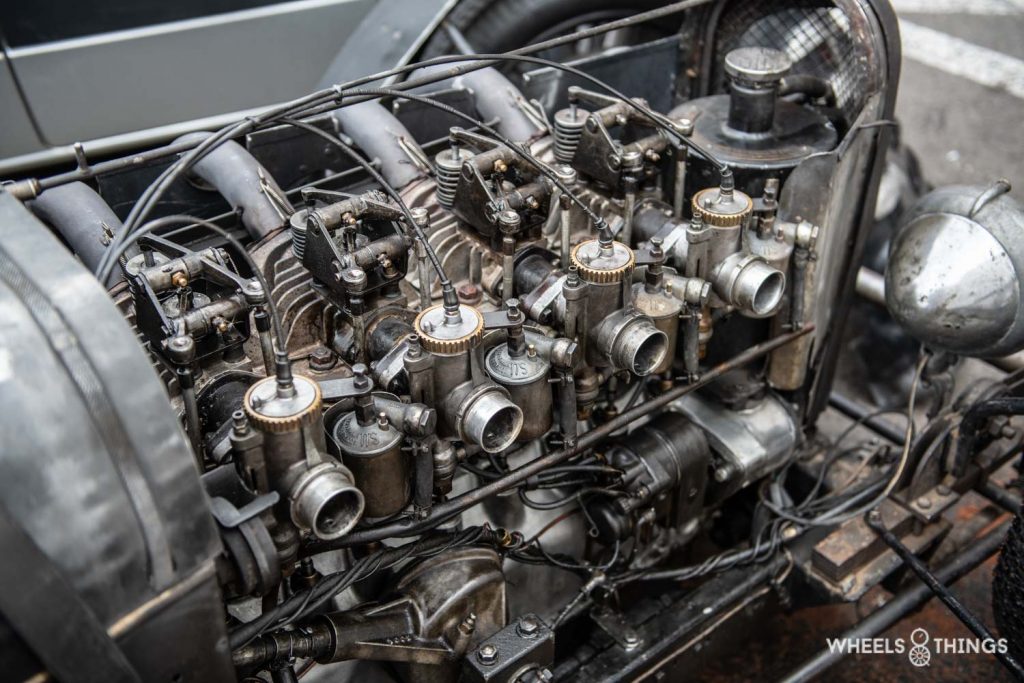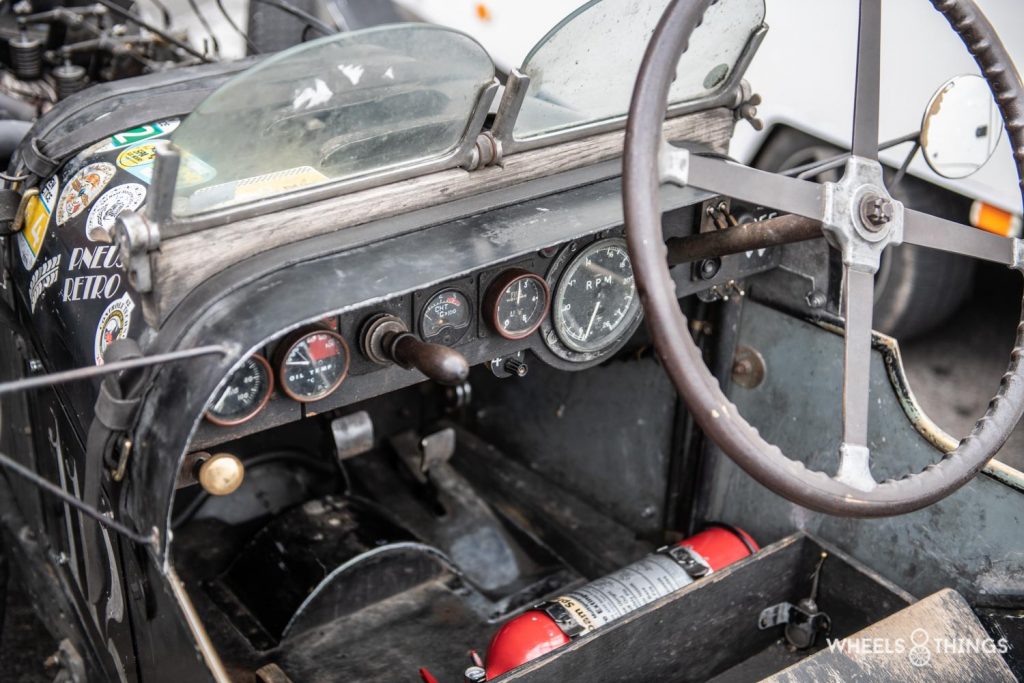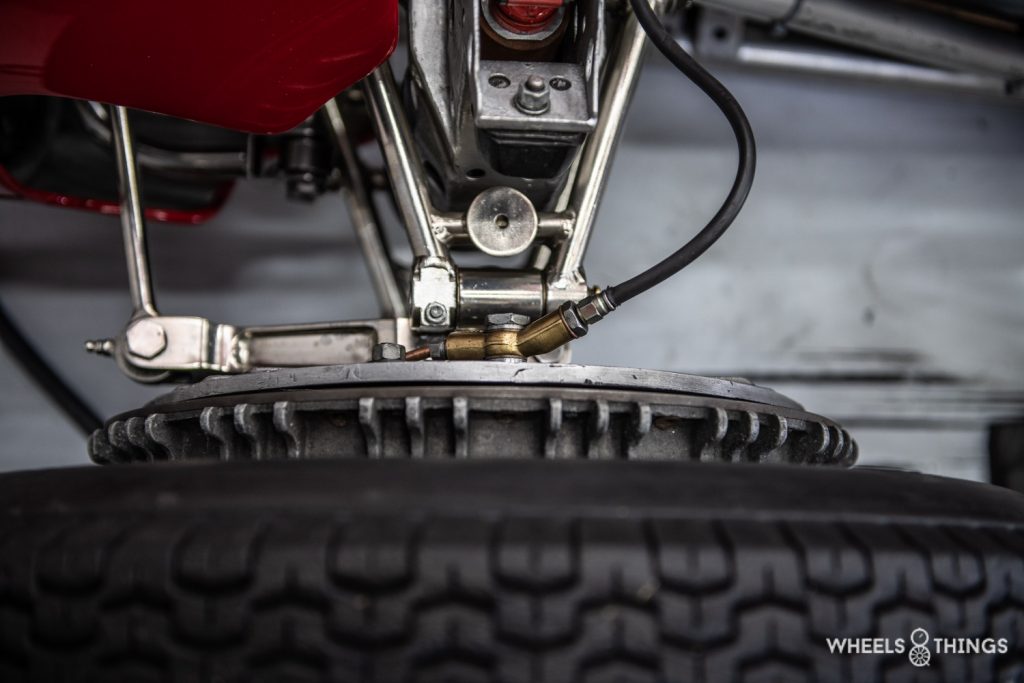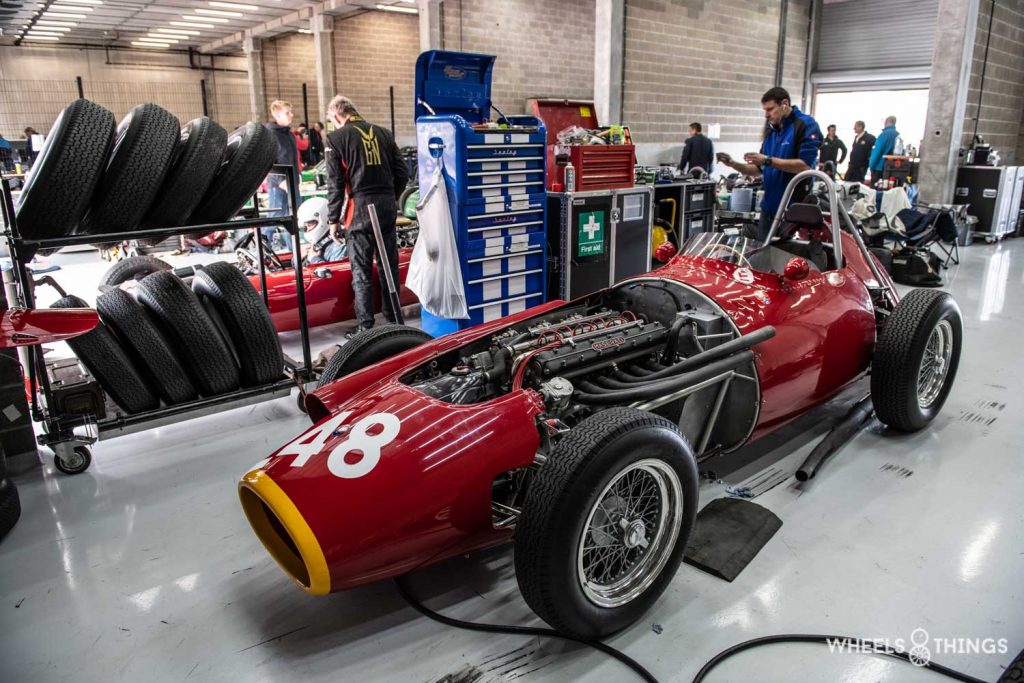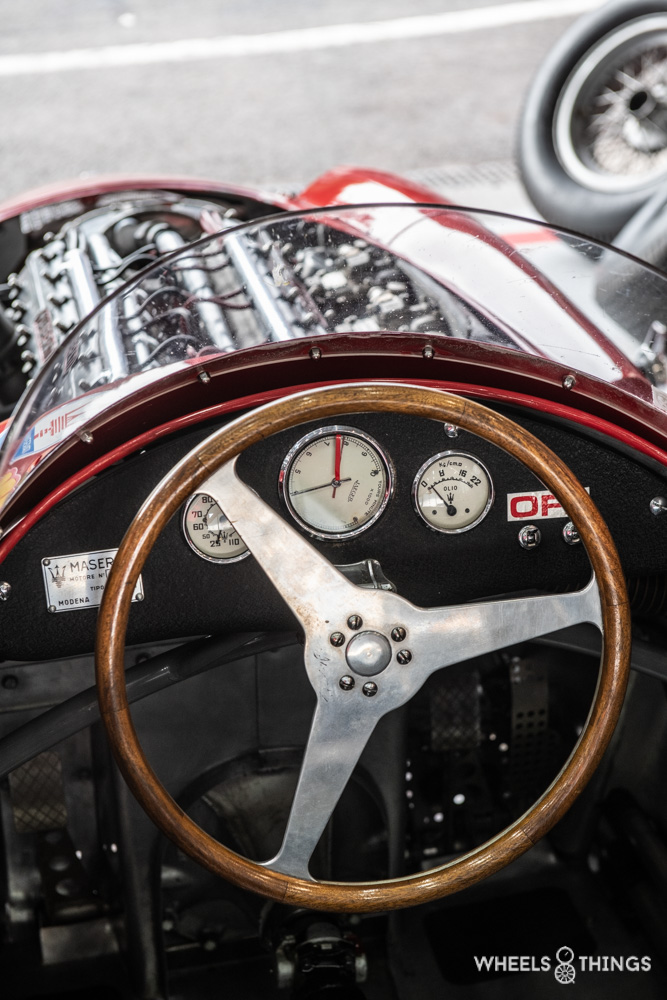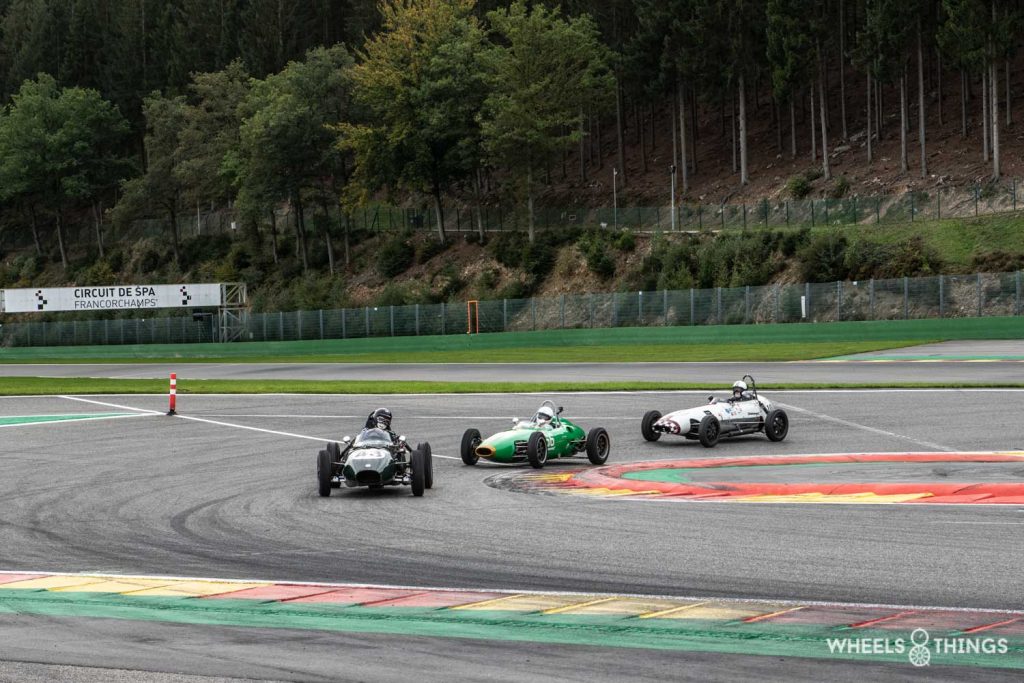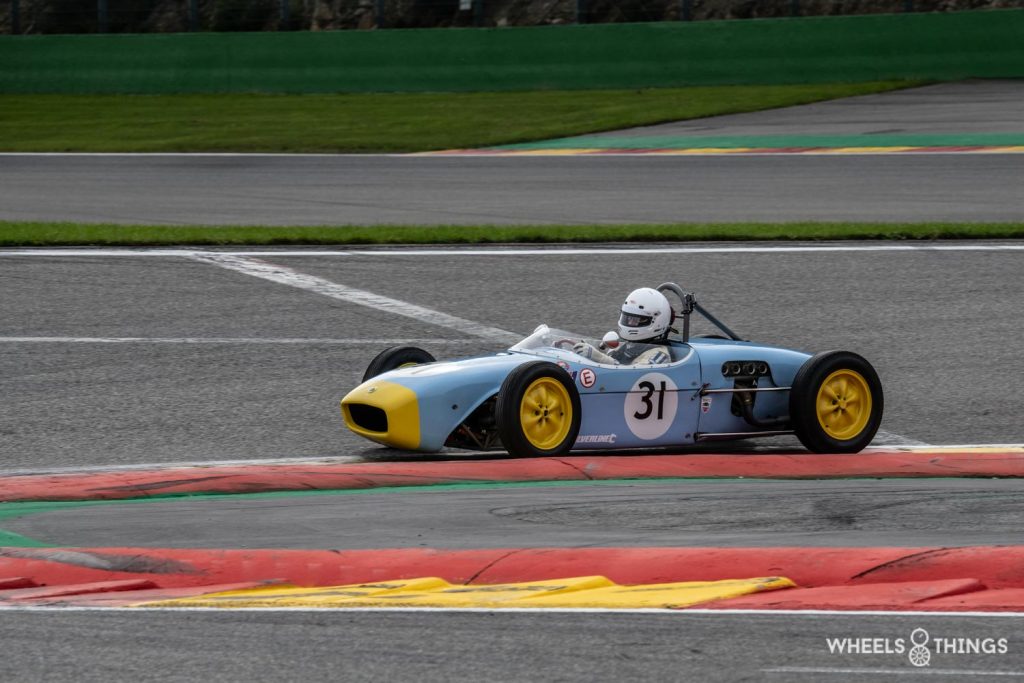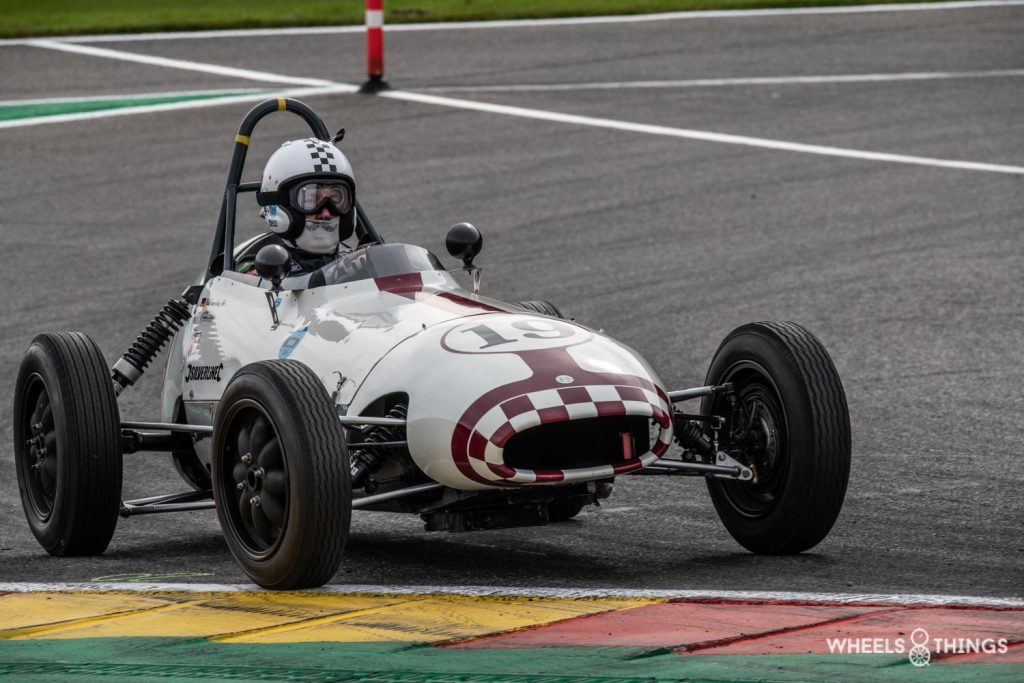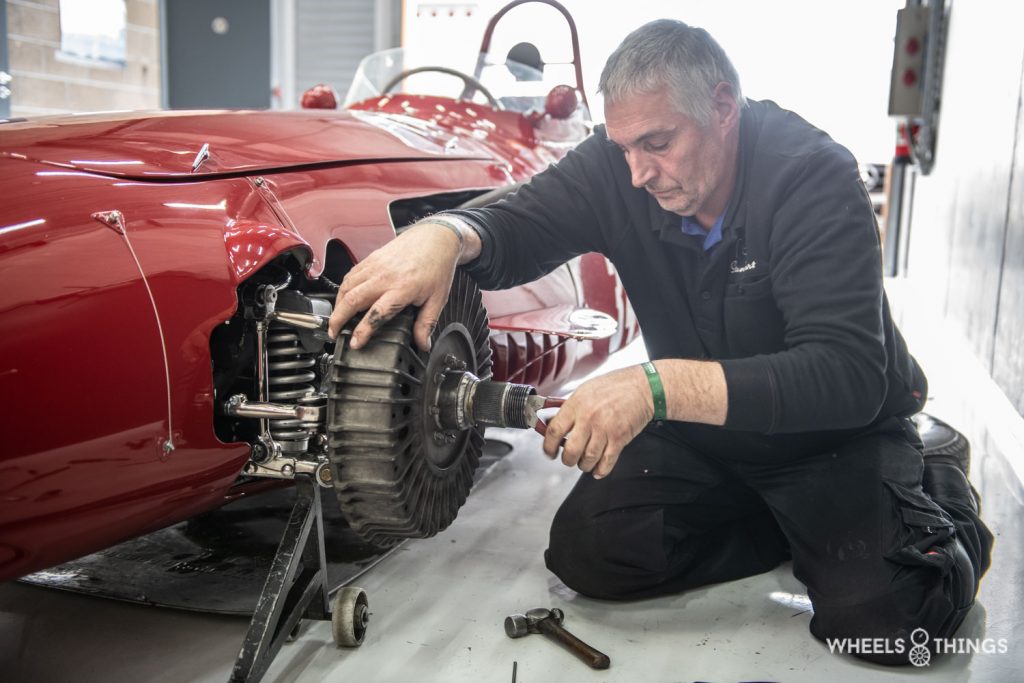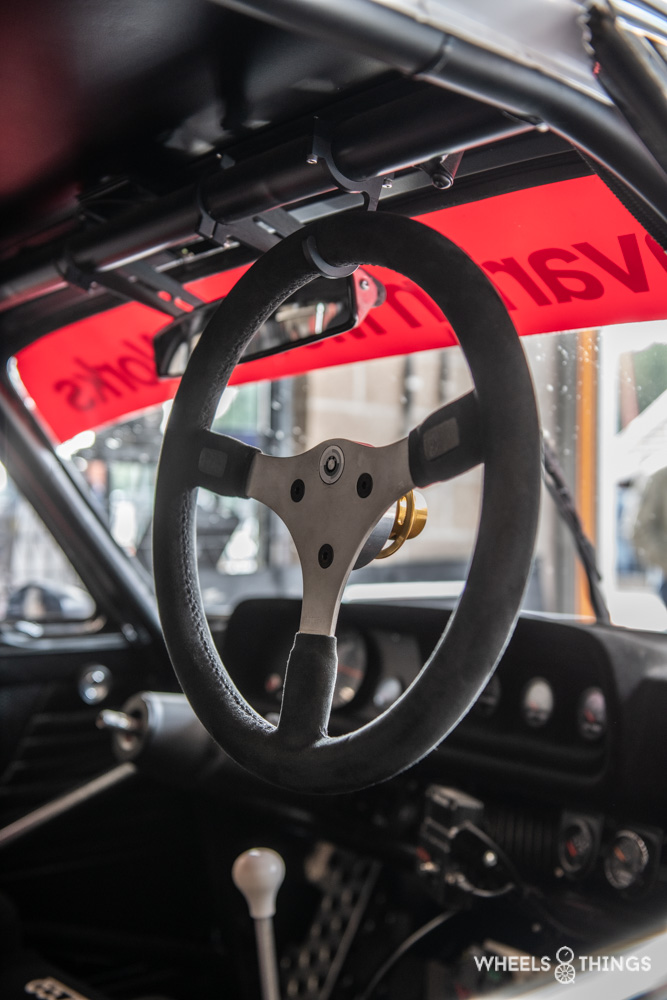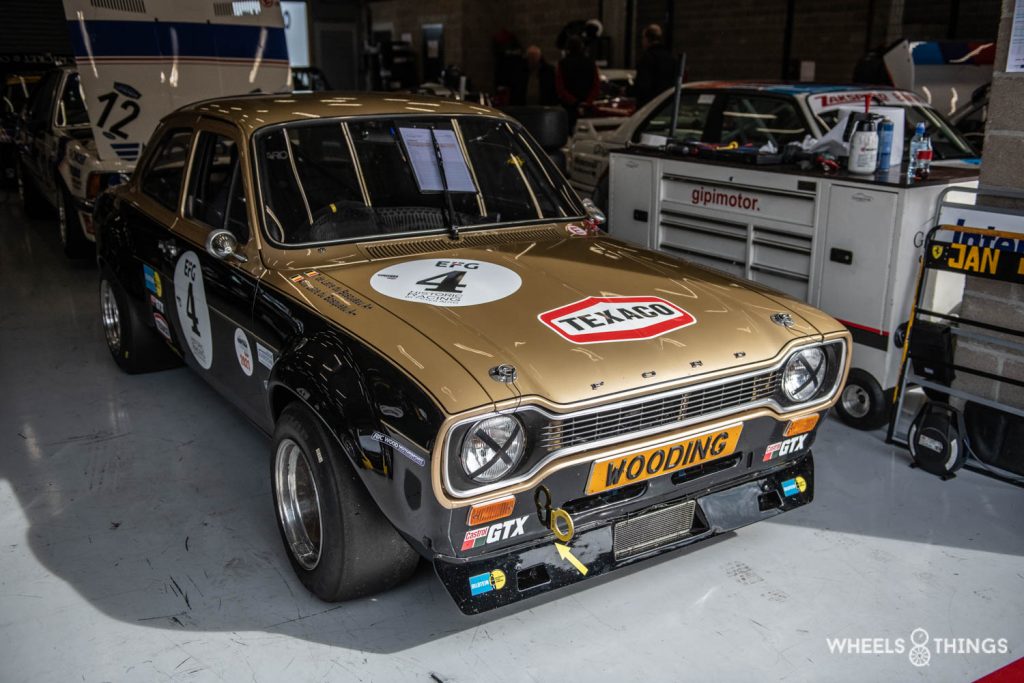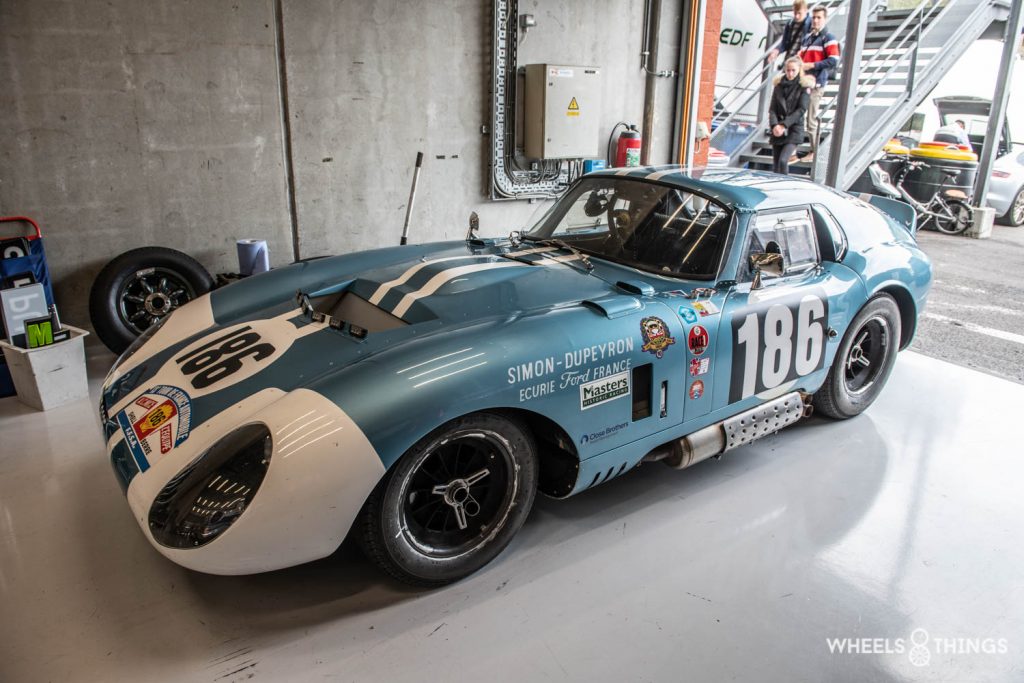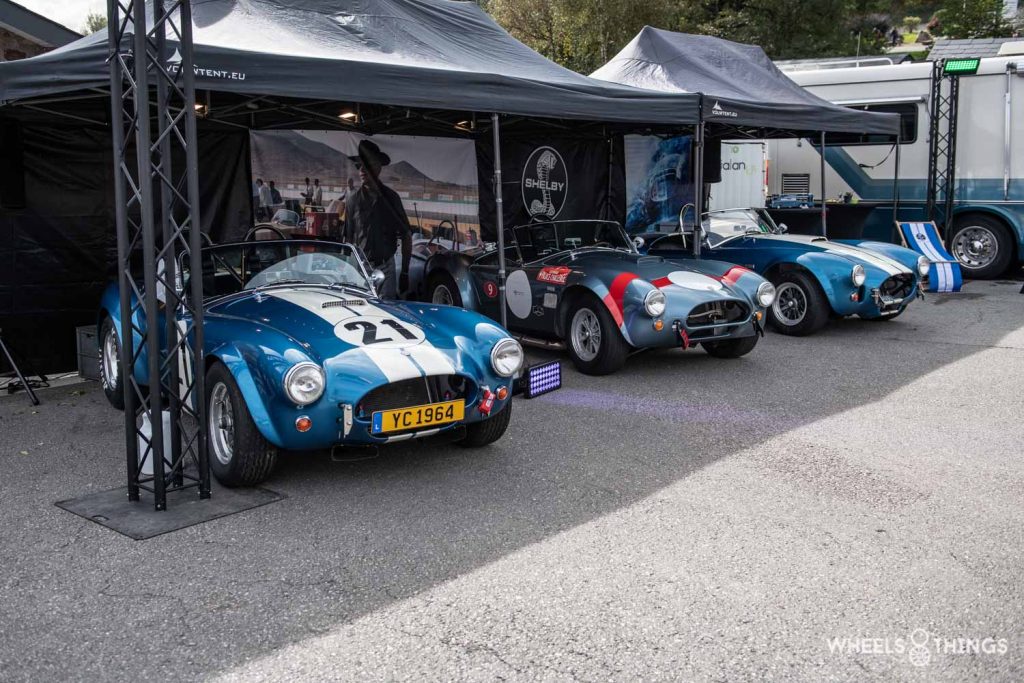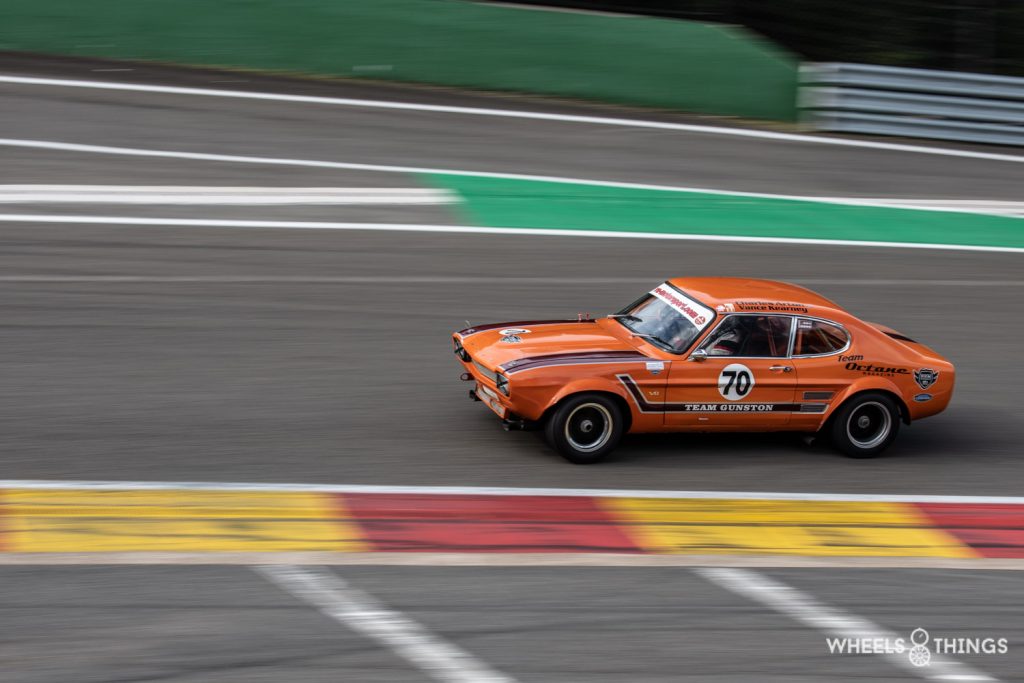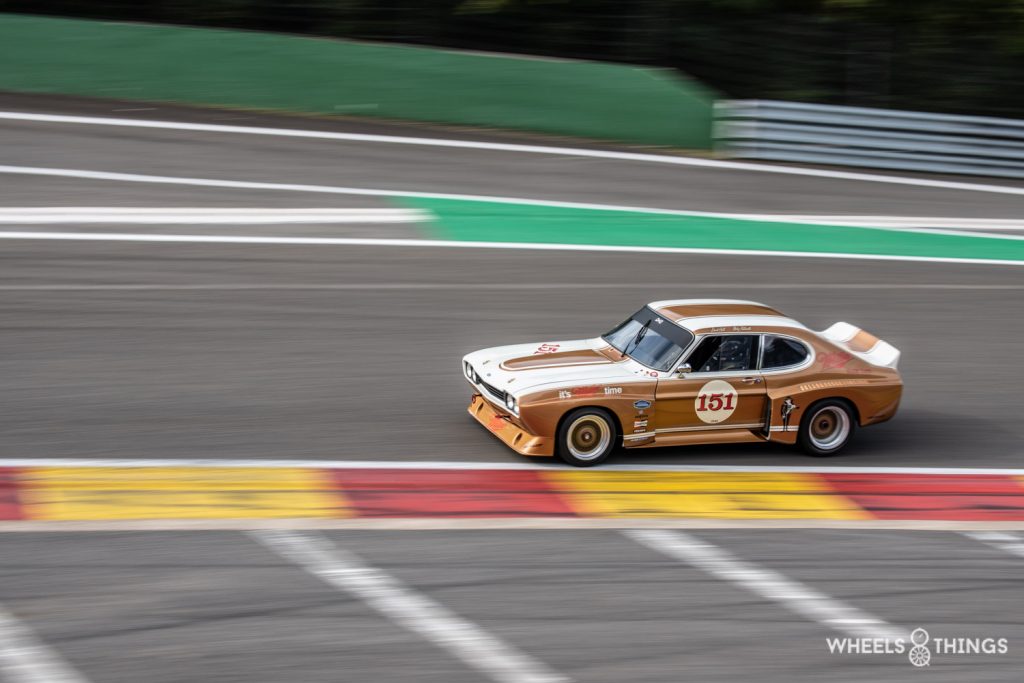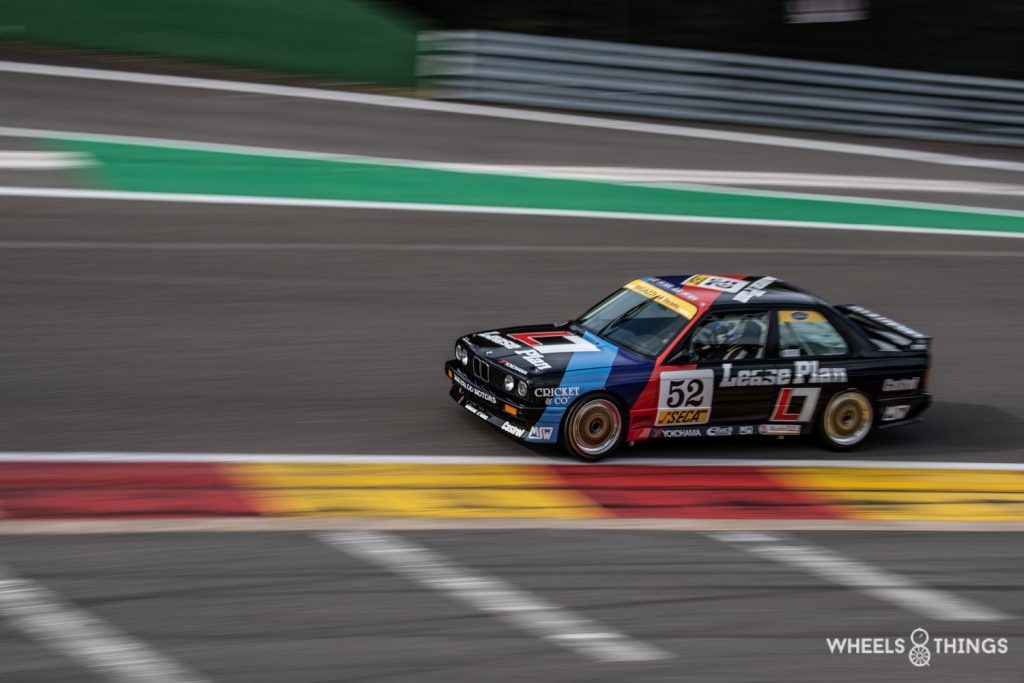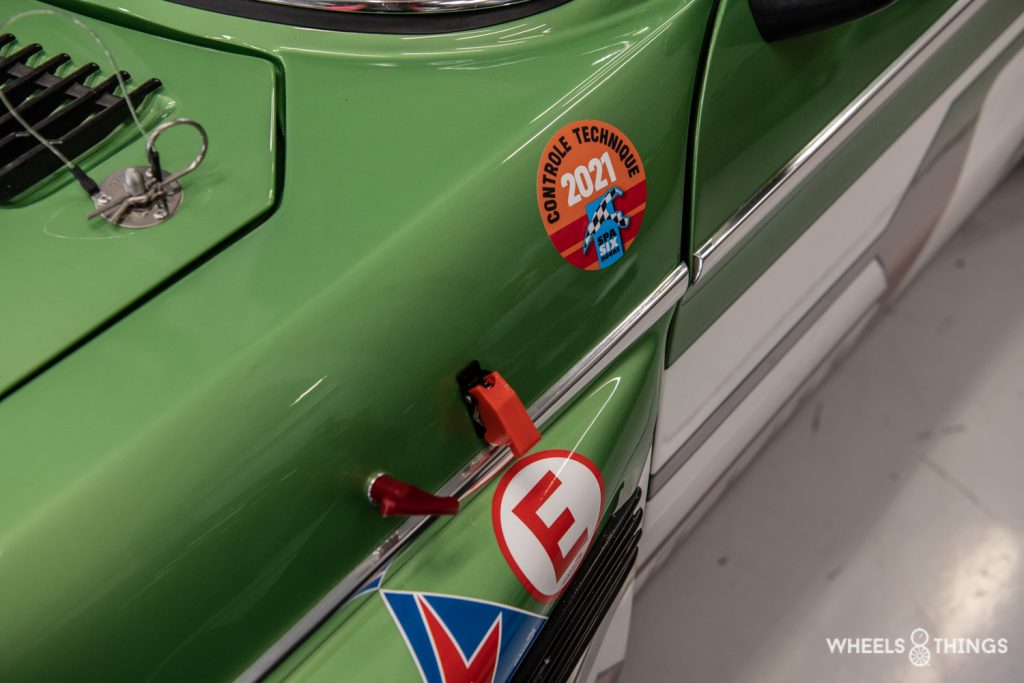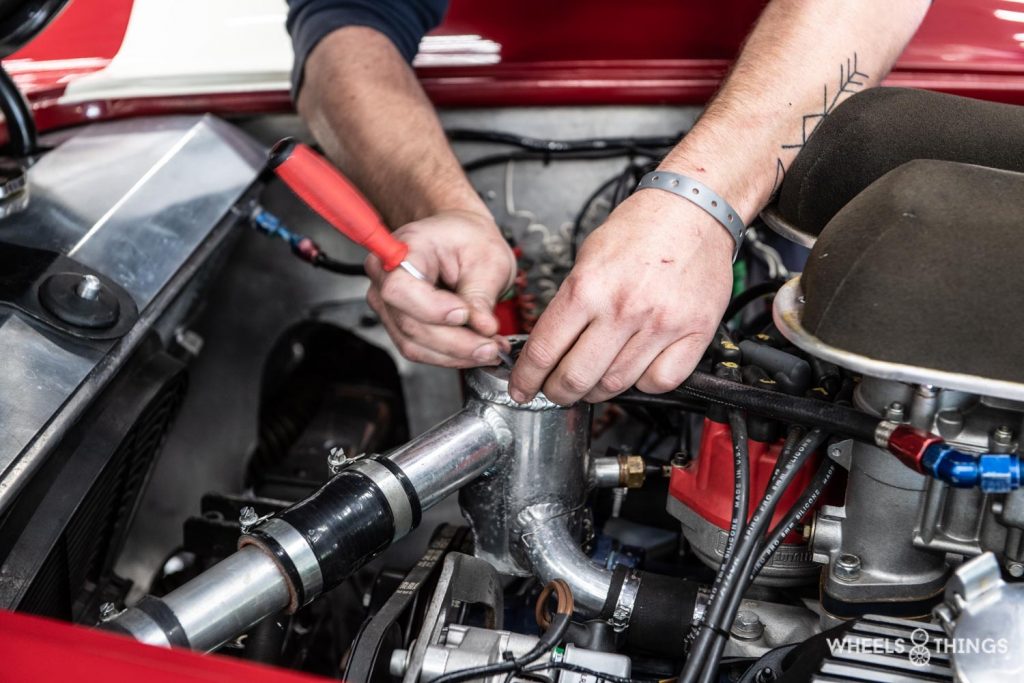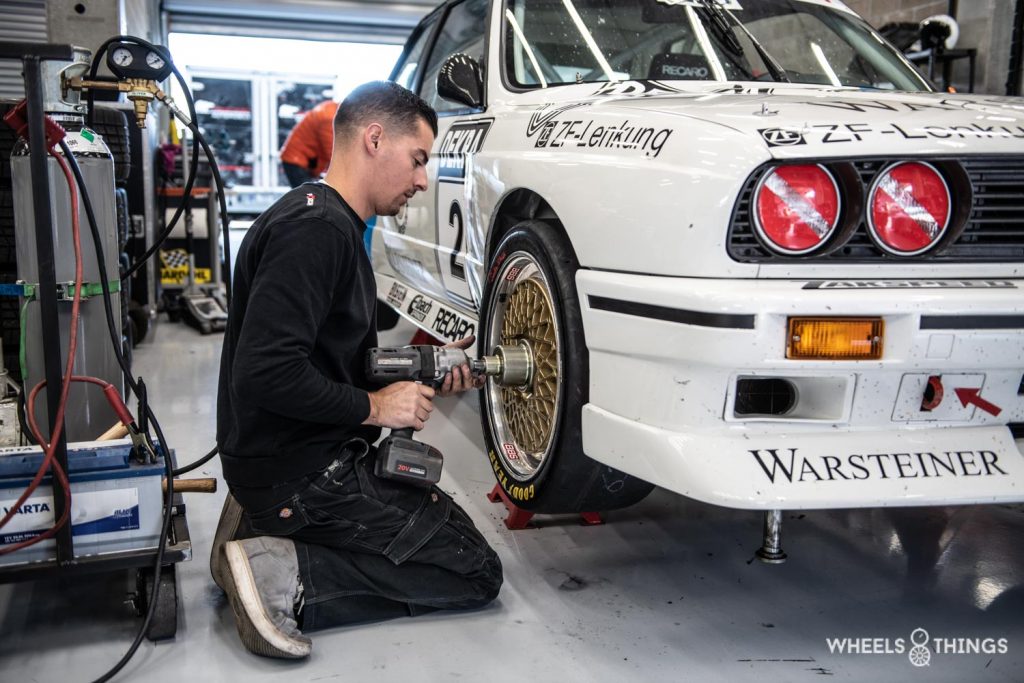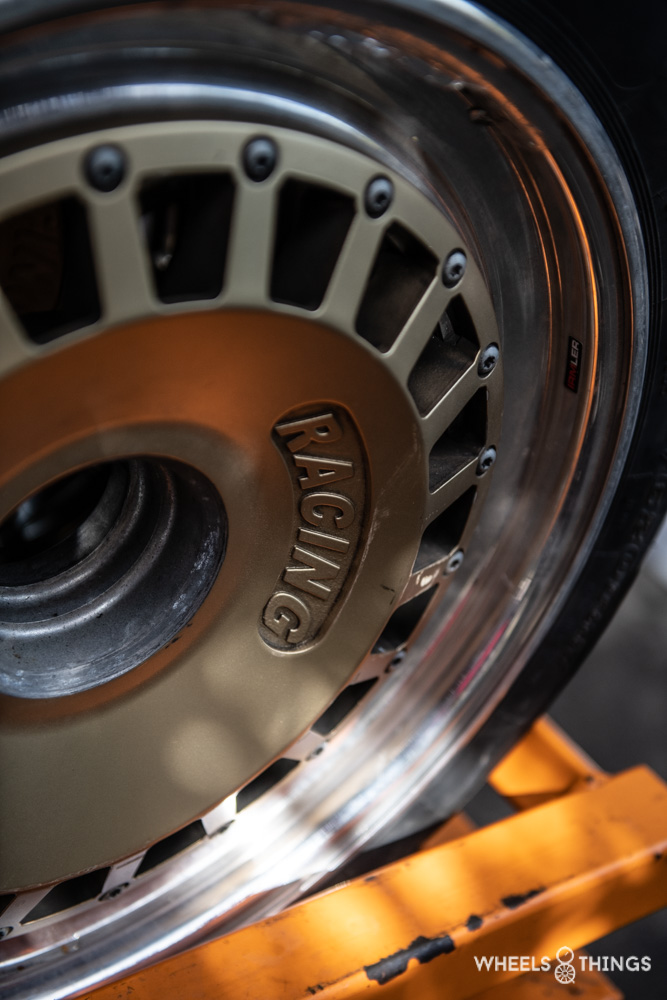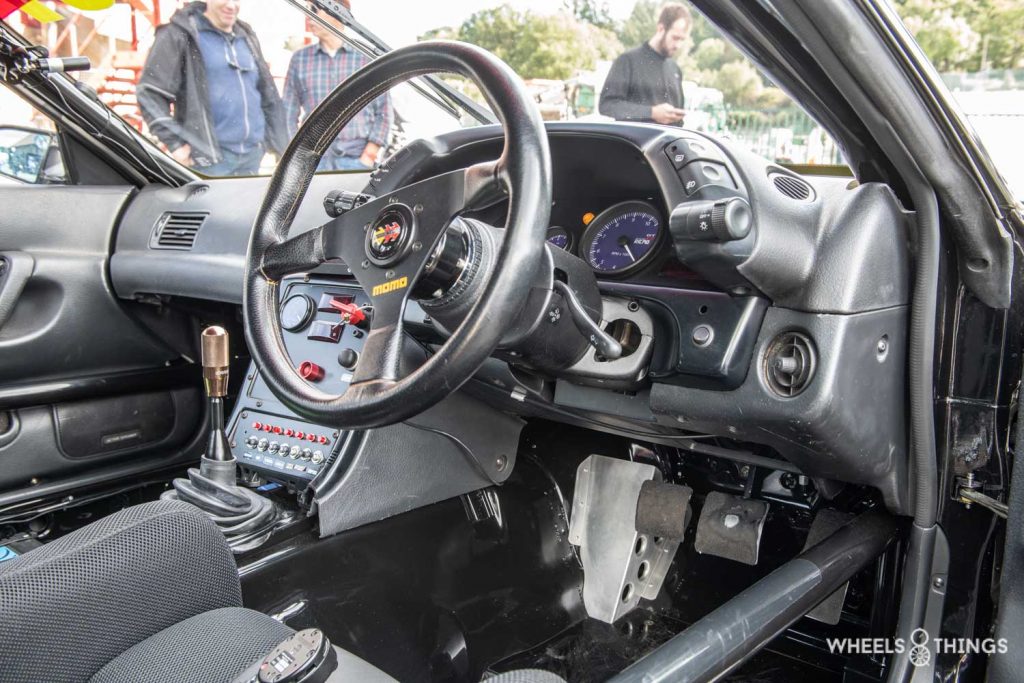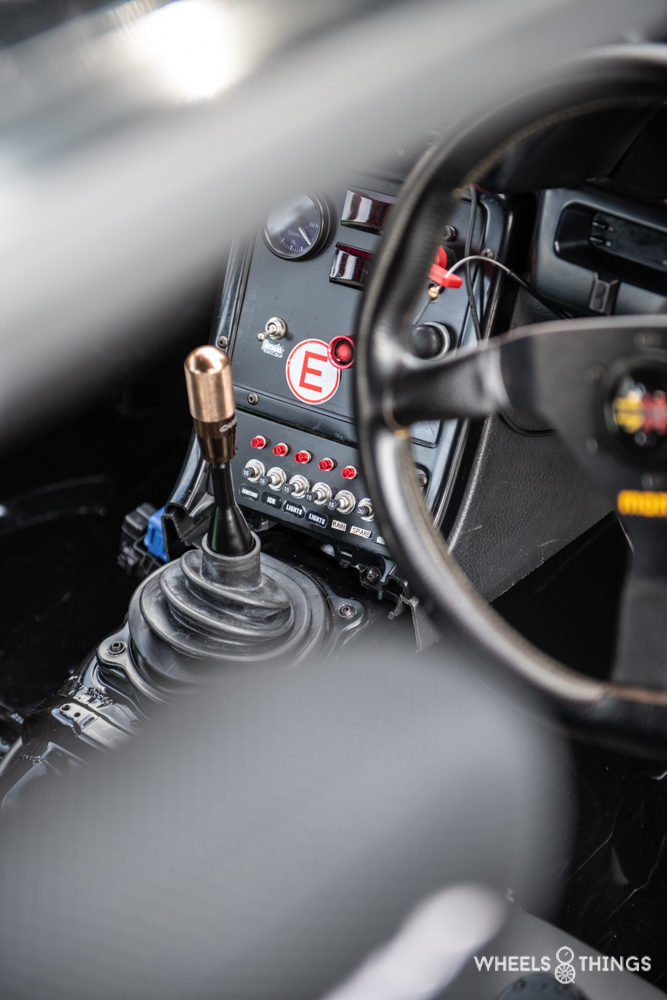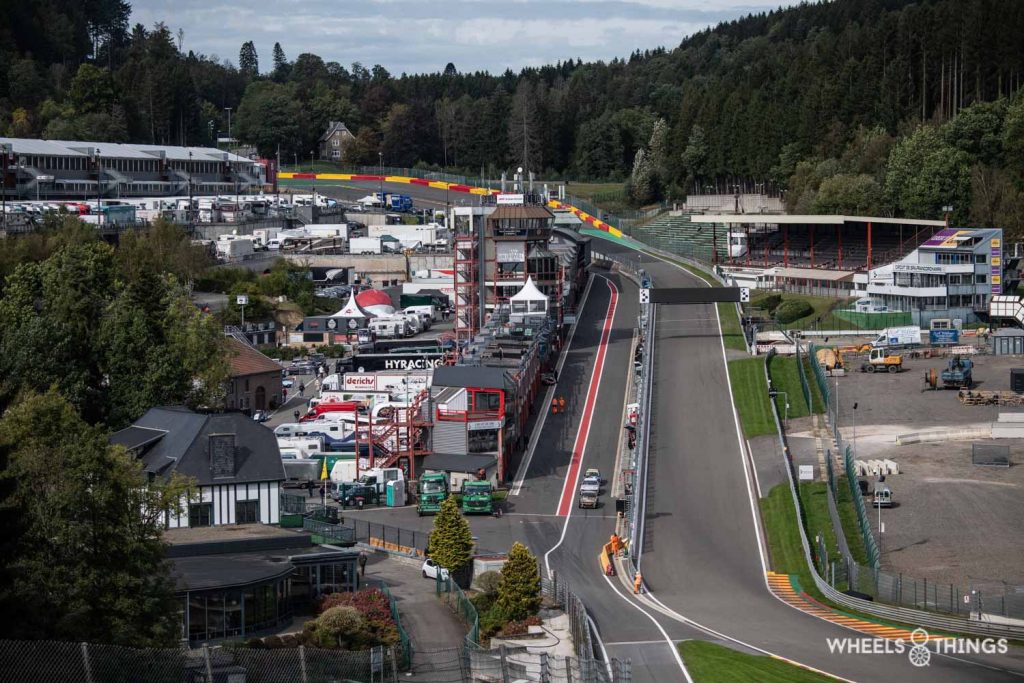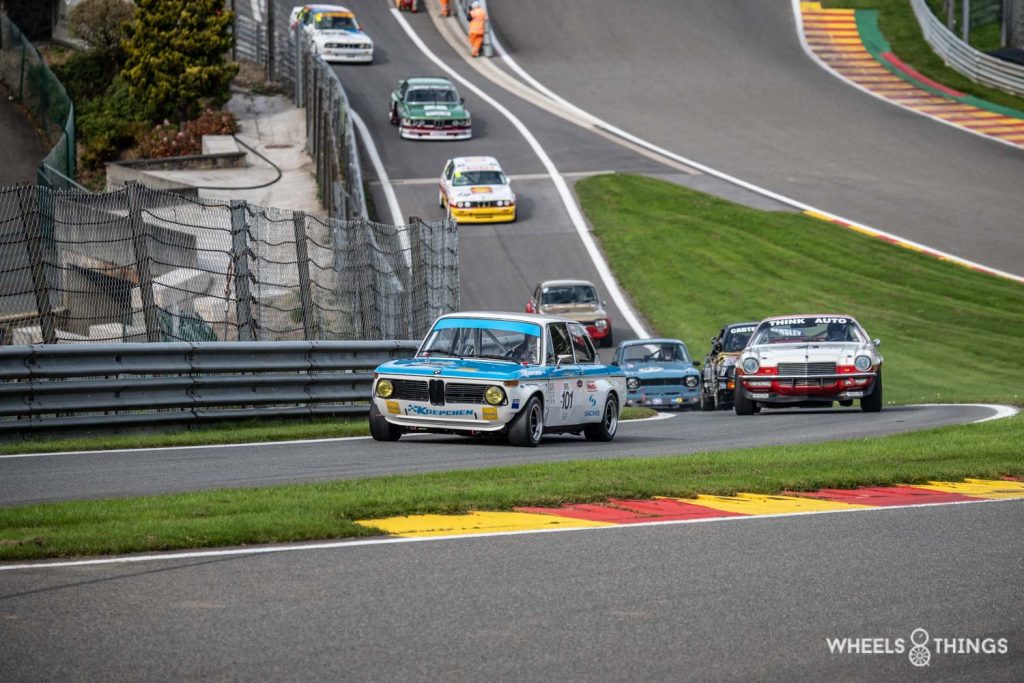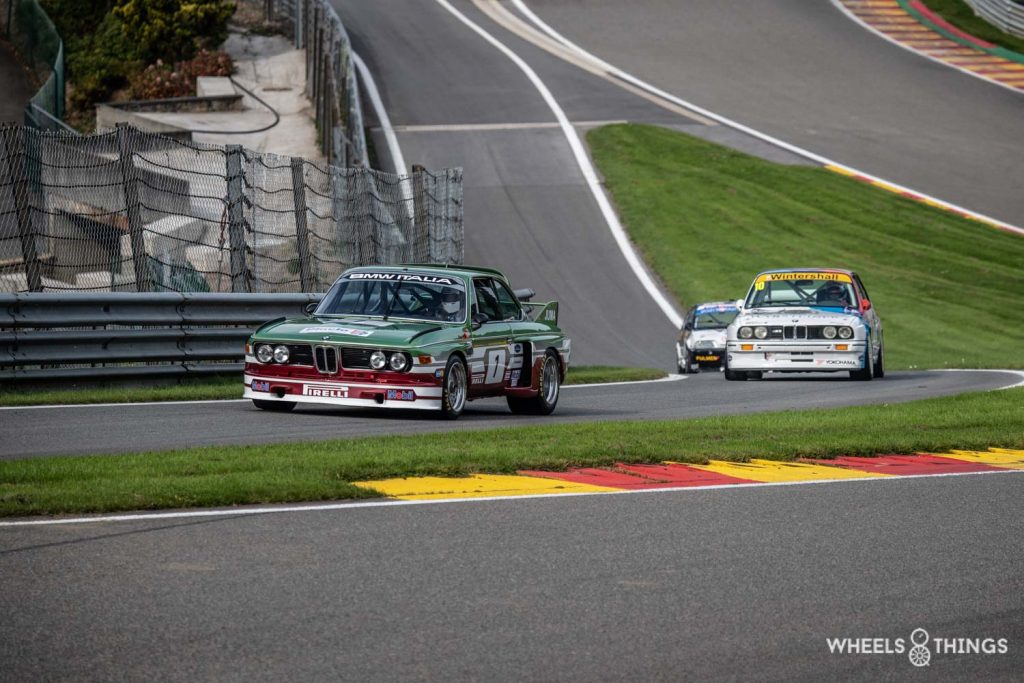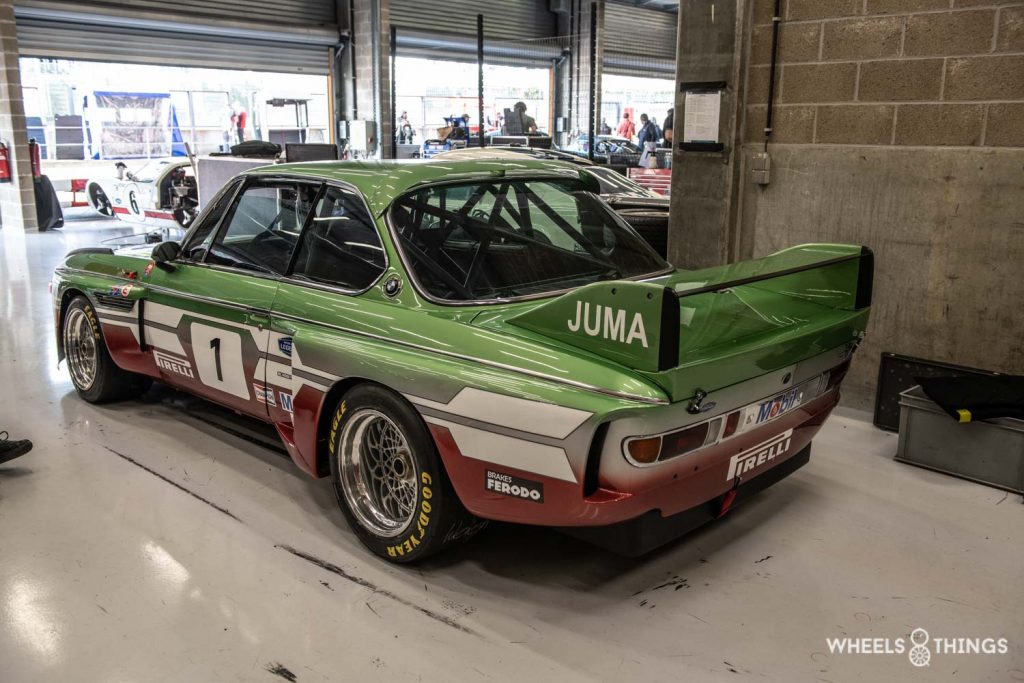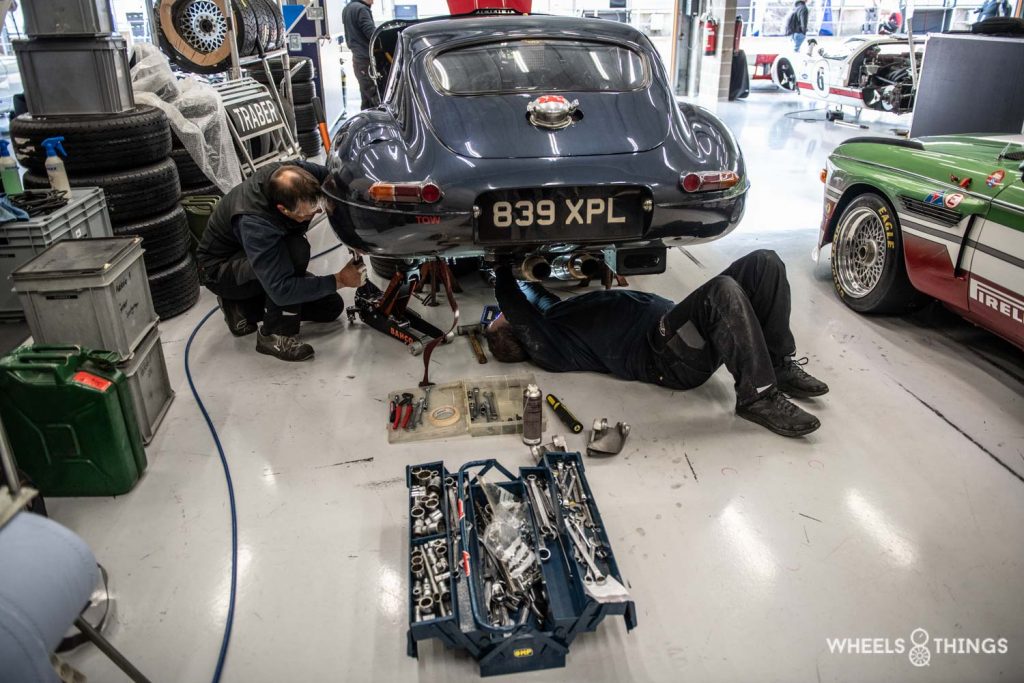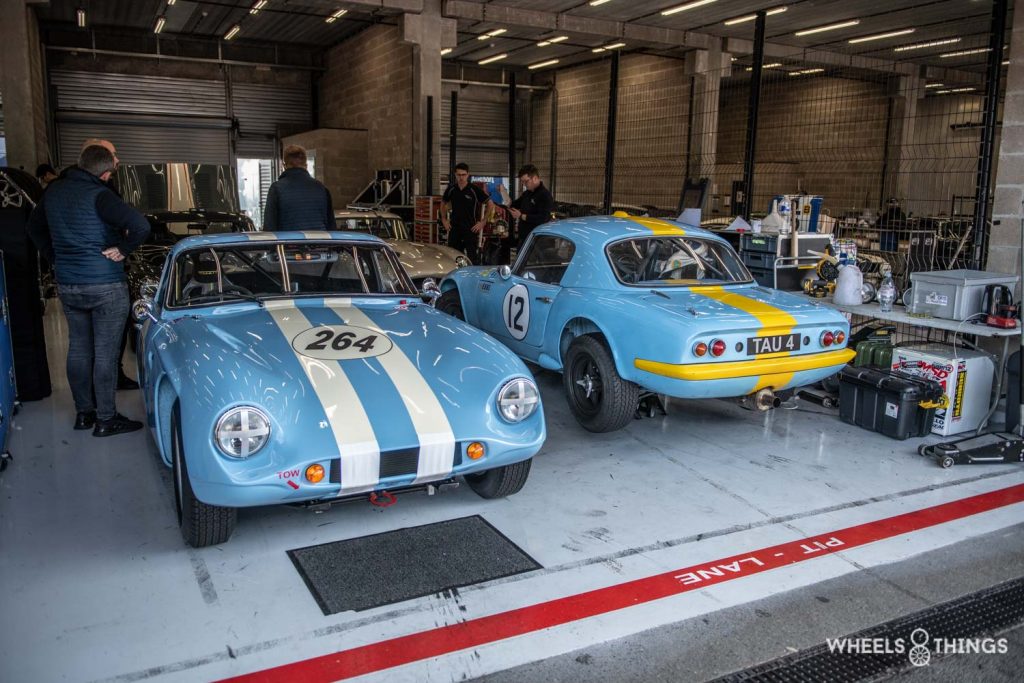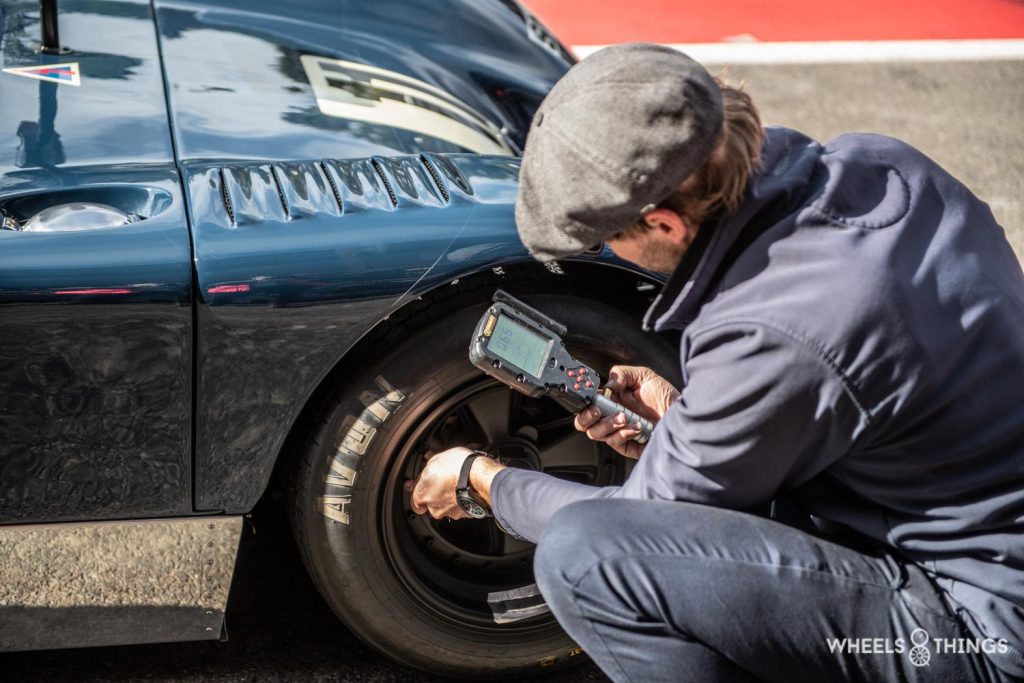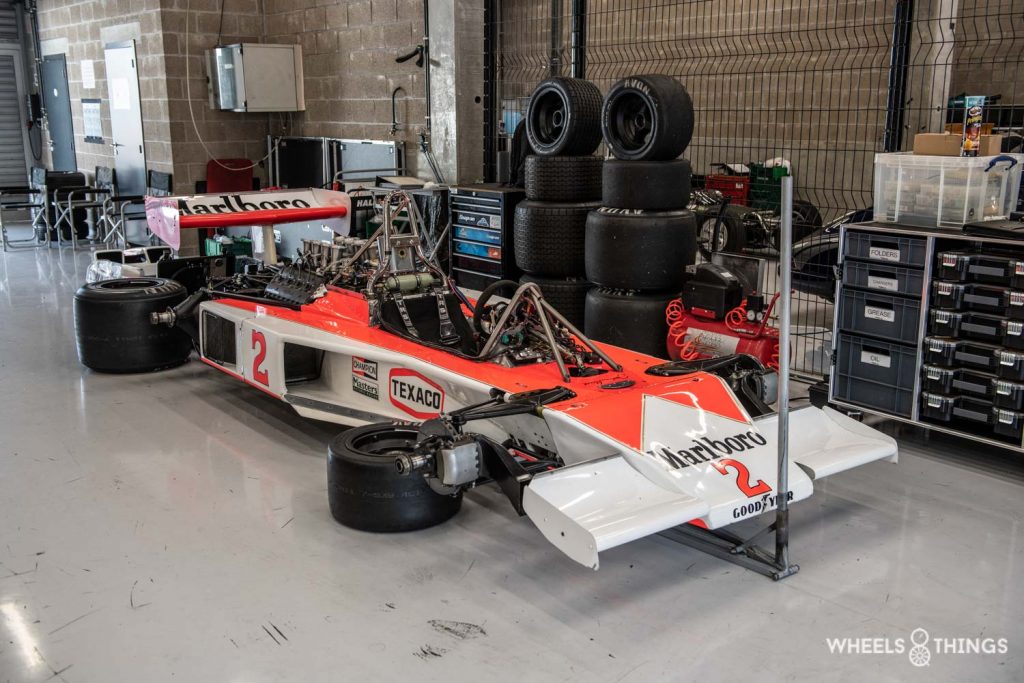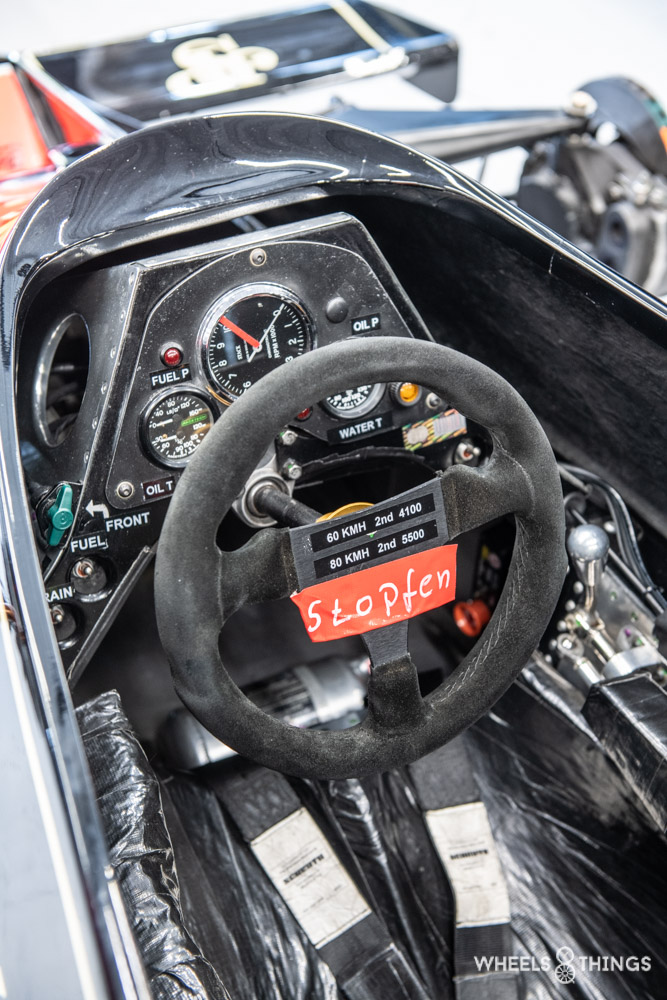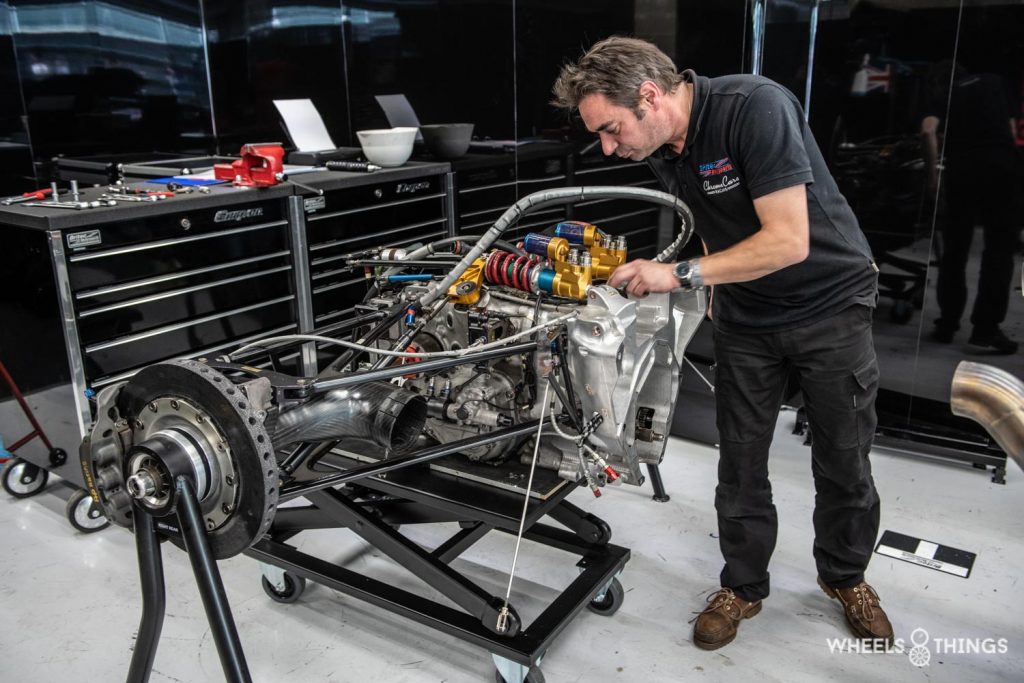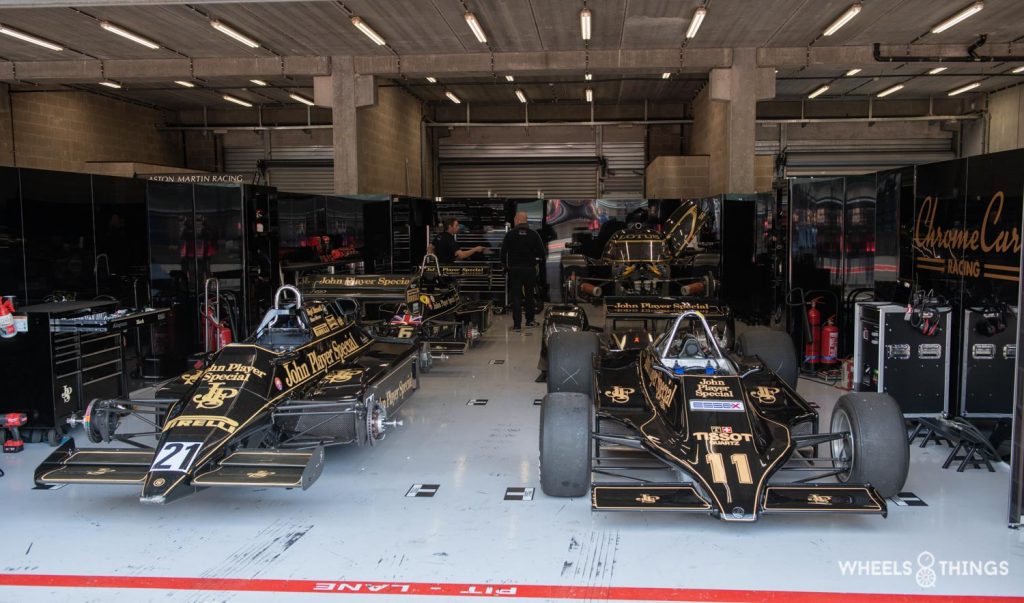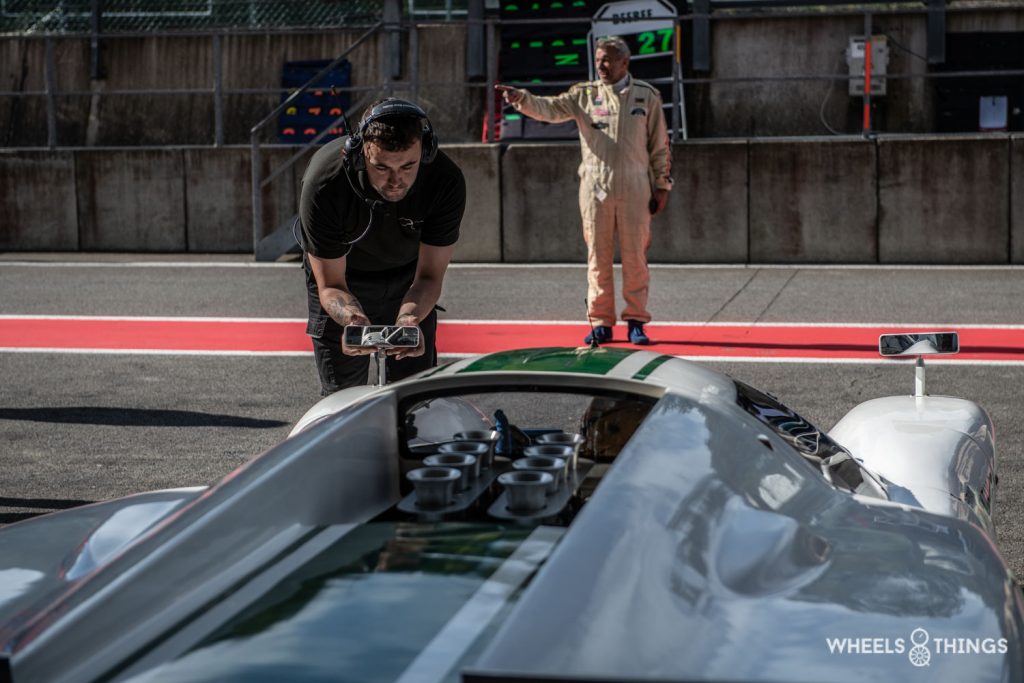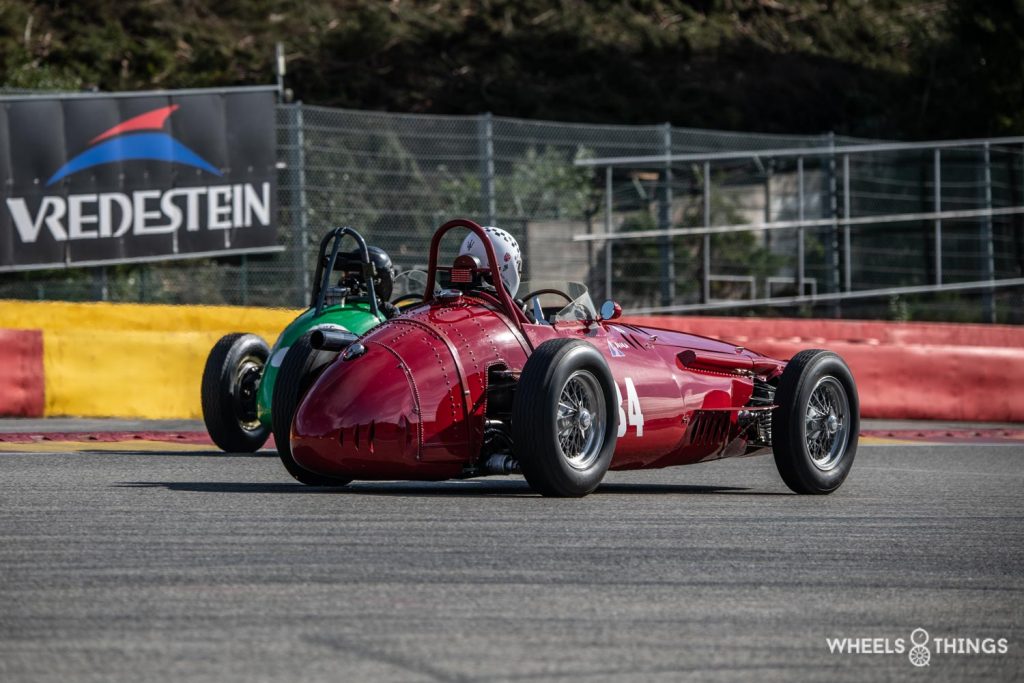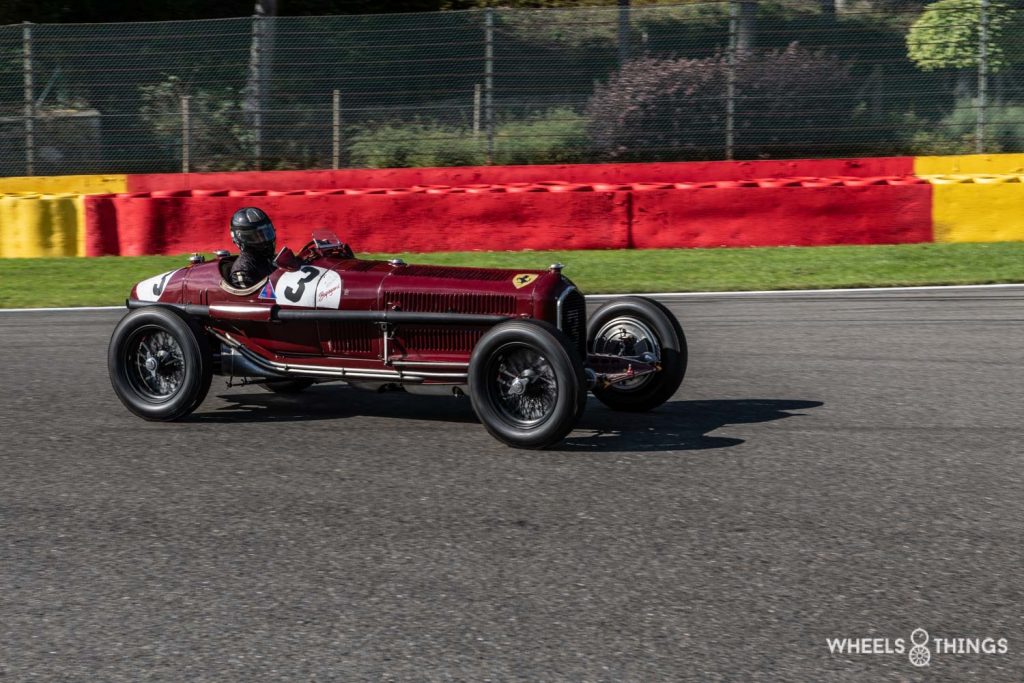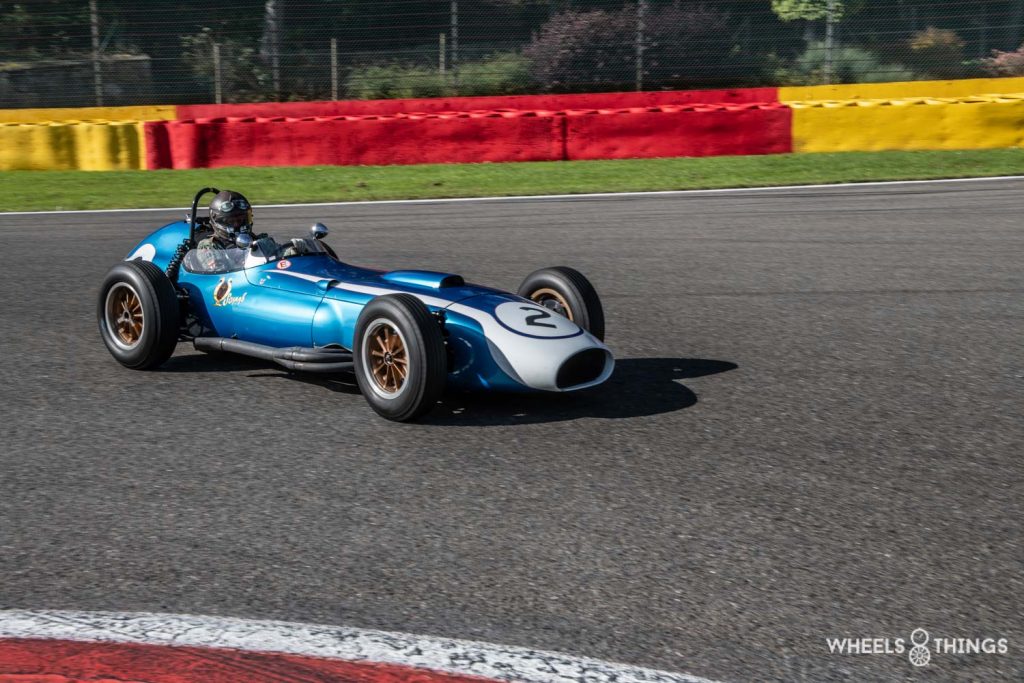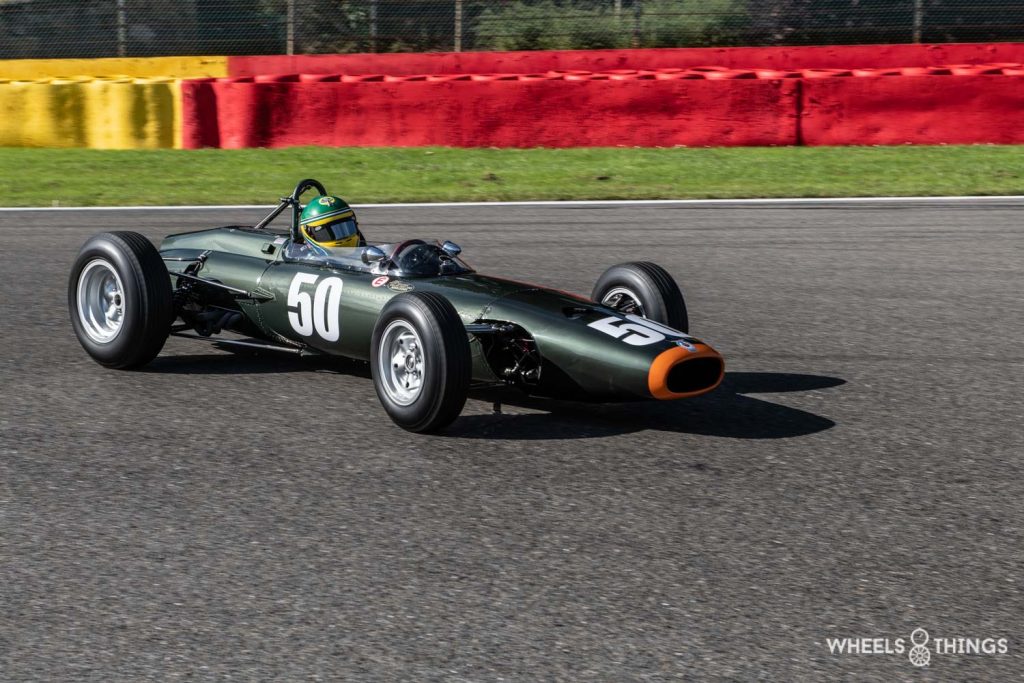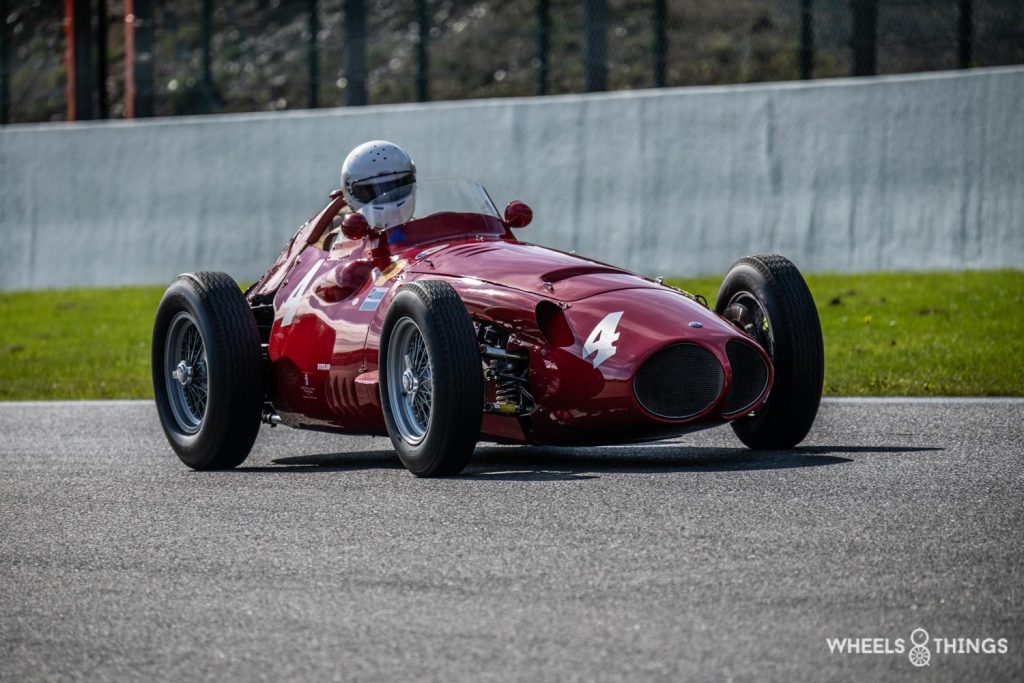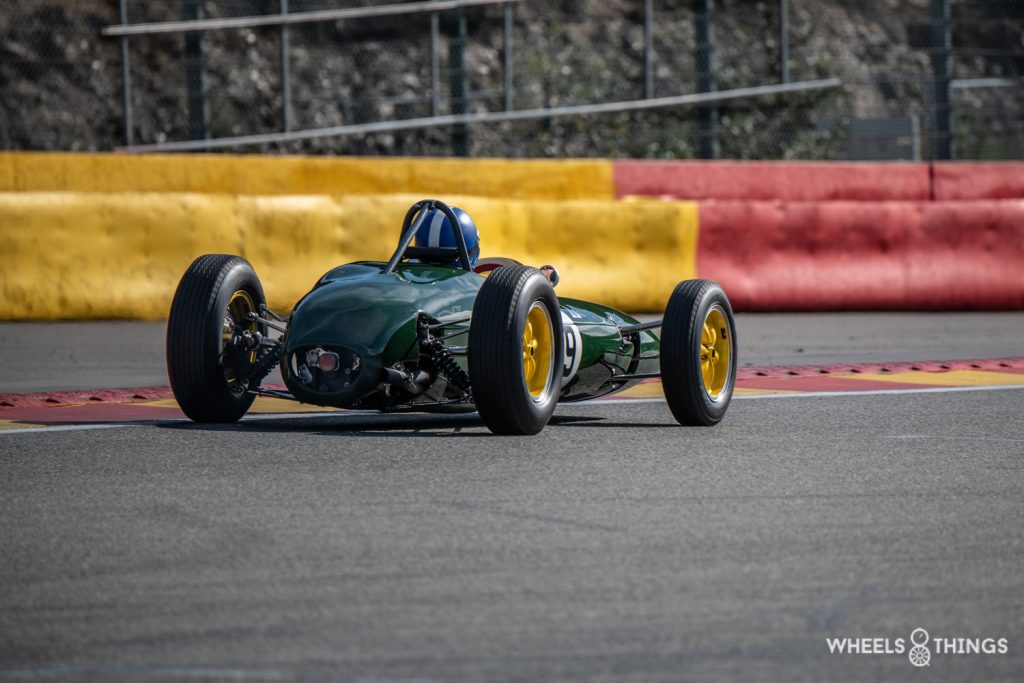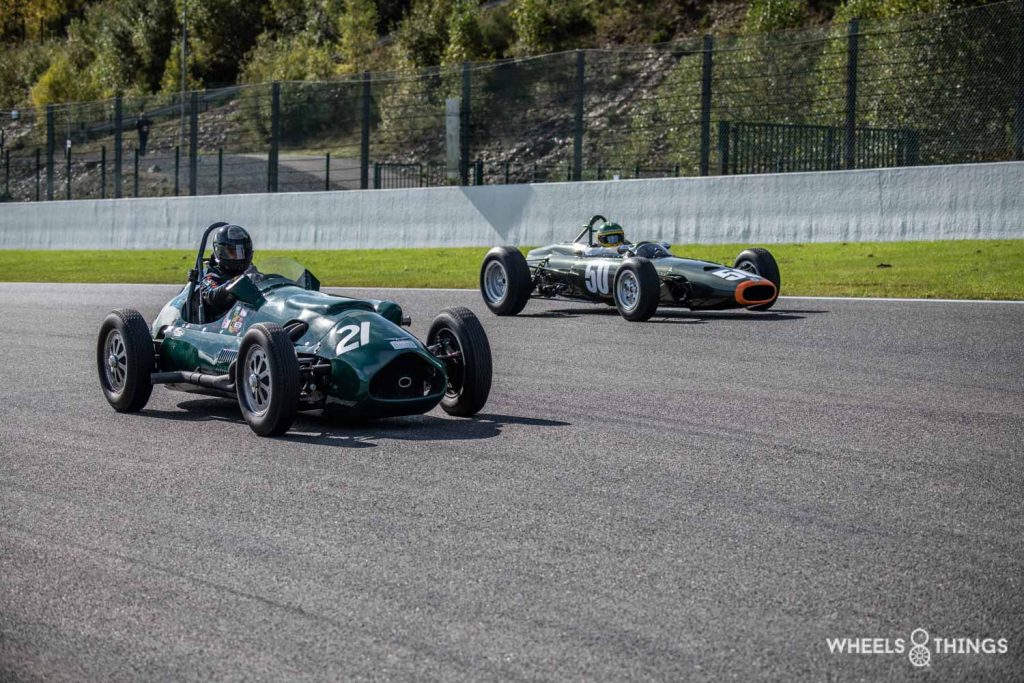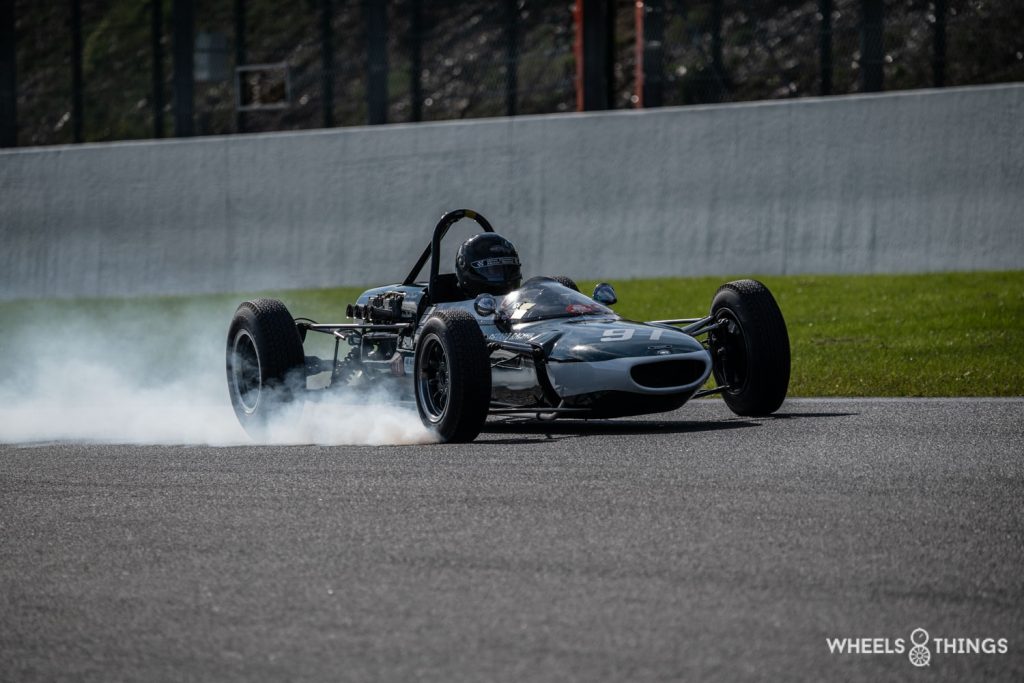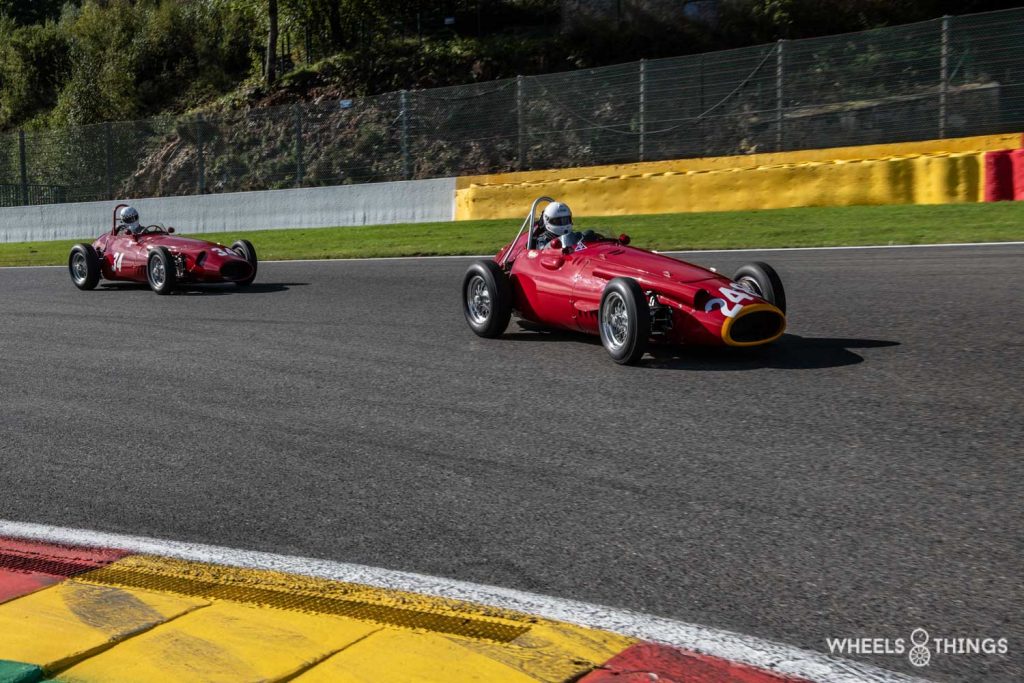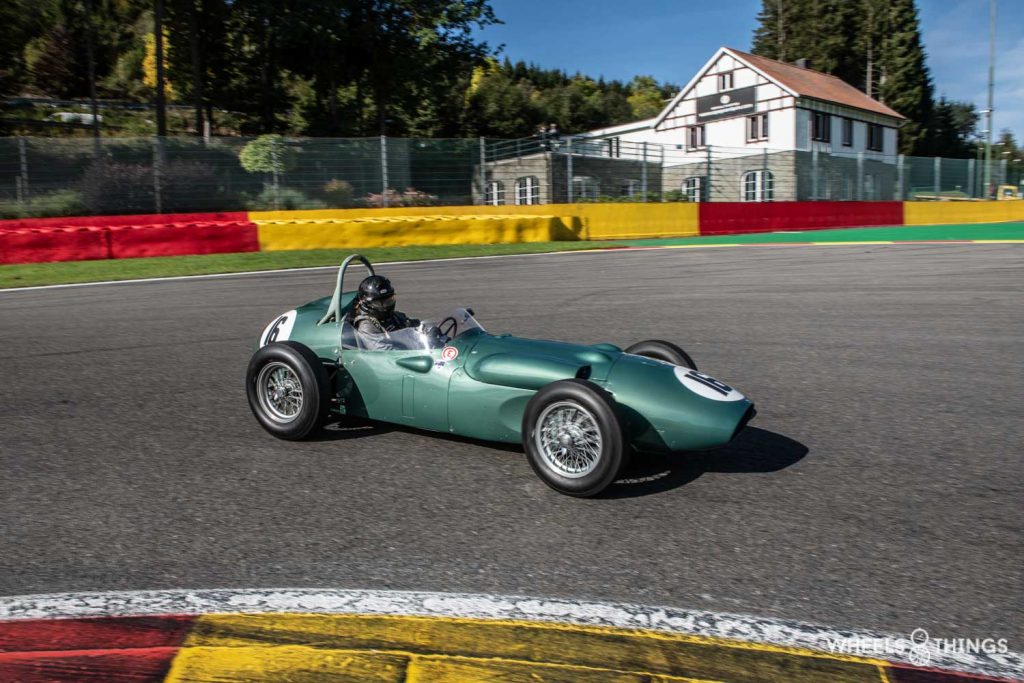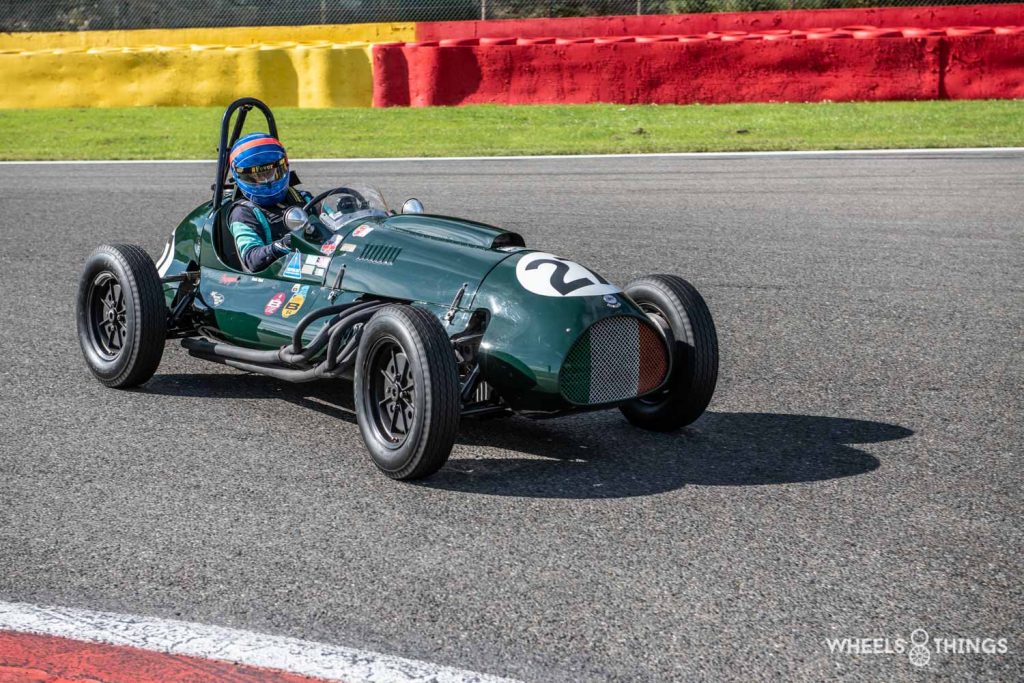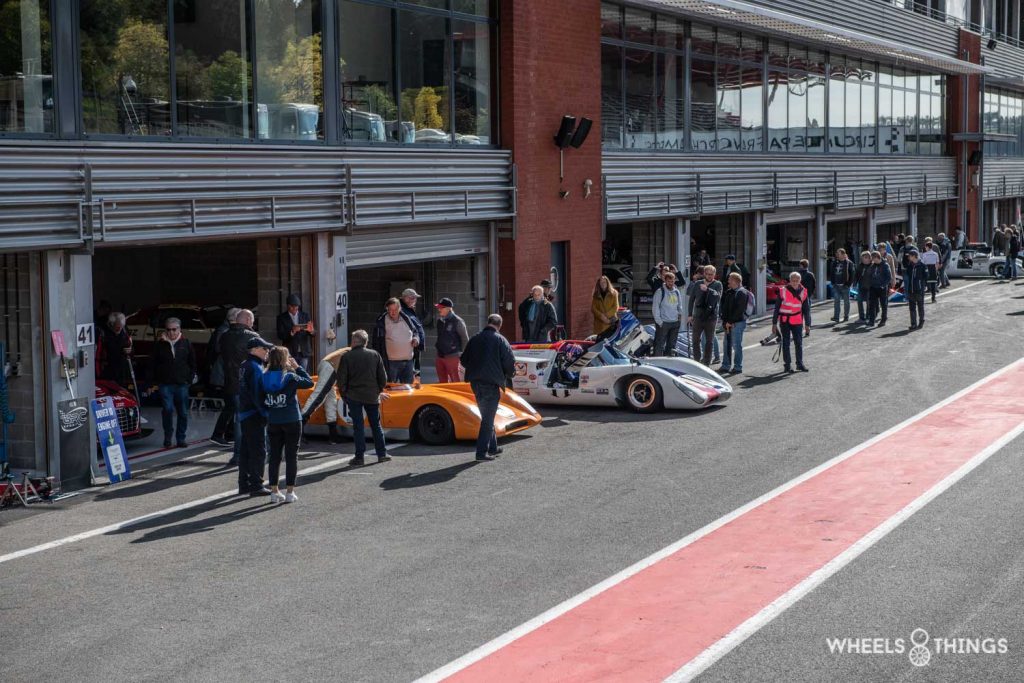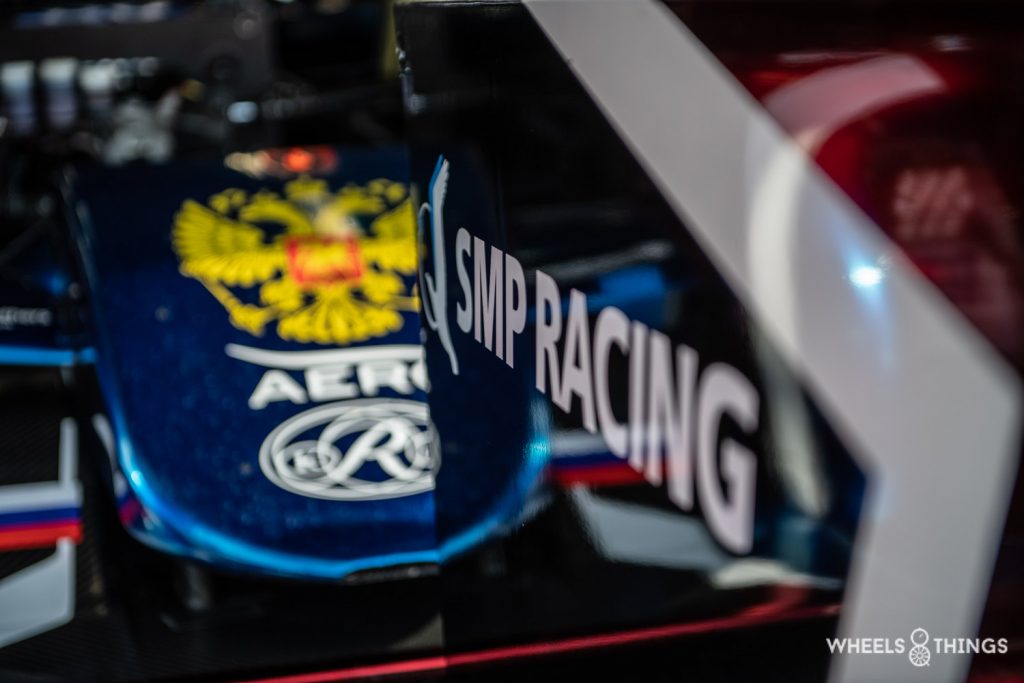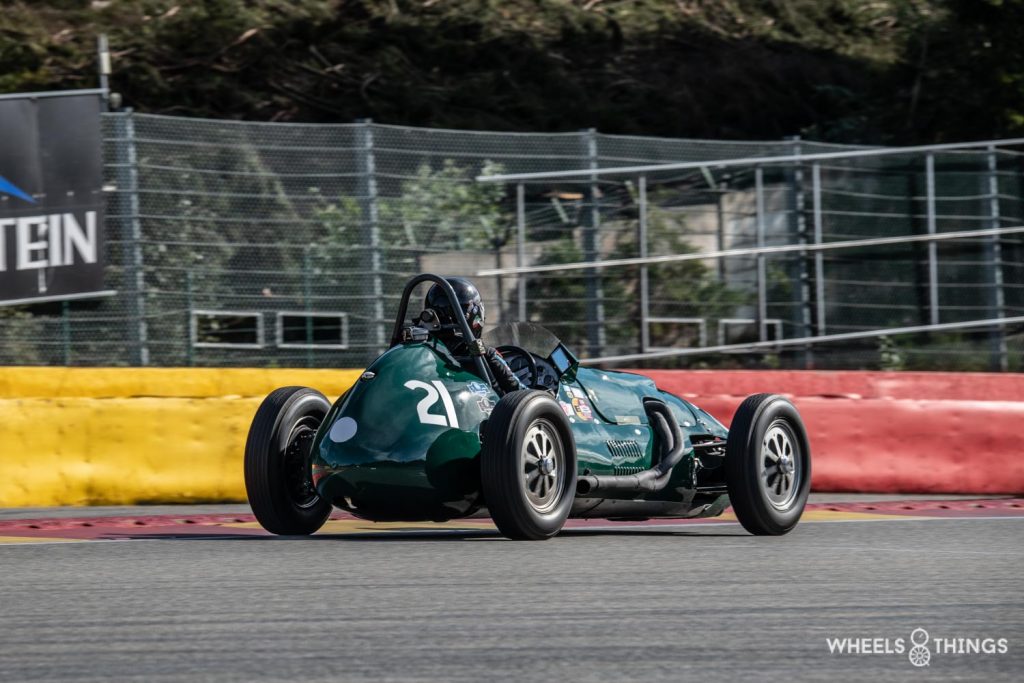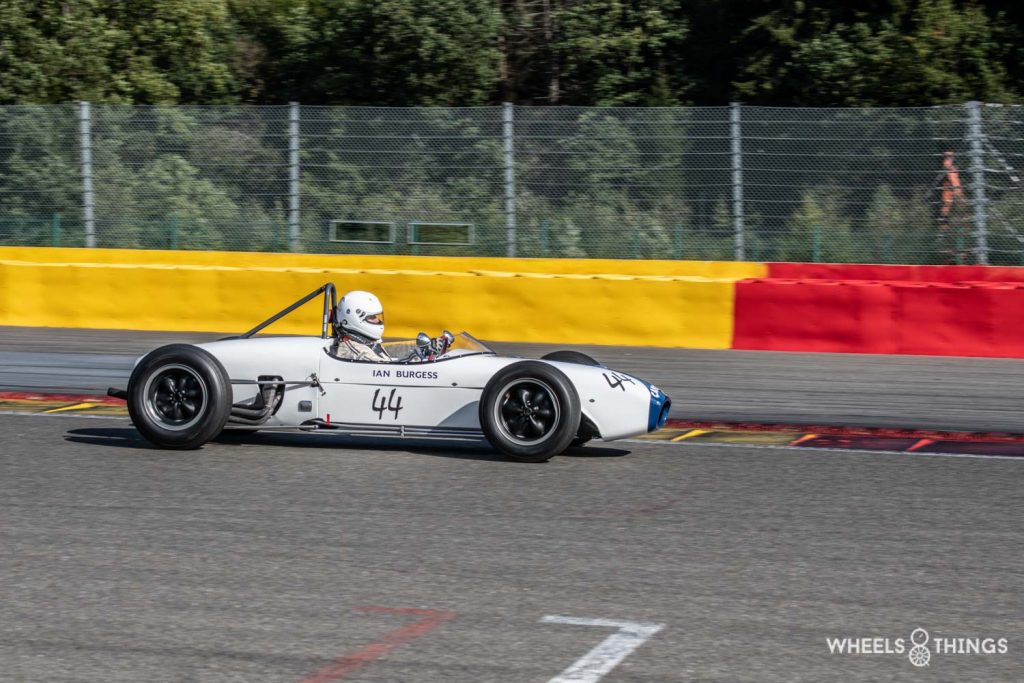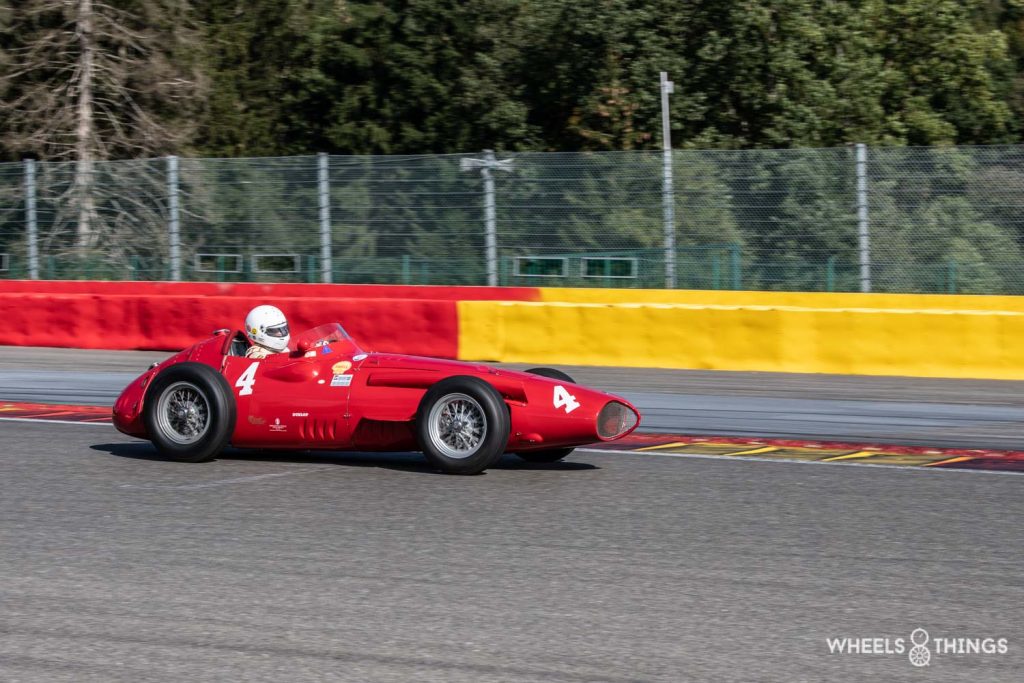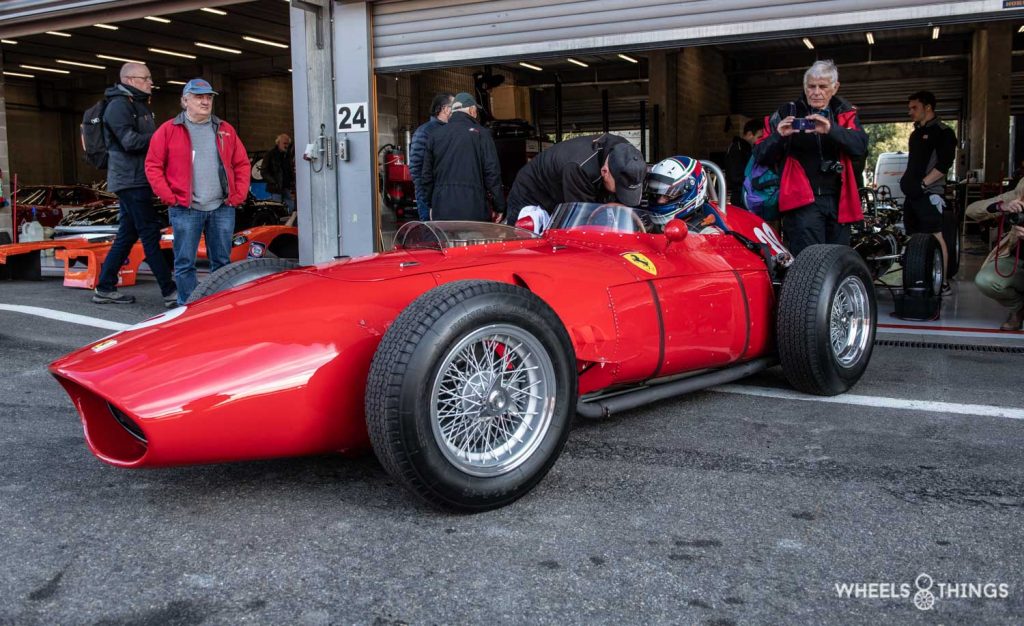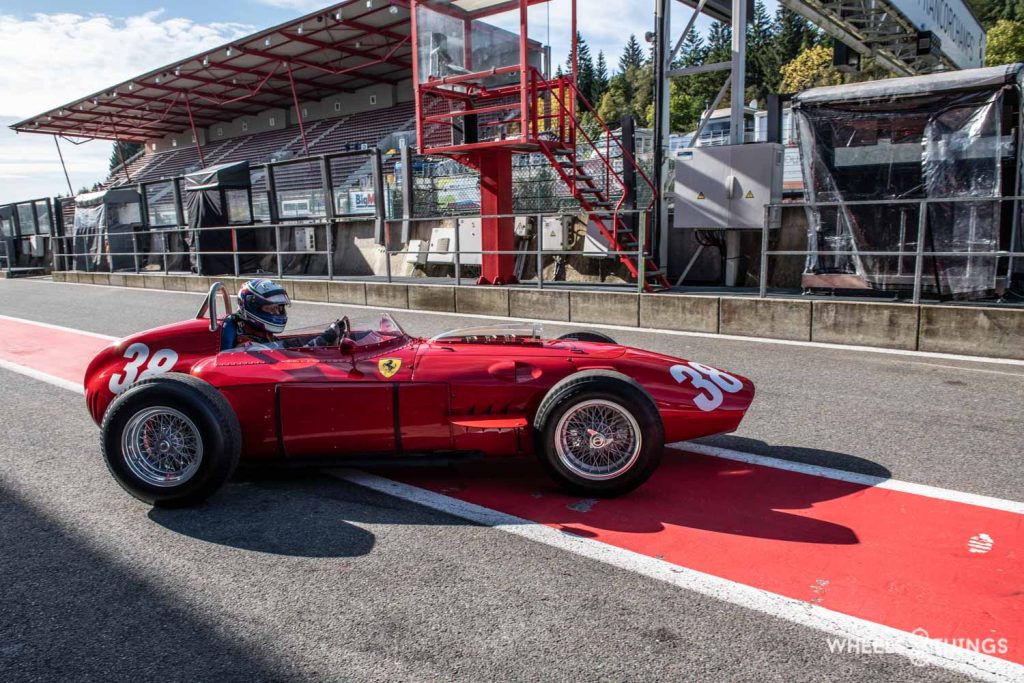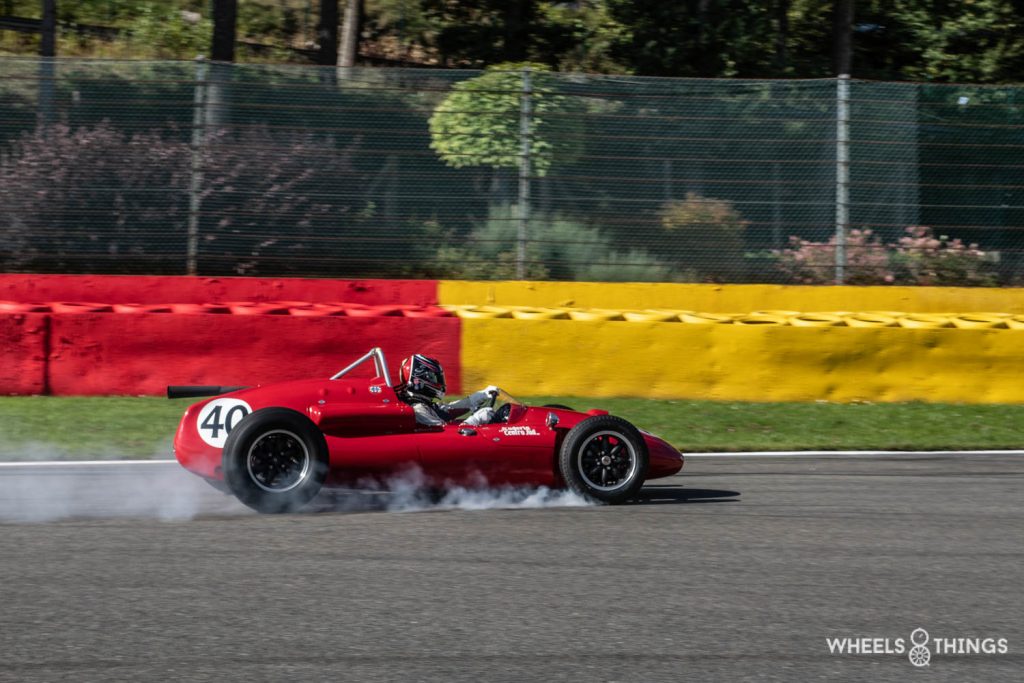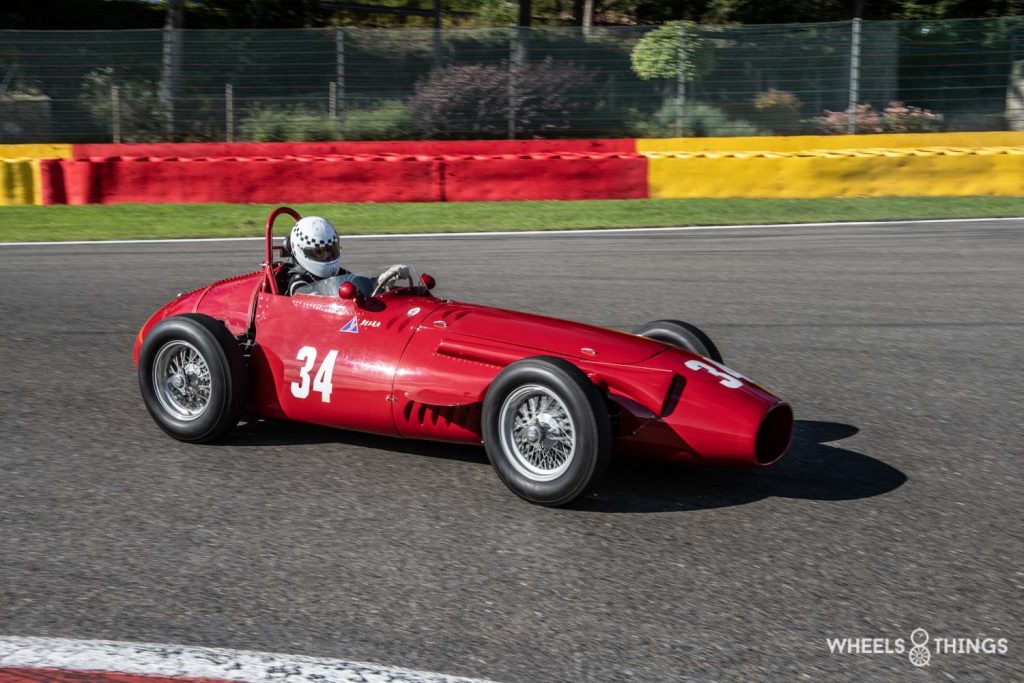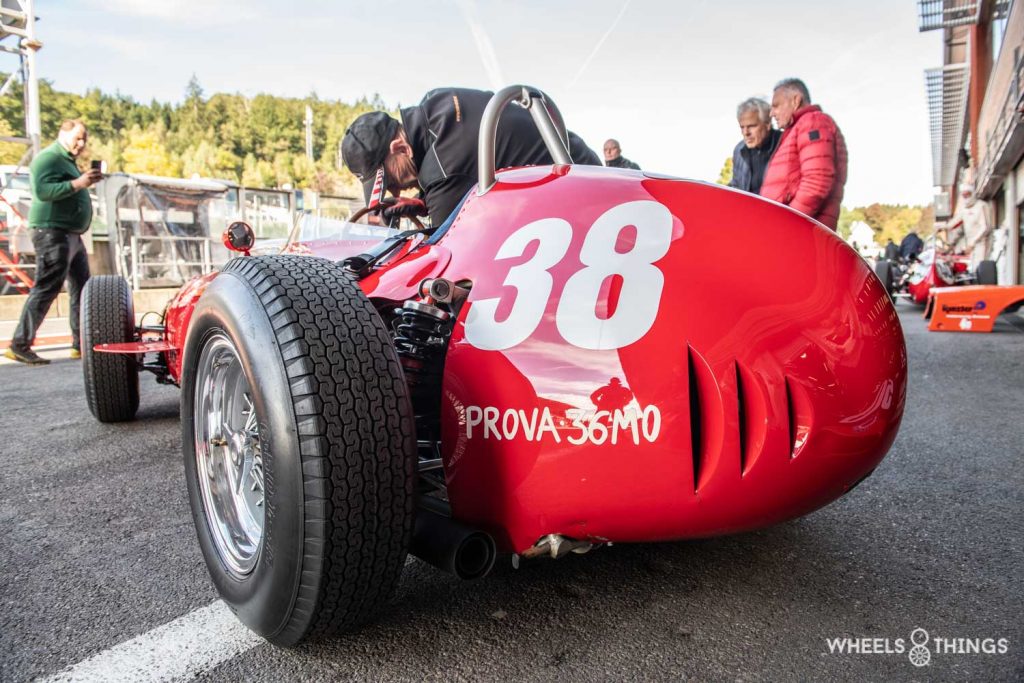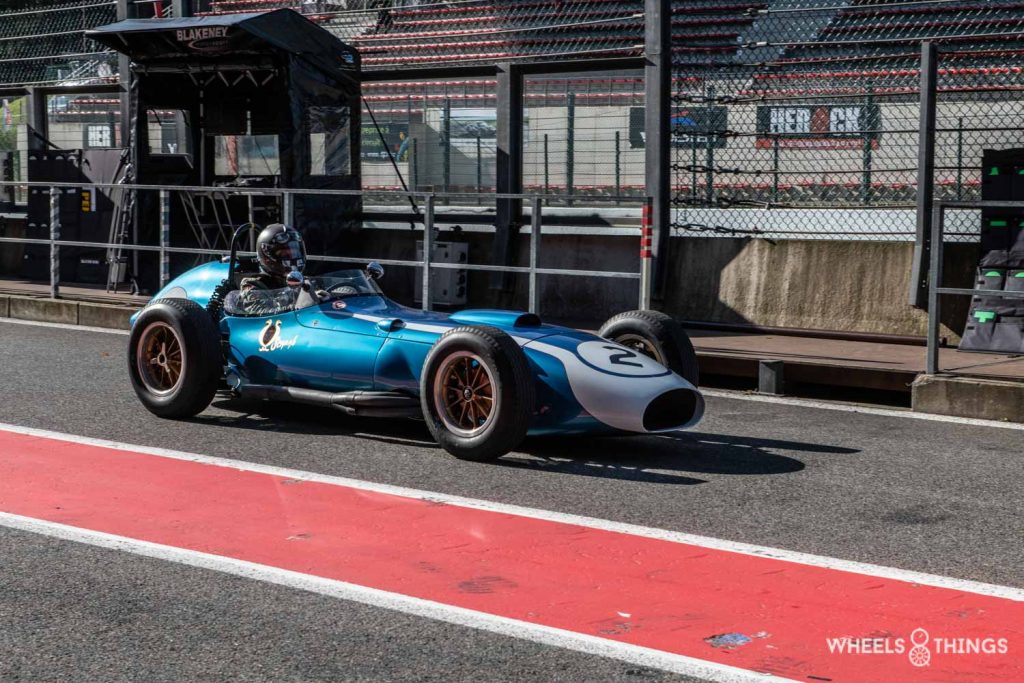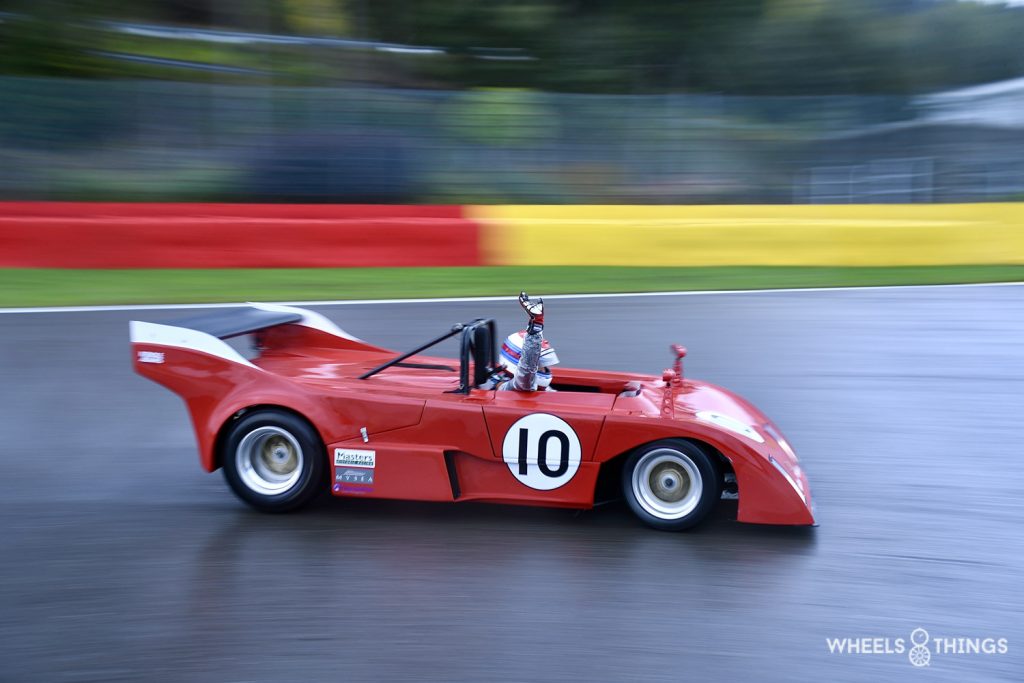
Besides the Six Hours of Spa for GT and Touring Cars, organiser Roadbook offers an important side programme for its meeting. The main component of these races is provided by the English Masters Historic organisation, which has the historic Formula 1, Proto’s and Endurence Legends in its catalogue. Of course, Spa-Francorchamps is on their calendar every year.
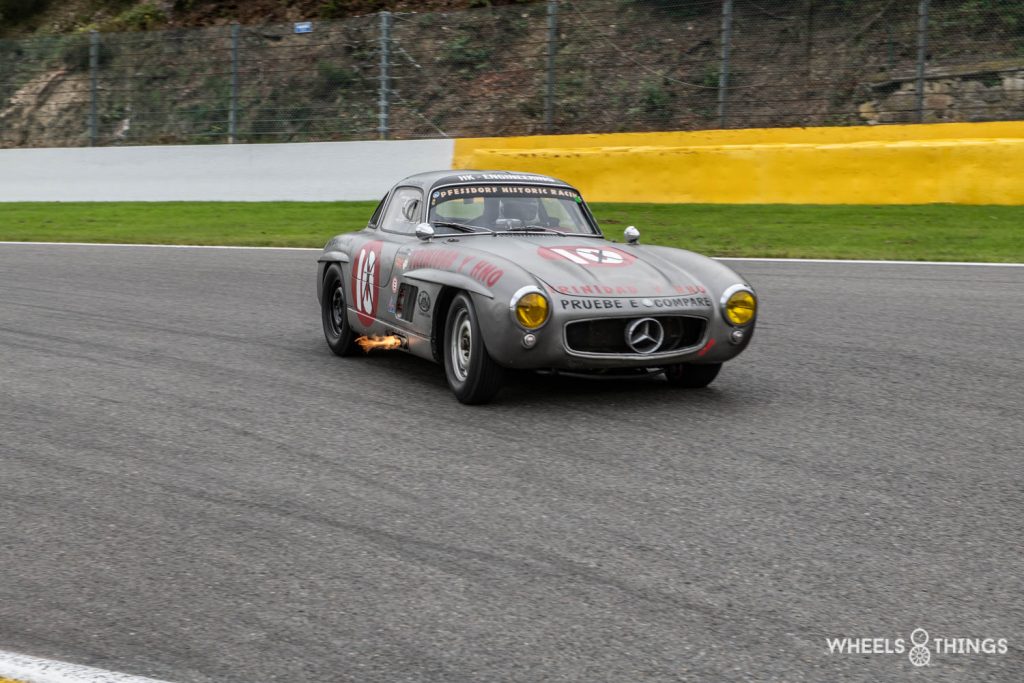
Masters Historic F1
Where the modern F1 boys had problems in early September to keep their super sophisticated cars on the track, the historical F1, with a few exceptions, had no problem. On Sunday a heavy rain zone passed through Belgium and also over the Spa-Francorchamps circuit. However, this did not prevent the participants from taking the start on Sunday morning in very wet conditions. Pilots told us that the road surface was slippery after the six hours of competition and the competitors had left some oil on the track. And with the amount of water, it was sometimes like a slide. But still the men took out their beautiful cars and went at it full force.
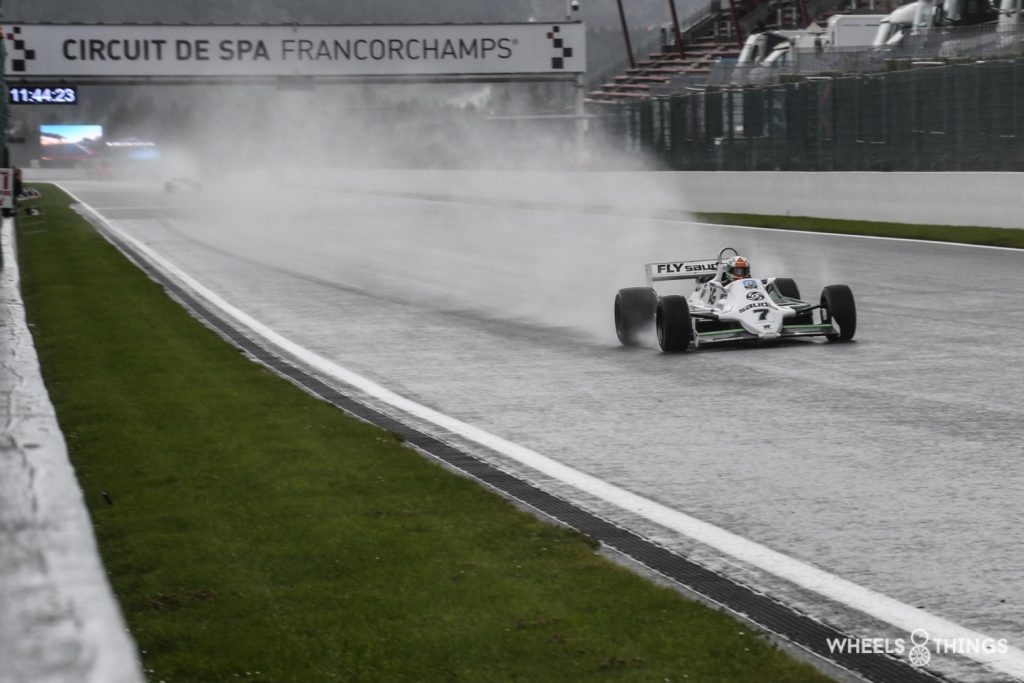
And there were indeed beautiful specimens present. The German Chrome Cars team had actually brought three Lotus cars, adorned in the magical John Player Special colours. A 77, an 81 and a 92. OC Racing also had a type 91 and so we had 4 beautiful classic F1’s.
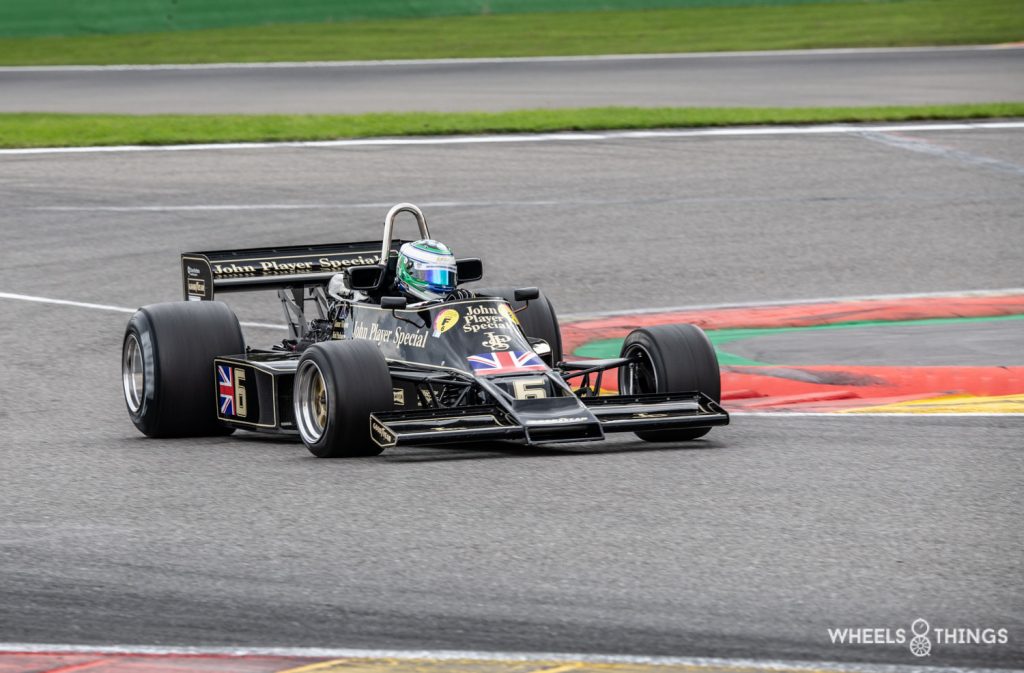
Mclaren Marlboro was also well represented with an M23 and an M29. Williams was at the start with two examples of the FW07 and one FW08.
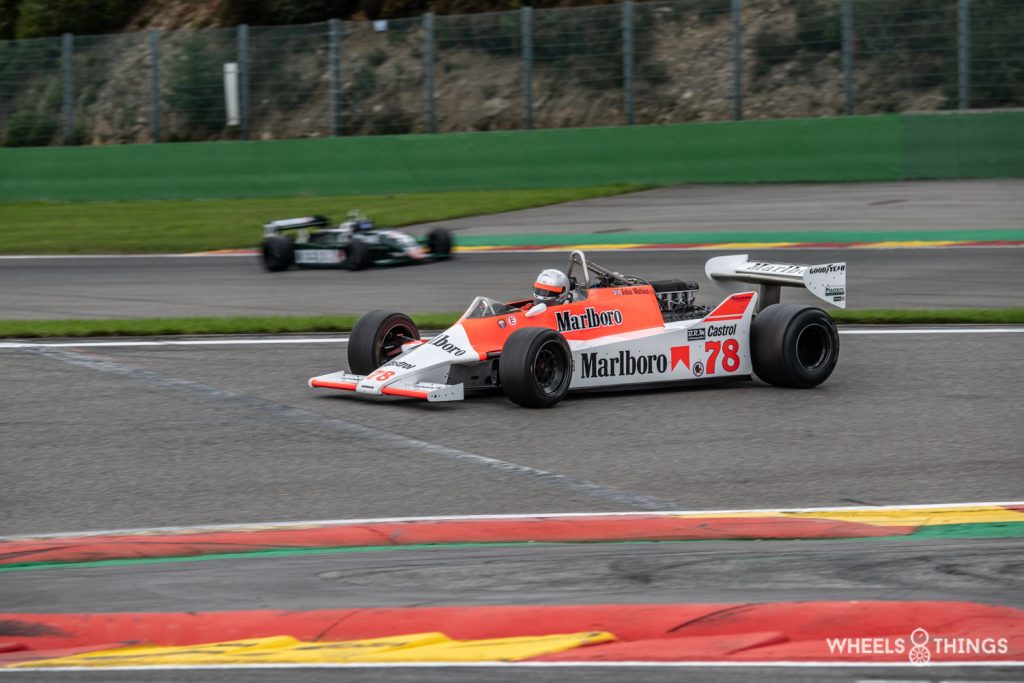
Two identical Tyrrell 011s and two Ensigns completed the rather small starting grid.
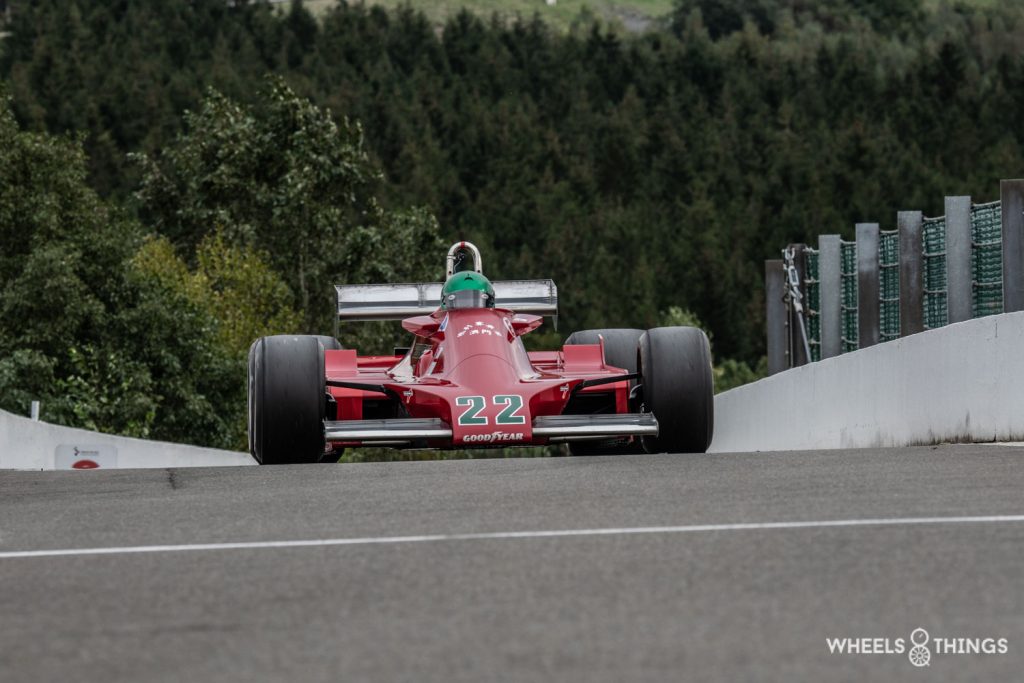
On Saturday, victory went to the Tyrrell 011 of Jamie Constable ahead of the JPS Lotuses of Nick Padmore and Steve Brooks. This race was run in dry conditions.
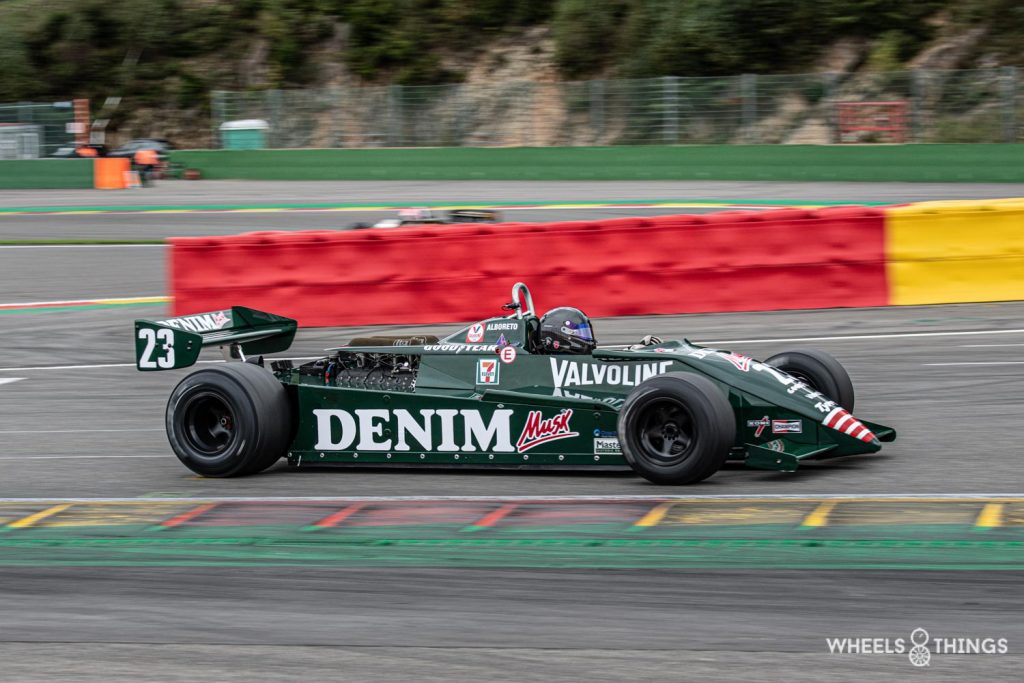
Bad luck for our fellow countryman D’Ansembourg, who had to retire after four laps with a broken clutch.
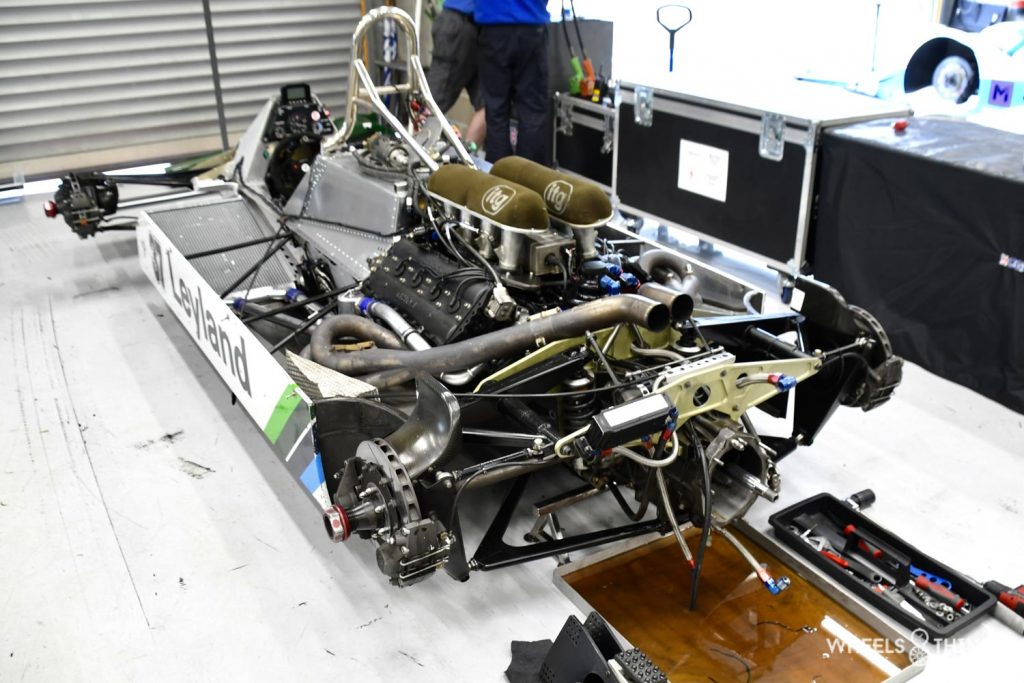
Lucas Halusa had even bigger problems: he could not even take the start due to technical problems. His Mclaren M23 actually lay in two parts in the pit box on Saturday evening.
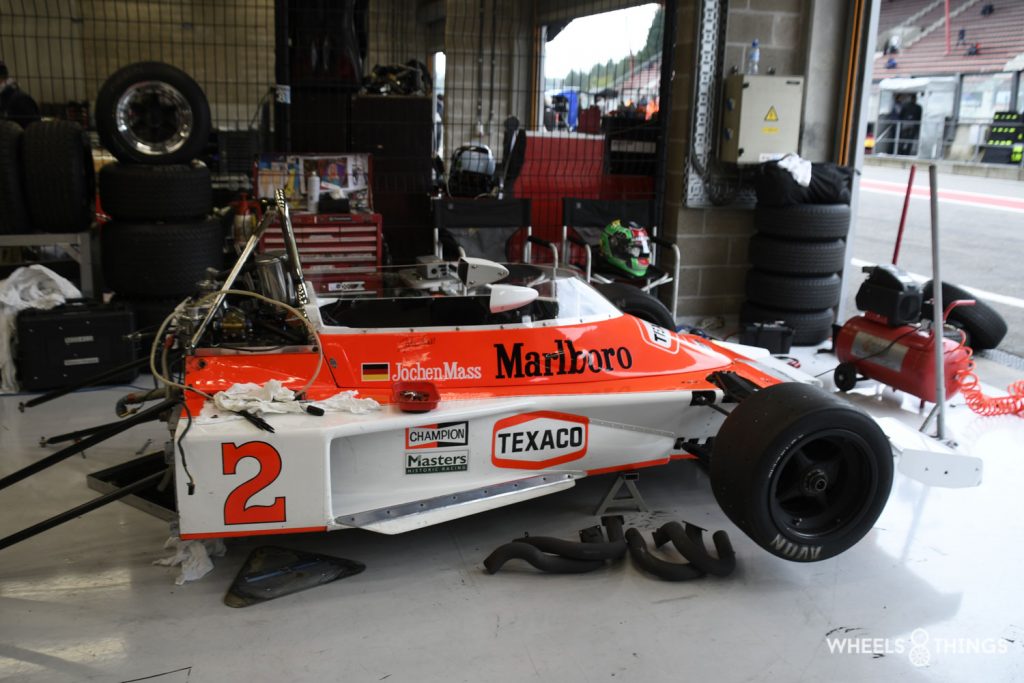
The second race, on Sunday, was in wet conditions and with a start behind the safety-car. The Mclaren of Halusa had recovered in the meantime and was allowed to start from the back. His problem was gone and he fought his way through the field, only 4 seconds short of victory. This went to the Williams FW07 of Mike Cantillon. Steve Brooks finished third in his JPS Lotus 91.
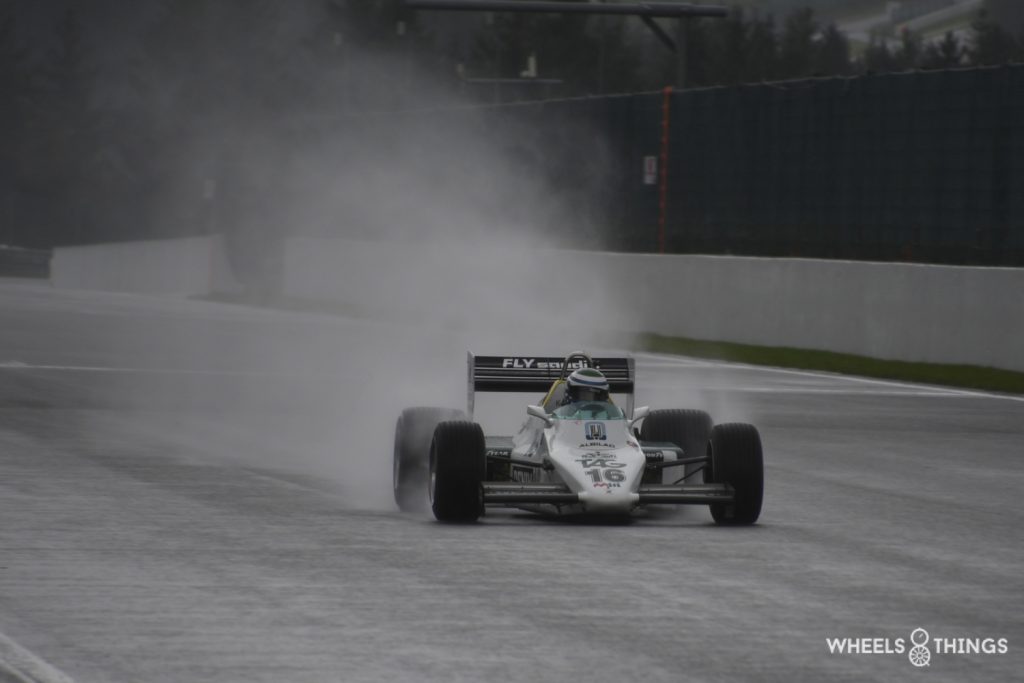
And so this year Formula 1 cars did race at Francorchamps. Thanks to the “old men”! They are old, but not worn out, and they do falter every now and then, but they are still beautiful things that make a phenomenal sound.
Masters Historic Sports Car
The Sports cars had their one-hour race on Sunday morning, also in very wet conditions. With 23 cars, the starting field was on the low side. Until 2019, this was quite different. Brexit and Corona are also making themselves felt here.
The Abarth Osella P1 of Italian Rossi di Montelara was unbeatable. He won convincingly ahead of Bradshaw’s Chevron and Gans’ Lola. We also found a Belgian guest driver in this series with Frédrique Bouvy on an IMSA Chevrolet Monza. Bouvy felt like a fish in water on the wet asphalt. He compensated the lesser speed of his Monza and was able to climb up from the last row of the grid to eighth place overall. A great result for this “special” Chevrolet.
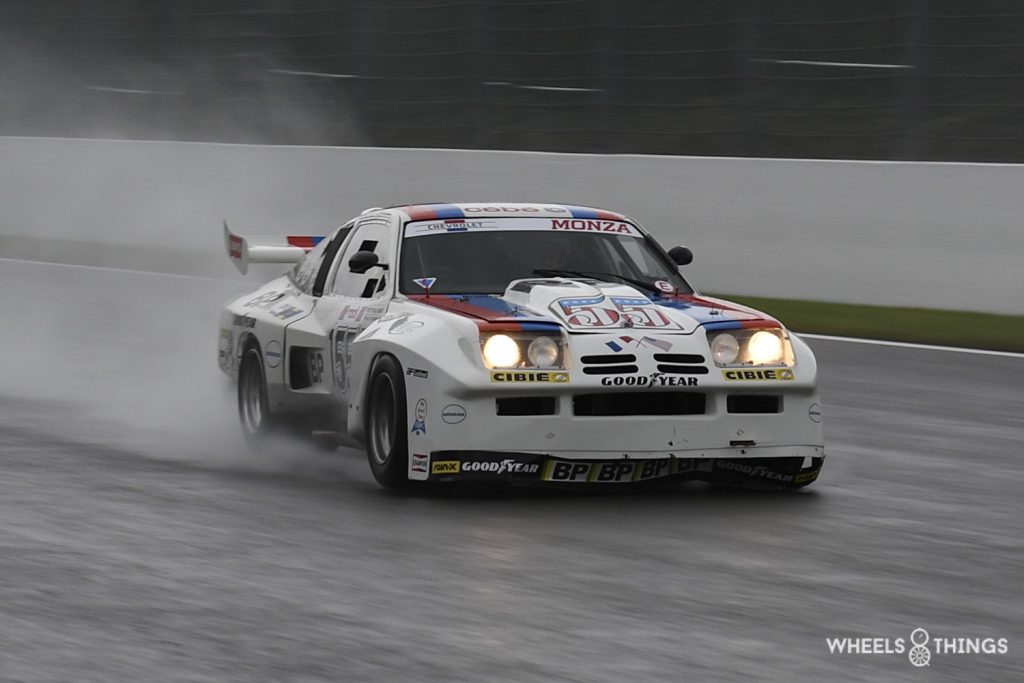
Masters Pre-66 Touring Car
With only twelve starters, the pre-66 touring cars also had their race on Sunday. As with the Sport Cars, the race lasts one hour and can be driven by one or two drivers. There is always a mandatory pit stop. In this series, it is mainly the Ford Lotus Cortina’s that make the beautiful weather and with six out of twelve participants, it could hardly be otherwise that the victory went to one of them. Now, you don’t have to be many to have a great race and that was proven once again here. Victory went to Dutton’s Cortina, which made it by 0.341 secs ahead of an identical one driven by Jewell and Clucas. Third place was four seconds later for the Alfa Romeo GTA of Furiani. Small differences for a one hour race!
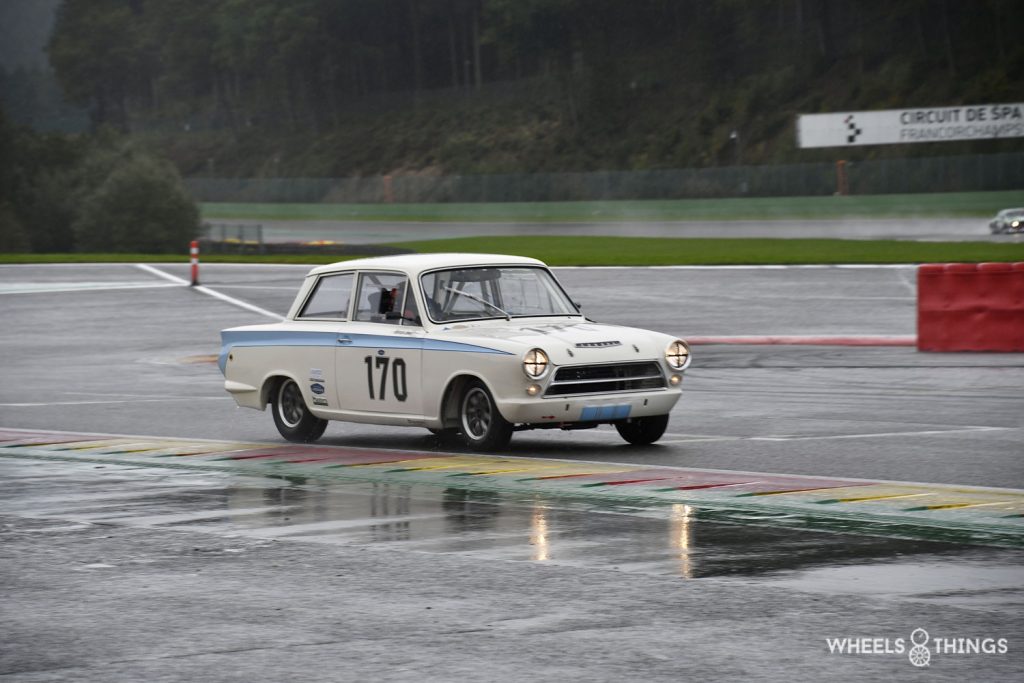
Pre-war Sports Cars
About twenty participants take the start in the pre-war sports car series, which is a normal starting field for these oldies. We find a great variety of cars ranging from a small three-wheeler Morgan, via a Bugatti or Alfa Romeo to quite imposing Bentley or Mercedes SSK.
The aerodynamic position of the headlights on Wakeman and Blakeney-Edwards’ Frazer Nash proves that these drivers are serious too. However, it was to no avail as they had to leave the pole position to the GN of the Maeers brothers.
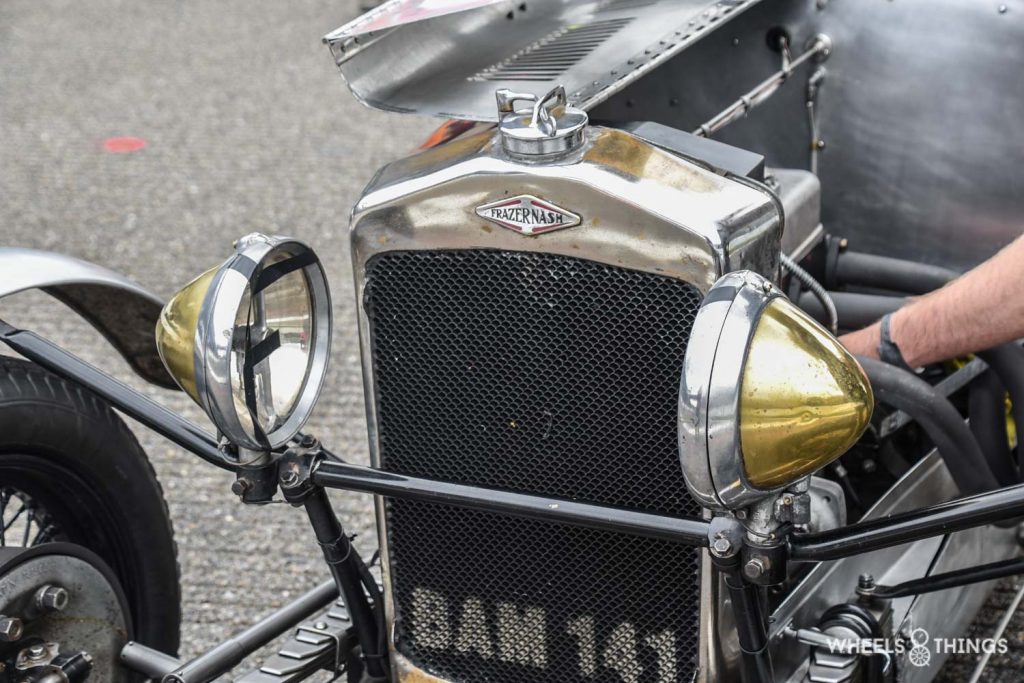
This race, despite being driven with very old cars, was the most spectacular of the entire weekend. The Frazer Nash and GN fight a great duel, never letting go of each other, sliding on three wheels and even through some corners and put on a great show for the audience. The leading position changes several times and after the compulsory pitstops they still almost stick together. The battle continues until the finish line. The Frazer Nash wins by 0.368 seconds ahead of the GN. Perhaps the tilted headlights were responsible for this difference?
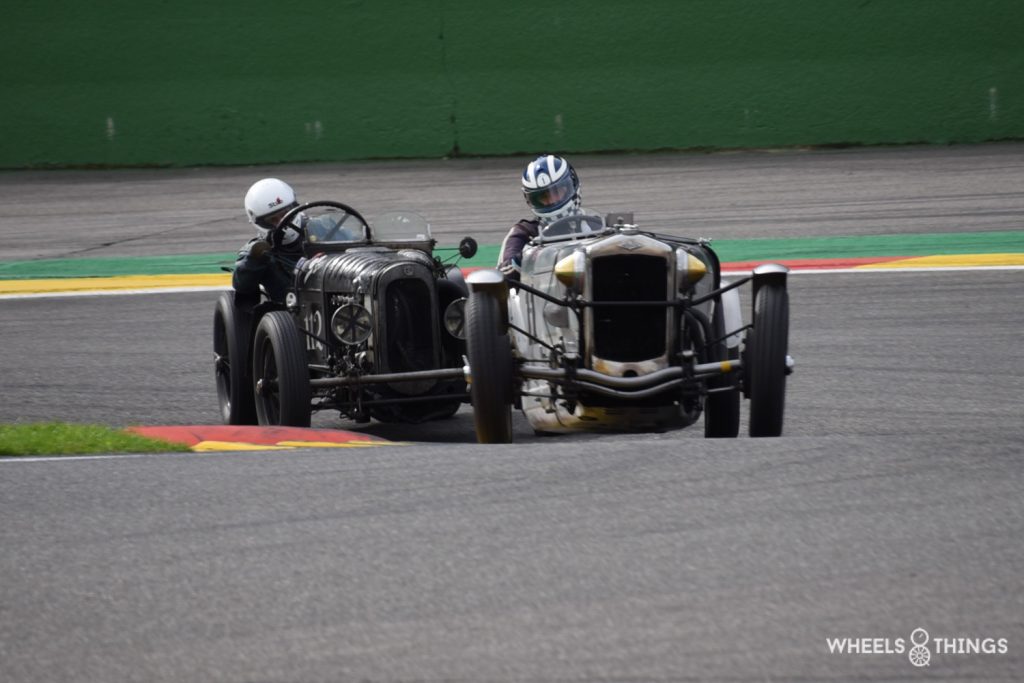
Formula Junior
This year’s programme also included Formula Junior cars. These small formula cars were used between 1958 and 1963 as an introductory and affordable entry level motorsport class. Engines were limited to 1000 cc (car weight 360 kg) or 1100 cc (car weight 400 kg) and had to come from a series engine. Same rule for the gearbox and brakes. In the first cars the engine was at the front, but later models had the engine at the back and looked very much like a Formula 3 or Formula 2 car, although a bit smaller. Among the constructors, we can find well-known brands like Brabham, Lotus, Cooper, Stanguellini and Elva.
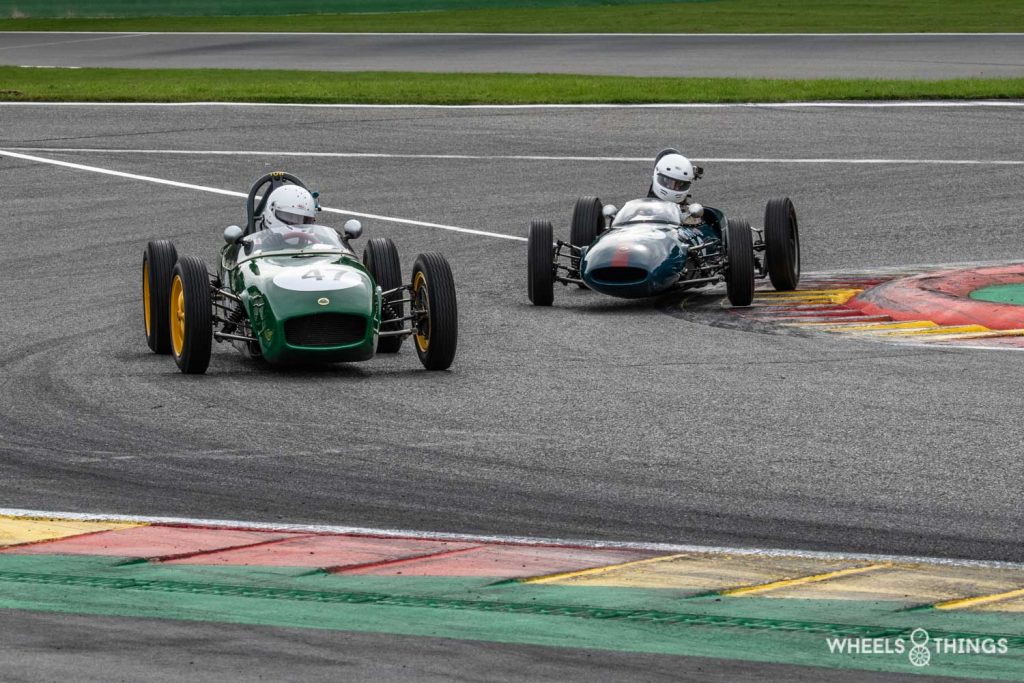
And it is in this last brand that we found a well-known participant with the former Prime Minister of Belgium: Guy Verhofstadt. He participated with an Elva 100.
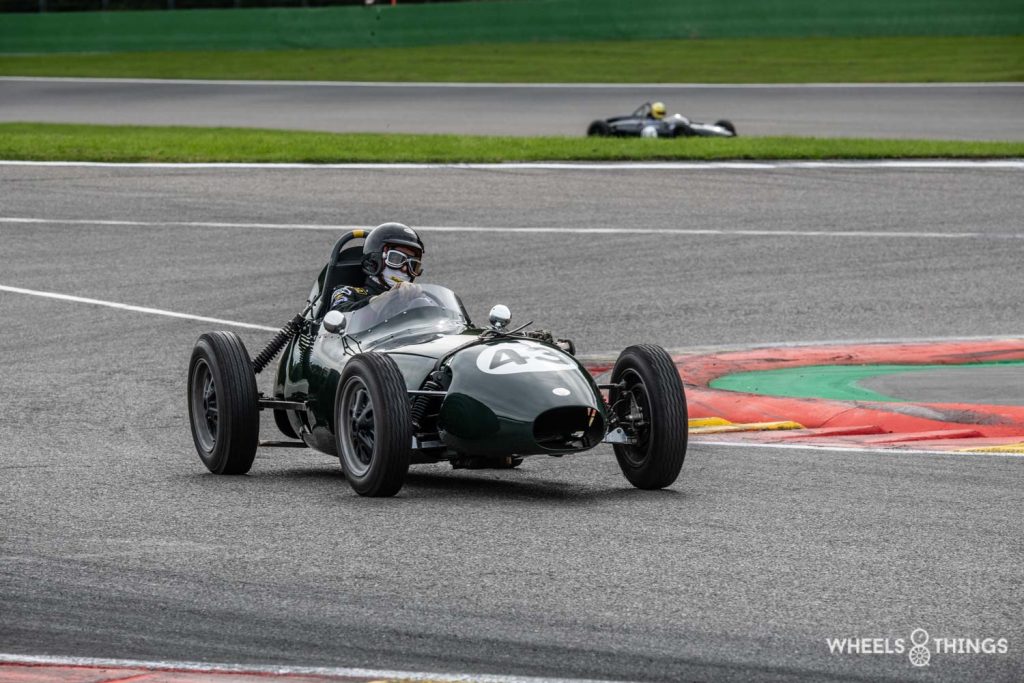
The wins in the two races were nicely shared. On Saturday, Arnes’ Brabham won before Rossi di Montelara’s Lotus and on Sunday, both men exchanged places nicely. Third place on the podium was twice for Shaw’s Brabham.
Guy Verhofstadt was not really a threat to the podium. On Saturday, he continuously raced at the back and finished in 21st and penultimate place, two laps after the winner. In parliament Guy clearly gives much more “gas” than on the track. On Sunday he did not come into action anymore. And he was not the only one, due to the rainy weather there were only half of the participants for the second race.
Historic Grand Prix Cars
These forerunners of Formula 1 also had two races, each lasting 30 minutes. With 30 participants, we could still speak of a good line-up. And with four Maserati 250Fs, a Scarab, an Aston Martin DBR4 and a Ferrari 246 Dino among the starters, there were beautiful and exclusive cars present.
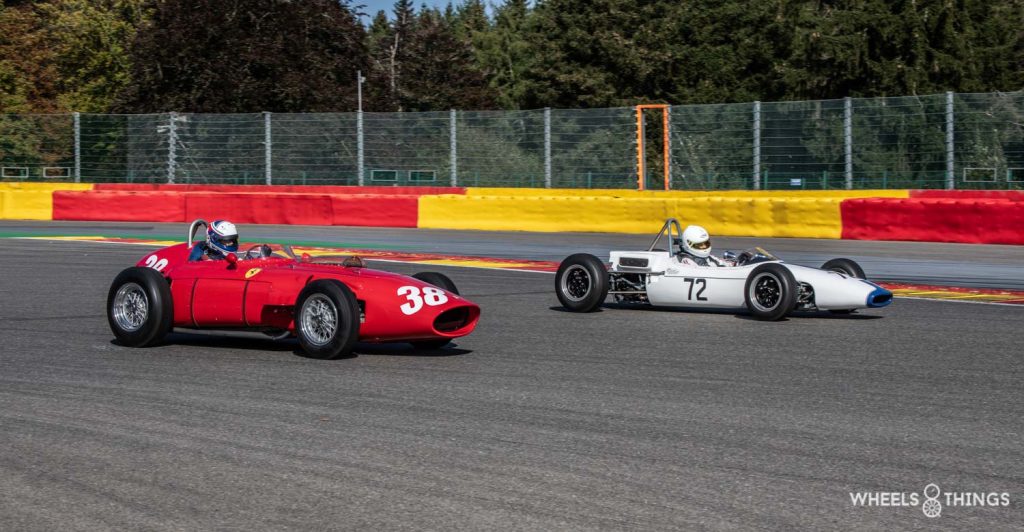
Beautiful cars do not always make for exciting races. The differences are too big and the first race is won by Will Nuthall with his Cooper 53. Second place goes to Phlipp Keen, 39 seconds down, with a Lotus 18. In the second race on Sunday, both drivers swap places.
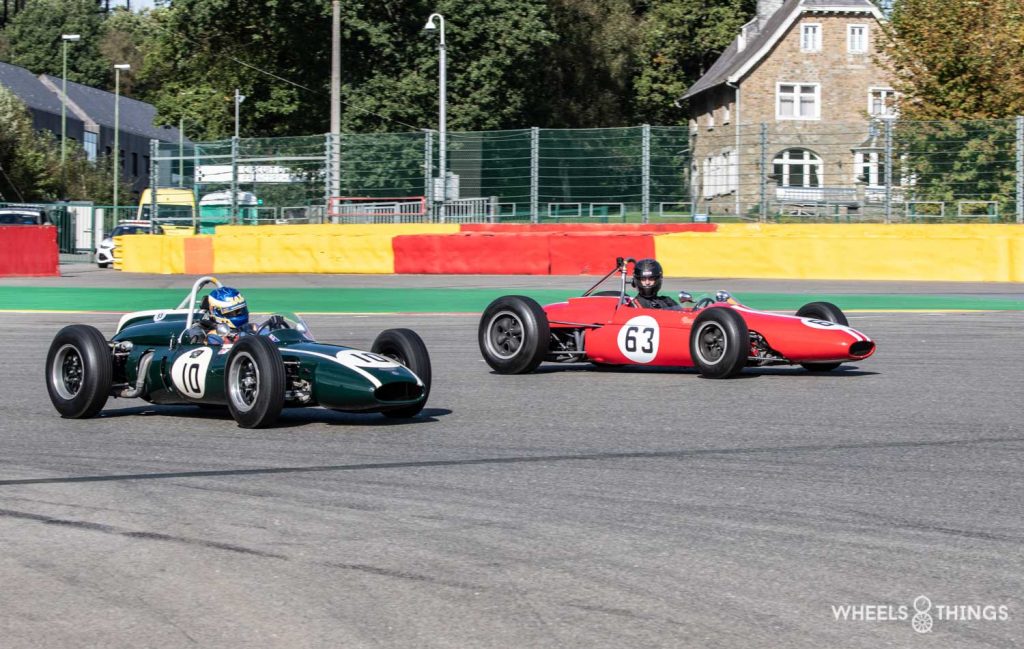
Historic Touring Car Challenge
This series undoubtedly had the most “Brexit” problems. Many small teams had not made the crossing from England to Spa this year because of too many administrative customs problems and the associated costs. Two years ago we saw an overcrowded starting field here. You can find a report on this via this link. Now there were only 22 participants of which four were local. It was particularly noticeable that this year we did not see a single Mini Cooper in Spa, but also far fewer Ford Escorts, Capri’s and Sierra Cosworth’s. Quite a pity.
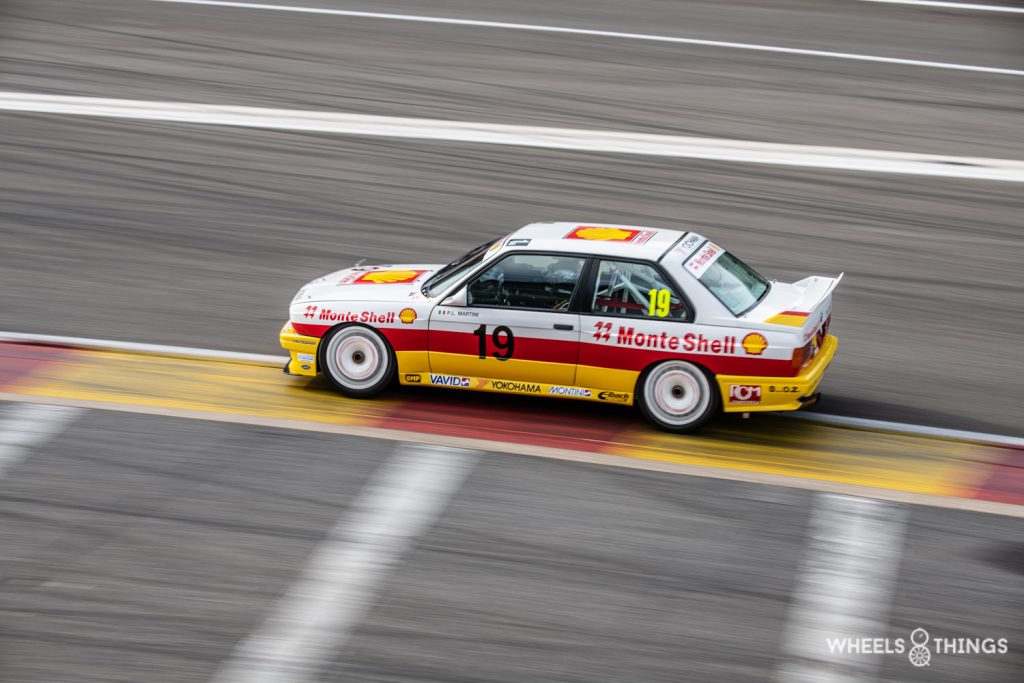
Now, among the 22 participants, there were some nice gems. We saw a brand new BMW M3 in Lease Plan Bigazzi version of 1988 and a BMW Italia 30 CSL, both newly built and therefore marked with the label “replica”. Of course, there were also some original M3s, a BMW 635 Csi and two Nissan Skyline cars. Hats off to the owners who still participate with such valuable cars in a race because of the significant increases in value we see more and more disappearing in museums or private collections and the replicas taking their place.
Both races of this series will be run in wet conditions. And this is of course right up the street for both present Nissan Skyline GTR Group A cars from the Japanese championship of the Ric Wood team. In wet conditions, these four-wheel drive monsters are unstoppable.
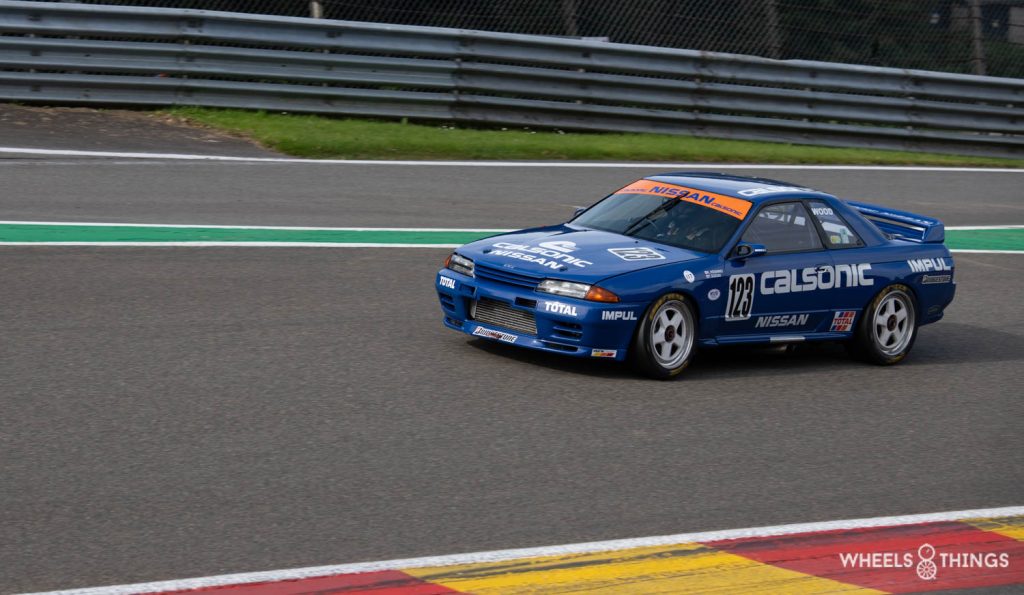
On Saturday they realise the double with the victory for Wood/Hill ahead of Garrad. The BMW M3 of Van Riet is third at more than a minute and a half behind. On Sunday both Nissan’s are again on their way to a double but technical problems make the GTR of team owner Wood fall back to fourth place. Garrad takes over and wins before the Sierra Cosworth of Mensley and Ellis. Third is the BMW 30 CSL of Halusa.
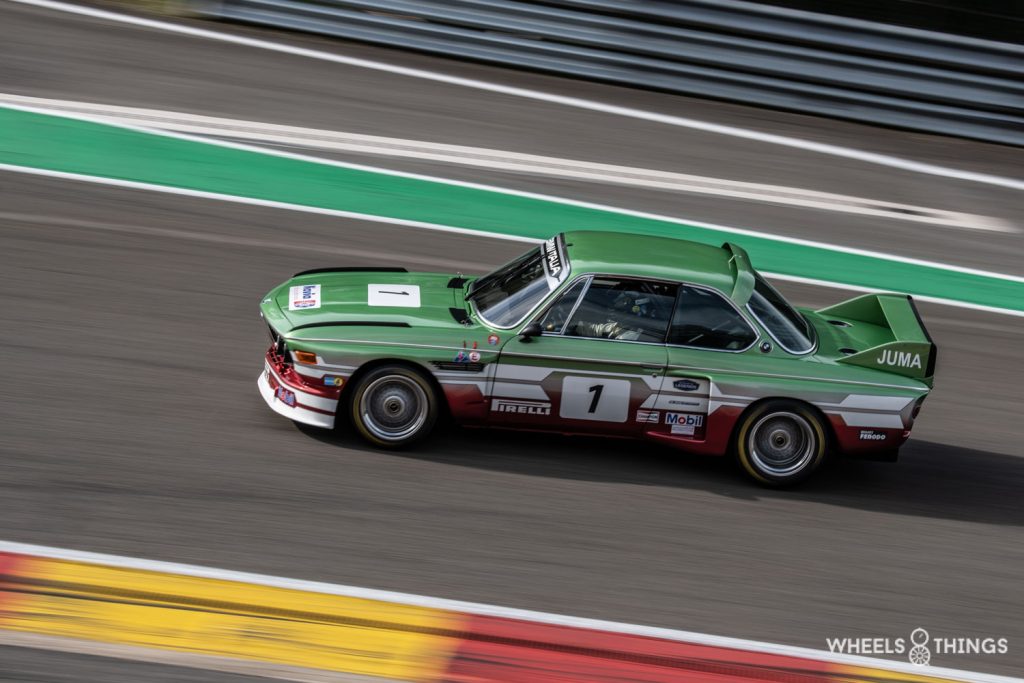
Masters Endurence Legends
We finish with the youngest of the bunch: the cars of the Masters Endurance Championship. These are still fairly recent proto and GT cars from mainly the 24 hours of Le Mans and BPR or FIA GT races of the past twenty years that are no longer used in these races. The big time differences of the original years are much smaller in the historic class. The LMP2 cars are much closer to the LMP1 cars. The cars are no longer used by the factory teams but by smaller private structures that have smaller budgets and the level of the drivers is obviously not of the same calibre. A professional driver who is constantly practising in the simulator and in the car cannot be compared with an amateur driver who drives the same car. Often, the owner will be assisted by a pro pilot who will at the same time teach him the tricks of the trade and how to drive the car. This is not to say that there are no top pilots in this class, because there certainly are!
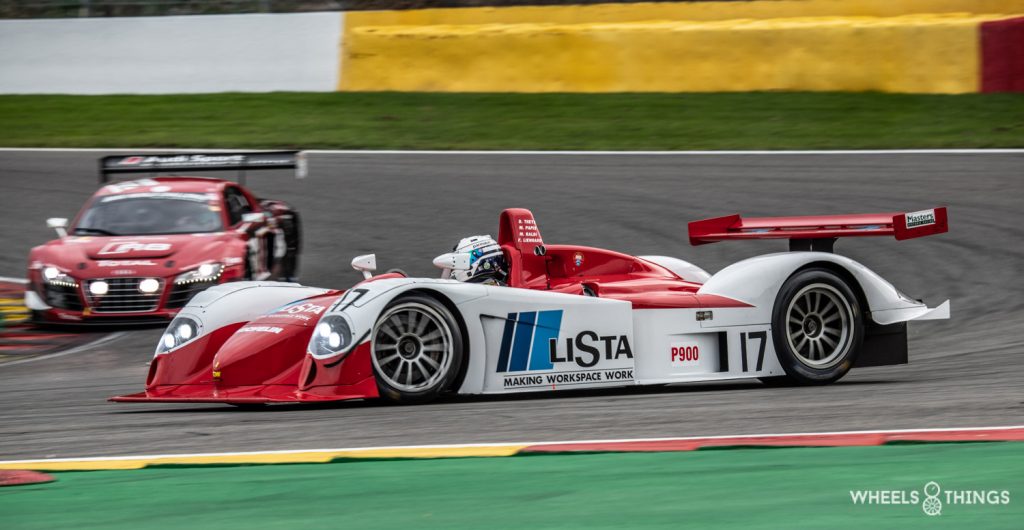
Also in this class, a rather small field with only 24 cars. Other drivers had opted to head for Estoril for a similar series in the Peter Auto Series. There were some real beauties present though, with two Peugeot 908 V12 models, two BR 01 Nissan LMP2 machines, a Riley and Scott MK3C from America, a Gulf Pescarolo, a Lotus LMP2, a Dallara/Oreca LMP2 and the Gulf Prodrive Aston Martin DBR1-2 which, with its atmospheric V12 engine, provided the most beautiful sound of the entire weekend. The prototypes of this class are also the fastest cars of the weekend. Furthermore the traditional GT Porsche’s and Ferrari’s, one of the first GT3 Mclaren’s MP4/12 and two Aston Martin’s.
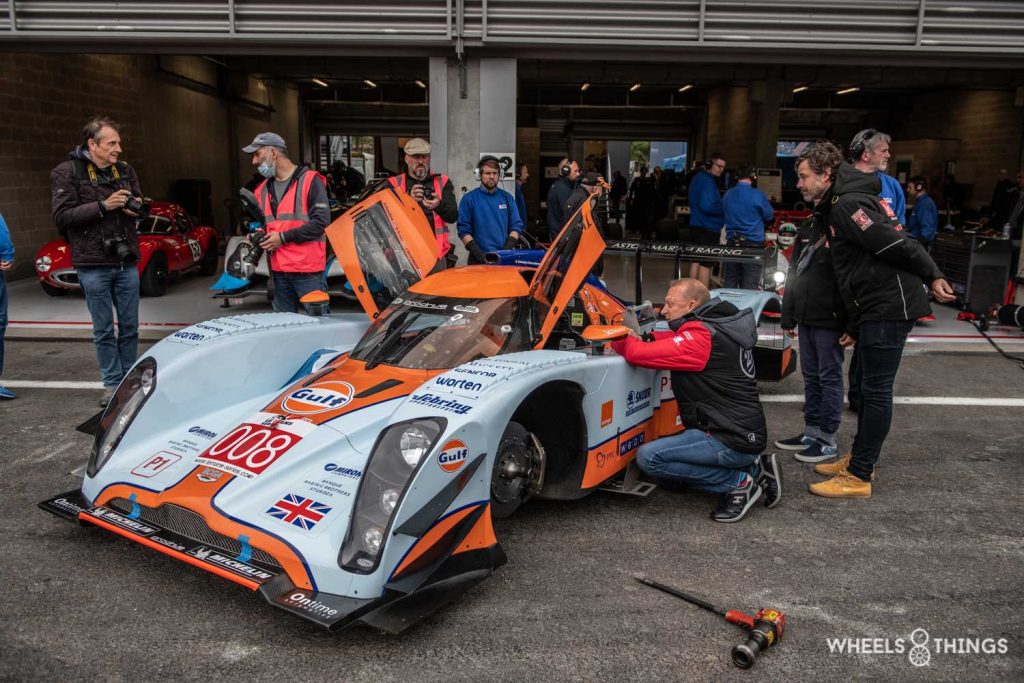
The Aston Martin DBR1-2 starts from pole position but falls back to twelfth in the rankings. There is a win in the first race on Saturday for Shaun Lynn with the Peugeot 908.
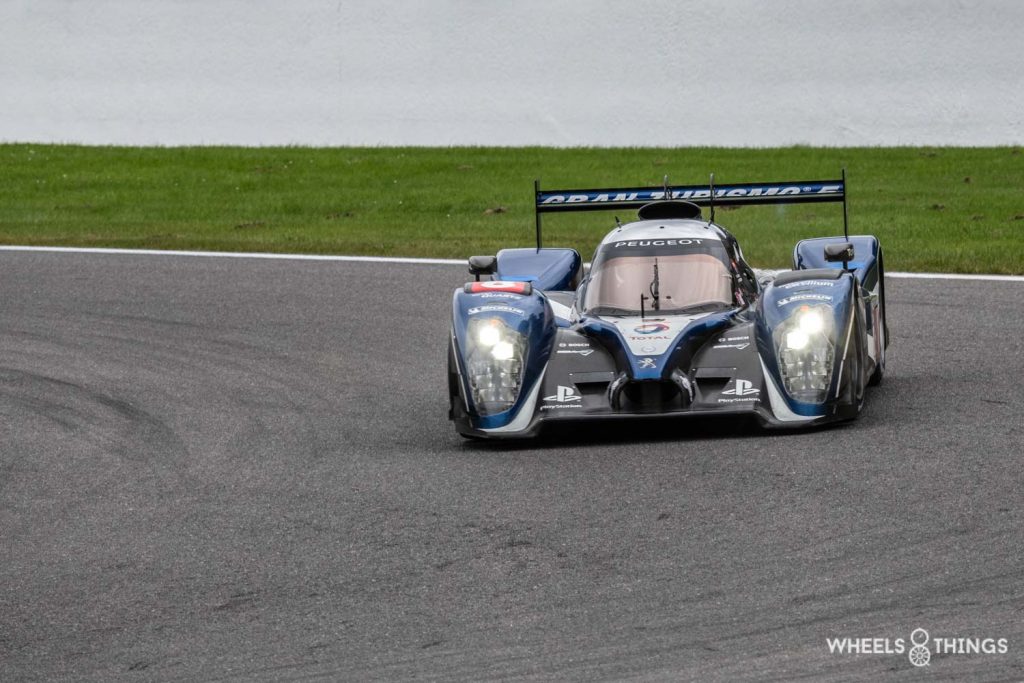
With the arrival of this class, laptops have also made their appearance in classic motor sport. On Sunday, the weather forecast was for a lot of rain. So we saw that in the Peugeot team, the cars ( and even the steering wheel ) were given a “rain” programme. It is indeed perhaps safer to sacrifice a part of the power for a better stability and traction and in this way increase the safety and avoid the risk of accidents.
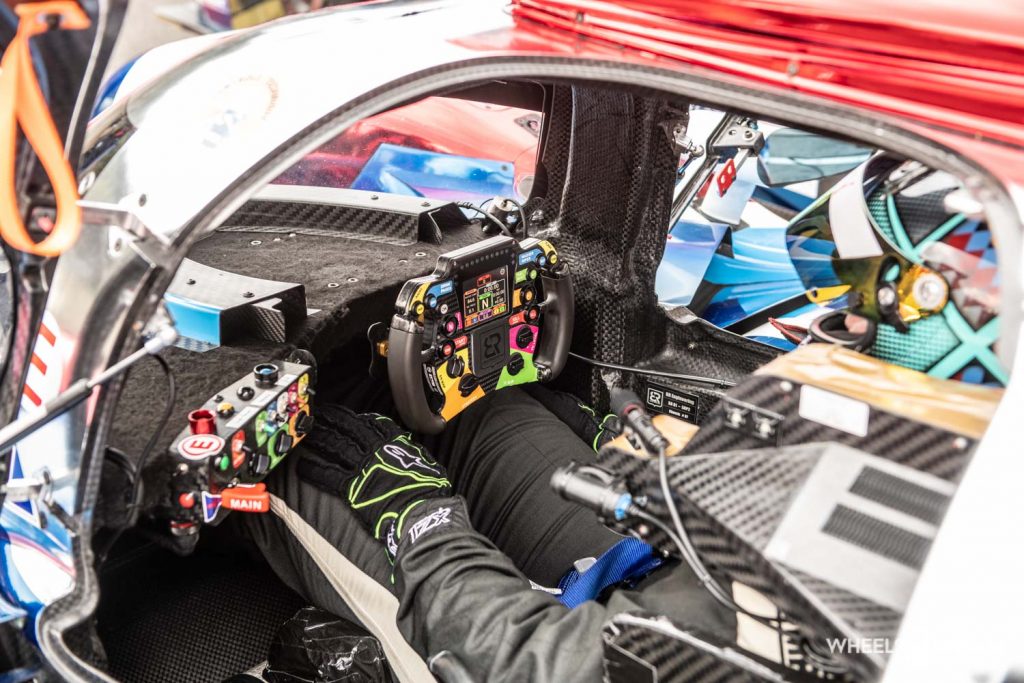
The race was run in the late afternoon and by then most of the rain had passed. It was a little wetter than Saturday but not by much and so we got the same winner with Lynn’s Peugeot making it by far ahead of both Nissan BR 01 SMP cars.
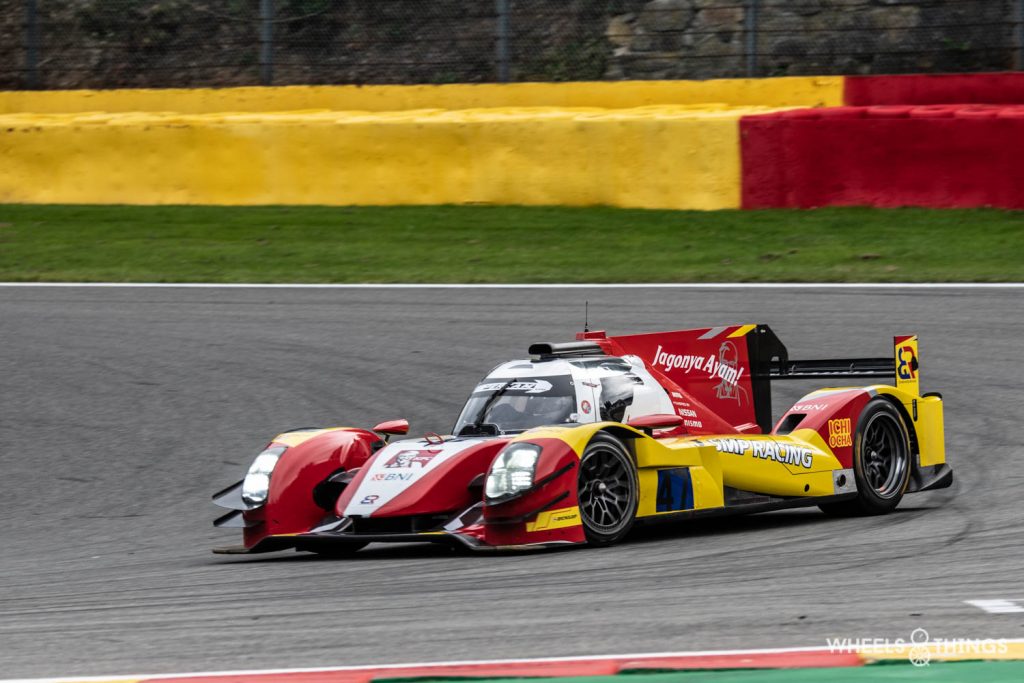
In the GT class, there was a victory on Saturday for the Audi R8 of Oeynhausen-Sierstorpff. On Sunday, it was Mathai and his Aston Martin Vantage who took the top step of the podium.
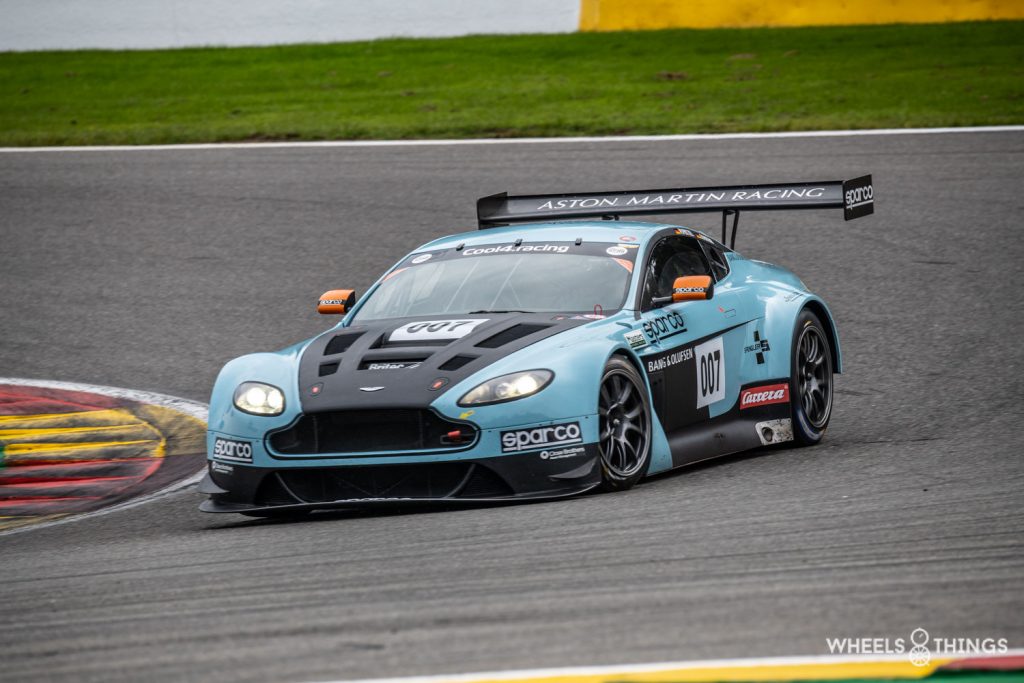
Despite the much smaller number of participants, at times very bad weather and less atmosphere in the paddock, it was still a nice experience after two years. The smell, the sound of the engines, the squealing of the brakes and tyres, the lighting up of the brake discs and some fire spitters……. We had missed it a bit ( actually a bit more ). Fortunately, organiser Roadbook has persevered, even in very difficult circumstances, and has provided for some very nice cars and a lot of spectacle on the circuit. We can only thank them for this and hope that the next edition in 2022 will be as normal as it always was until 2019.
Report: Joris de Cock
Photos: Joris de Cock & Patrick Verheeken
